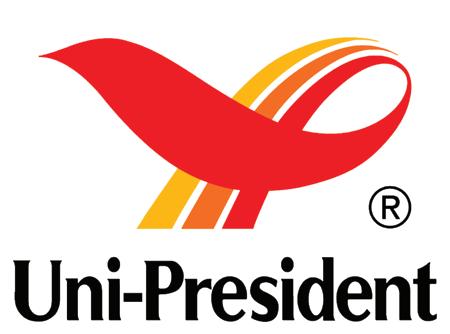















Sheng Long, your professional and trusted aquaculture partner. We are committed to supporting our valuable customers’ success by providing innovation programs with high-performance feeds, healthy shrimp larvae, aquatic probiotics & healthy products and new farming models & technology.

Add: Block A5, Duc Hoa 1 Industrial Park,Duc Hoa District, Long An Province
Tel: (84-272) 3761358 - 3779741 Fax: (84-272) 3761359
Email: thanglong@shenglongbt.com Website: www.shenglongbt.com
Add: Plot No. A-11/1, Part-A, SIPCOT Industrial Park, Thervoykandigai Village, Gummidipoondi Taluk, Thiruvallur District, Tamil Nadu 601202, India.
Tel: 91-44-6790 1001 Fax: 91-44-6790 1017
Email: info@shenglongindia.com Website: www.shenglongindia.com



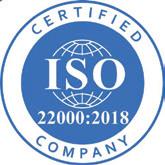

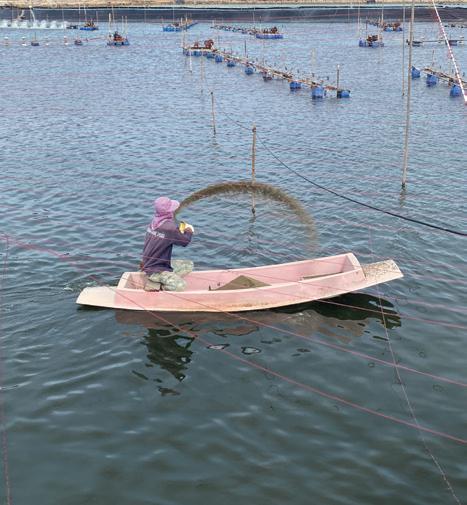
Aquafeeds in 2023: Market Slowdown
From the editor
2 The Challenging Feed Business
Industry News
4 Vietnam’s shrimp industry players meet in Ca Mau
Shrimp Aquaculture
Review on aquafeeds in Asia, p39 Cover photo credit: Aqua Biz Magazine, Thailand.
Editor/Publisher
Zuridah Merican, PhD
Tel: +6012 205 3130
Email: zuridah@aquaasiapac.com
Editorial Coordination
Corporate Media Services P L
Tel: +65 6327 8825/6327 8824
Fax: +65 6223 7314
Email: irene@corpmediapl.com
Web: www.corpmediapl.com
Design and Layout
Words Worth Media Management Pte Ltd
Email: sales@wordsworth.com.sg Web: www.wordsworth.com.sg
AQUA Culture Asia Pacific is published bimonthly by

Aqua Research Pte Ltd
3 Pickering Street, #02-36 Nankin Row, Singapore 048660
Web: www.aquaasiapac.com
Tel: +65 9151 2420
Printed in Singapore by Times Printers Private Limited 18 Tuas Avenue 5 Singapore 639342
Subscriptions
Subscribe via the website at www.aquaasiapac.com
Subscriptions can begin at any time.
Subscriptions rate/year (6 issues): SGD 70, Email: subscribe@aquaasiapac.com
Tel: +65 9151 2420
Fax: +65 6223 7314
Copyright © 2024 Aqua Research Pte Ltd.
All rights reserved. No part of this publication may be reproduced, stored in a retrieval system or transmitted, in any form or by any means, electronic, mechanical, photocopying or otherwise, without the prior permission of the copyright owners.
Aqua Culture Asia Pacific is a print and digital magazine. View E-magazine & Download PDF of past issues for free www.aquaasiapac.com
8 From Madagascar to India: Toward to a successful hatchery business with SPF monodon shrimp.
The Unibio hatchery is setting industry standards, by Zuridah Merican
14 Enhancing quality evaluation and disease management across hatcheries. Tanachaporn Utairungsee and Natthinee Mungkongwongsiri discuss the integration of smart devices and real-time PCR technologies in revolutionising operations.
18 Smart shrimp model for higher productivity
Vannamei shrimp culture with assurance that the farmer has minimal problems in each cycle.
22 A comparison of production costs
This is for shrimp fed low protein feeds and when there is an EHP infection, says B. Ravikumar, Victor Suresh, Gnanasri, Uma Maheswararao and Chandhira Sekar
Interview
24 Innovating for sustainability
Nick Piggot of Nutrition Technologies describes its beginnings and growth trajectories.
Feed Technology
26 No such thing as the “Perfect Ingredient”…
A sobering assessment of where we are in the search for new protein sources following a workshop at ISFNF 2022 by Brett D. Glencross
31 Enhancing aquafeed efficiency for sustainable aquaculture growth
Unlocking protein potential with the use of specific plant extract-based additives. By Pierre Fortin, Nicolas Tanrattana and Sophie Reys
Industry Review- Aquafeeds
35 Unveiling the global feed landscape
Henry Wong on insights from Alltech’s 2023 Global Agrifood survey
39 Aquafeeds in 2023: A market slowdown
Low feed demand as farmers react to low fish/shrimp farmgate prices
41 Aquafeed R&D in Soc Trang
Sheng Long Bio-Tech runs this 18ha facility for marine shrimp and freshwater fish.
42 Ten years in India’s aquafeed market
An interview with Seshu Akkina at Deepak Nexgen Feeds
44 Maximising shrimp farm performance: Managing shrimp feeds and feeding
A discussion at Aqua India 2024.
Sustainable Aquaculture
46 What it takes for sustainability in feed and feeding management
Some takeaways from the Feed and Feed Ingredients panel at Global Shrimp Forum 2023
49 Asian swamp eel in Vietnam
The goal is to transform for local and export markets.
Show Review
54 Victam Asia/Health & Nutrition Asia 2024
Company & Event News
 Zuridah Merican
Zuridah Merican
The feed segment has always been a promoter and supporter of the aquaculture industry from providing quality feed, technical service to credit to farmers. The past 4 years have seen a very startle change in the challenges and can be divided into two phases. The recent Alltech Feed survey for 2023 showed a 4% drop in aquafeed consumption compared to the previous year. Market prices of shrimp and fish have overtaken feed cost as the major concern for the industry. Today, not only is the feed segment suffering, but there is also little interest in their plight. How do we make sense of this?
Let us review the two phases. The years 2021-2022 saw feed ingredient prices escalate due to the Ukraine war, Covid lockdown and consequential supply chain woes. Companies were forced to increase feed prices but were always behind the curve leading to losses. In certain countries, feed companies were not allowed to increase prices without government approval. This resulted in raw material prices exceeding 90% of the net unit selling prices of feed. However, 2023 saw a significant easing in many feed ingredient prices
We strive to be the beacon for the regional aquaculture industry.
We will be the window to the world for Asia-Pacific aquaculture producers and a door to the market for international suppliers.
We strive to be the forum for the development of self-regulation in the Industry.
and feed prices dropped accordingly, but feed demand has also dropped affecting mill capacity utilisation and hence economies of scale in production cost. Asia has been particularly affected as the prices of its major export species i.e. shrimp, tilapia and pangasius have dropped as supply exceeds demand. Many shrimp farmers have either skipped cycles or reduced stocking densities resulting in lower feed demand. The challenge has now changed from negative margins to a loss of volume.
There are new challenges and innovations coming onstream so how do we navigate this business?
The new challenge comes in the form of sustainability which costs money and seems to sit squarely on the shoulders of the feed segment today. But the major question is what is the definition of sustainability and how does one measure this? This has been continuously asked from the Global Shrimp Forum 2023 and The Aquaculture Round Table Series (TARS) 2023. Many have proposed Life Cycle Assessments in terms of CO2 emitted per kg of commodity but the assumptions for this measure require fine tuning. Then how do we spread the cost increase along the supply chain? The consumer wants it but may not be willing to pay for it.
The feed segment is not standing still – there are innovations.
1. Smart feeding with autofeeders is a key process to improving efficiency, reducing sludge buildup in ponds, and reducing pollution in cage farming. However, the uptake has been slow in Asia. One argument is that Asian aquaculture is fragmented and comprises many smaller farmers who are reluctant to pay for such services.
2. Low crude protein shrimp feeds based on precision nutrition can reduce feed cost. Within Asia, Indonesia has been leading with this concept which has helped reduce feed cost, cost of production and pond pollution.
3. R&D for marine fish species. If Asia wants to develop the barramundi as its major marine species, then more precise nutrition must go into feeds specific for various stages of the life cycle.
4. Alternative feed ingredients. The growth in aquaculture feeds will require more feed ingredients. Fishmeal and marine sourced ingredients will become strategic and must be supplemented by high protein meal from plant sources, co-products from renewable energy, insect meals and single cell proteins.
5. The argument for and against GMO feed ingredients must be fact based, balanced, and viewed holistically. Without GMO Soy and Corn today, there will be insufficient feed ingredients to feed our livestock and aquaculture industries. Imagine the rise in feed cost for producers and the price for the consumers?
6. Functional feed is a competitive business. Uptake has been slower than anticipated in Asia due to two major reasons. Poor understanding in its use as a preventive measure and consequential lack of trust on the part of farmers. It is viewed by farmers as insurance, and many are willing to take the risk when margins become negative. The hope is for the new generation of farmers who are willing to focus on improving productivity and not cost saving.
There is no doubt that the business is more challenging than usual but this pullback in aquafeed demand is only temporary, and the industry must be prepared for the next phase of growth.
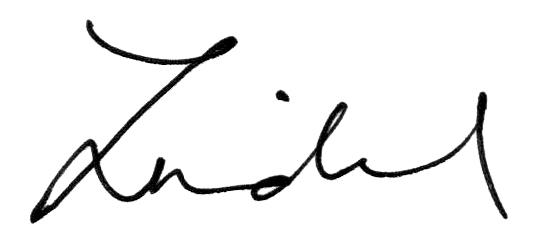
If you have any comments, please email: zuridah@aquaasiapac.com
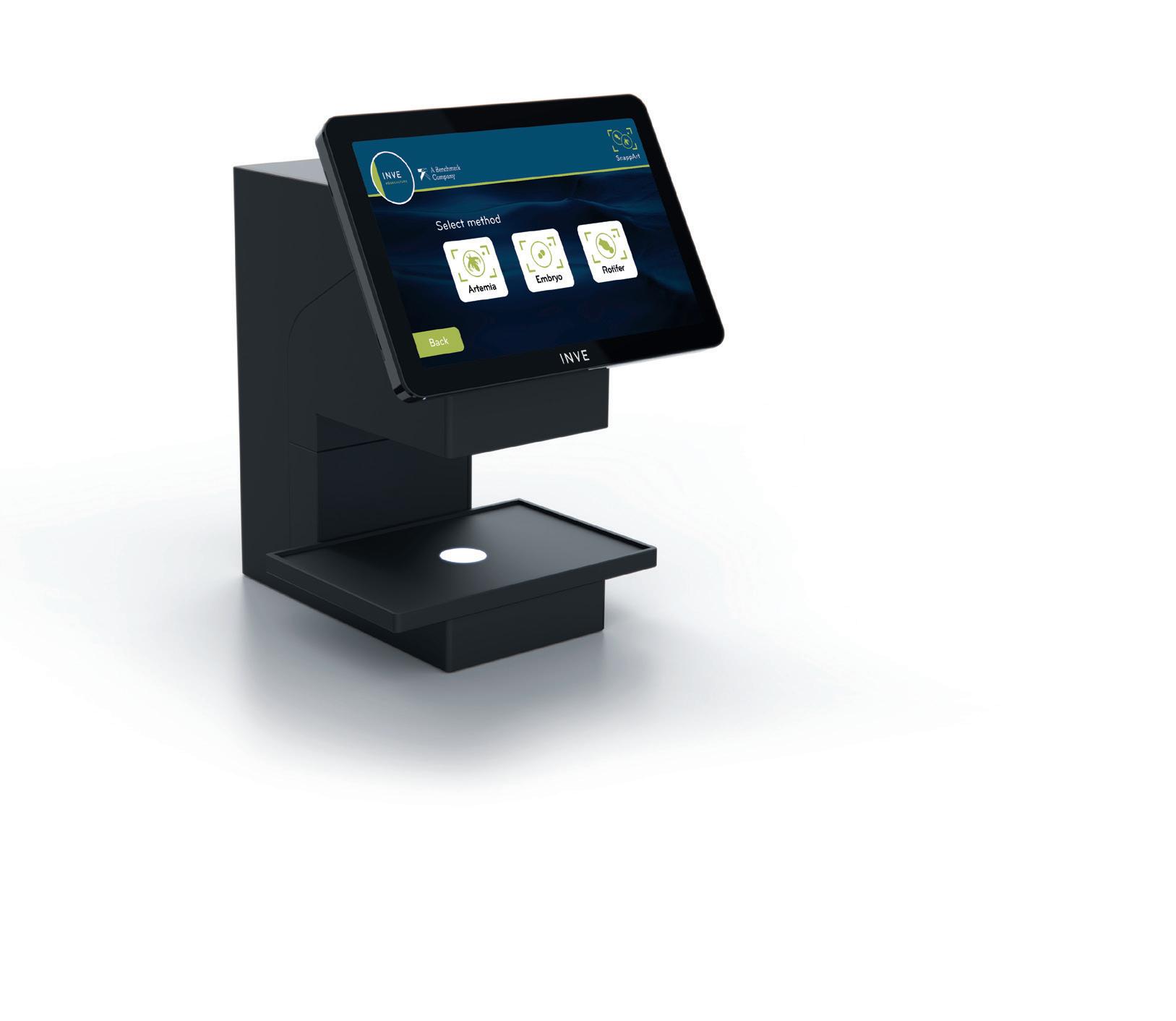











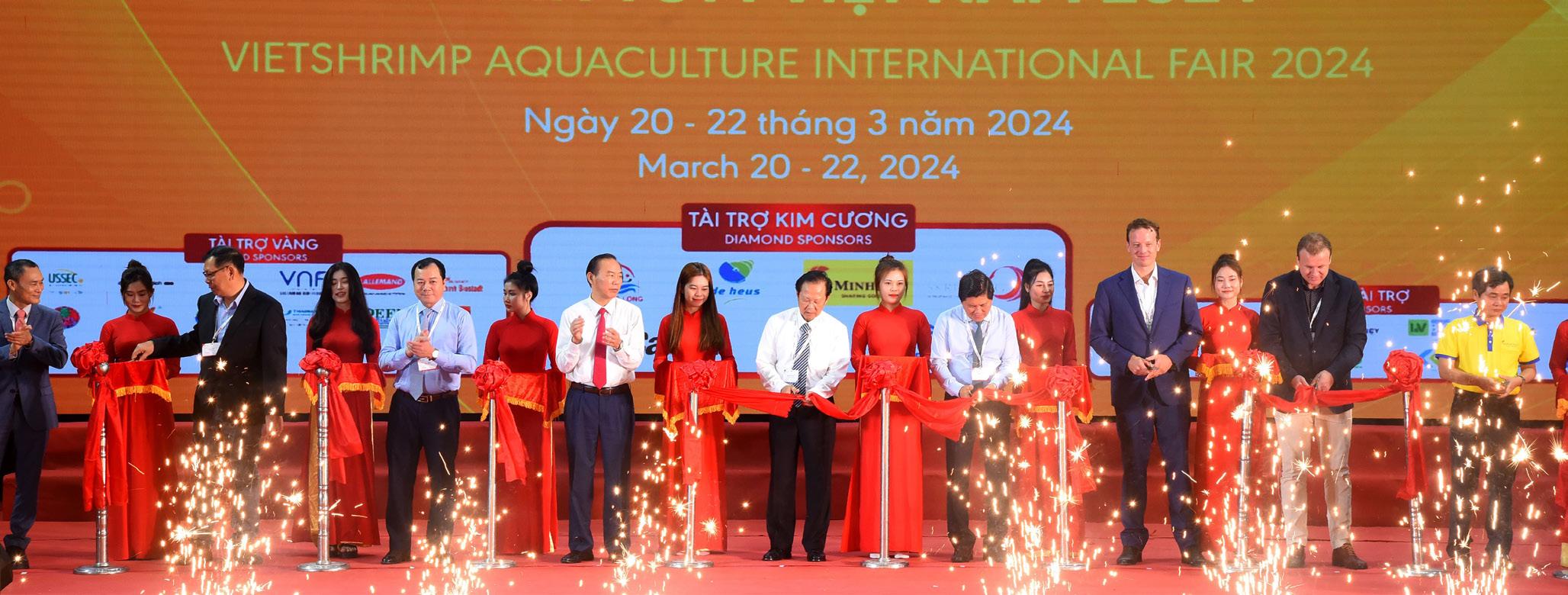
Ca Mau, Vietnam’s southernmost province is home to the largest shrimp farming area. In 2023, it produced 231,000 tonnes, from 278,000ha of farming area. This was 22% of the total shrimp production in 2023 and 40% of total area for shrimp farming. Some 20,000ha are dedicated to extensive farming to produce certified organic black tiger shrimp. The farming of vannamei shrimp is in highly intensive systems, such as the three-stage super intensive vannamei model in 0.45ha producing 60-70 tonnes/crop. In 2023, shrimp exports totalled USD1 billion accounting for 30% of the country’s shrimp export value.
In March, organisers of Vietshrimp Aquaculture International Fair 2024, Vietnam Aquaculture Magazine Thuy San, chose Ca Mau City for its 2024 edition. The event- “in company with shrimp farmers” -, co-hosted by the Vietnam Directorate of Fisheries, the Vietnam Fisheries Society (VINAFIS) and Ca Mau province’s Department of Agriculture and Rural Development, had 215 booths comprising 150 domestic and international exhibitors. The three-day fair also included four seminars on technology transfer in the shrimp value chain and towards a sustainable shrimp industry. The target was value enhancement of Vietnam’s shrimp industry and how can its shrimp farming industry strive for higher efficiency.
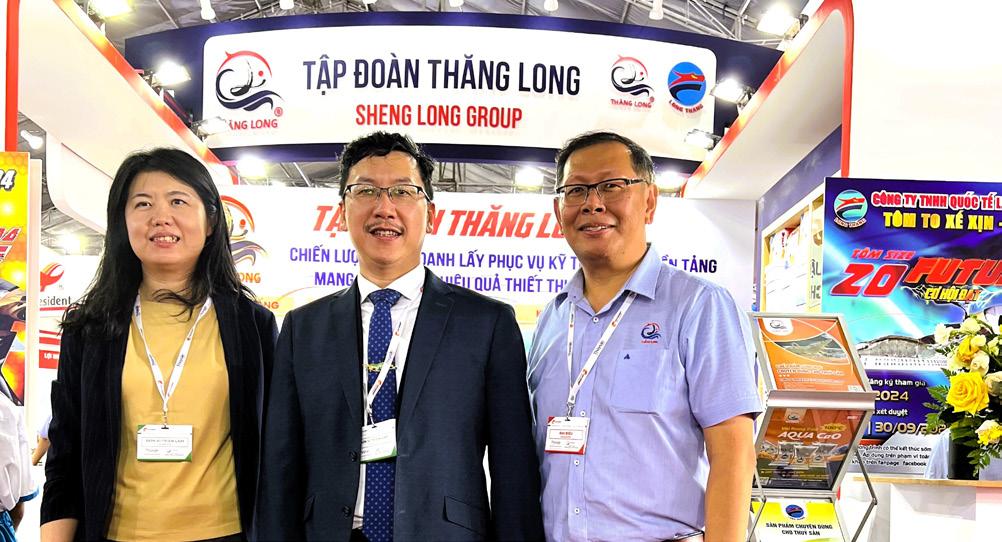

Speaking at the opening ceremony, Deputy Minister of Agriculture and Rural Development Phung Duc Tien said that Vietshrimp not only contributes to promoting and introducing the potential, strengths, image and brand of Vietnamese shrimp but is also an opportunity for authorities from central to the local level, experts, scientists, businesses, cooperatives and farmers to exchange and update the situation on new scientific and technical advances. This event also connects businesses to expand and develop markets; connects production and consumption along the value chain and at the same time, discuss measures to overcome industry limitations and shortcomings.
“We believe that Vietshrimp 2024 is a bridge between the business community, partners and customers; it is a forum for the state, scientists, businesses and farmers to join hands to find solutions to develop the shrimp industry effectively and sustainably; maintain Vietnam’s position in the world market, connect all sectors with the world; at the same time, provide learning experiences, and techniques of advanced countries to upgrade the Vietnamese shrimp industry for the future,”

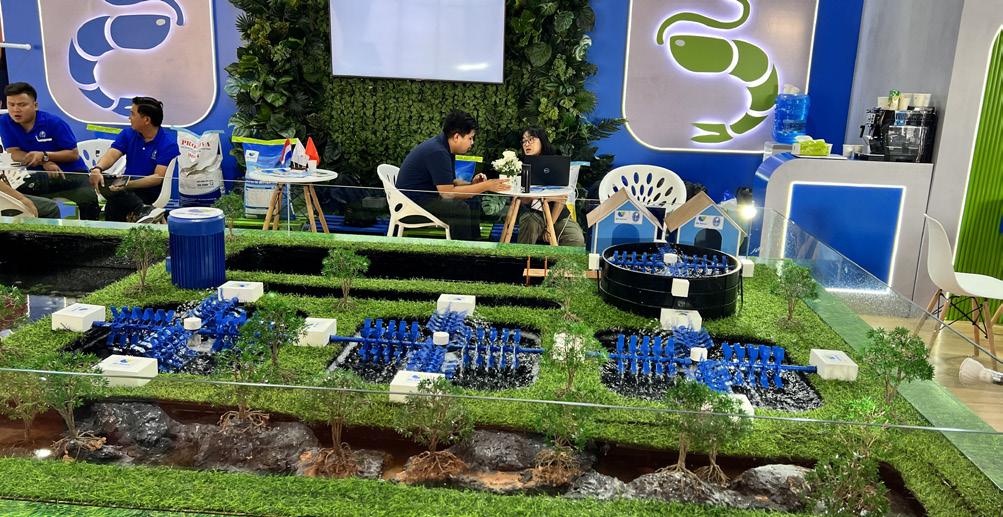
The country’s shrimp farming area reached 737,000ha last year. Although farming areas have not increased, total shrimp production increased by 5.5% compared to 2022. Entering 2024, the shrimp industry players present at the event expect to face many difficulties and challenges. The seminar portion of Vietshrimp demonstrated the wish of all industry players to address challenges, particularly relating to water quality and high costs of production.
During the opening ceremony, officials discussed the challenges facing aquaculture in the Mekong Delta. Vietnam is among the five countries which will be badly affected by climate change, with aquaculture and rice planting as the sectors most affected. In February 2024, the Australia-Vietnam Blueprint for Climate-Smart Agriculture: “Advancing Climate-Smart Shrimp and Rice Industries in Vietnam, was launched. This will serve as a guide for Vietnamese and Australian counterparts on climate-smart agriculture. It explores the challenges and opportunities in Vietnam’s rice and shrimp sectors and highlights how collaboration can accelerate this transformation. In his presentation, Dr Tung Hoang, CSIRO Agriculture & Food said that Vietnam is one of the most vulnerable countries to climate changes which may result in 24% reduction of arable land. Saline intrusion may benefit shrimp farming, but climate change also increases stress to the animal and induces disease outbreaks leading to higher costs of inputs.
As Vietnam’s shrimp farming continues to advance and adopt technology, Vietshrimp provides an opportunity for suppliers along the value chain as well as startups to showcase their products. Cargill Vietnam took this opportunity to officially launch its range of extruded shrimp feeds produced in Vietnam (see pages 5859). Michel Leger, Skretting Vietnam, presented on a new product focussed on parasite management. This is to counter Enterocytozoon hepatopenaei (EHP) and gregarines by reducing the ability of the parasites to replicate and attach to the host.
A year ago, Sheng Long Bio-Tech introduced its hatchery feeds with 45% crude protein. “The price is very competitive against well-known international brands” said Jeff Chuang Jie Cheng, Managing Director. “Attractability is high, water stability is good and we recommend for PL 9-10 over 10-15 days. This is called Beikesu, which in Chinese means grow faster.”
“It is common to find in the market lower protein grower feeds such as 35% in India and 30% in Indonesia. However, in Vietnam, producers are still bent on using high protein grower feed with 38% protein. Reducing protein in feeds is interesting in terms of reducing feed costs,” said Leger. Reducing protein by 2% (from 38% to 36% ) with different levels of fishmeal did not impact FCR and growth. There is good potential of using lower protein feed and Skretting will launch a lower cost feed based on this finding.
Similar to displays of innovative farming models at the booths of leading feed companies in 2023, there were upgraded versions at this year’s event. Most include multiple steps for water treatment, a nursery and multiple grow-out phases. Le Van Khoa, National Technical Director, Grobest presented a multi-stage shrimp farming model which is an open model - suitable for soil conditions and weather and climate of each region and allows farmers to build a completely new farm or upgrade an old one based on existing foundations. He said that the cost of production in Vietnam for size 50/kg is USD4/ kg, which is the highest in Asia, and feed accounted for 64% of the cost of production at USD2.56. The model developed was to optimise farm performance while using efficiently electricity and water and reduce cost per 1 kg of shrimp. According to Grobest, as it moved from Grofarm to GrofarmPro failure rates have dropped from 16% in 2021 to 7% in 2023. Concurrently, profitability has increased.
Nguyen Khac Hai, Sheng Long Biotech discussed the developments with the Thang Long Smart System (see pages 18-21) which has now advanced to version 2. Hai gave examples of farmers successfully applying this model in many provinces in the Mekong Delta. There is also a version developed for earthen ponds. Skretting has integrated its range of products to include water quality management into its ‘success’ program. This promises a survival rate increase of 15~20%; higher growth rate of ~10%; antibiotic-free shrimp which fetch higher prices; lower disease outbreaks; and production cost improved ~15%.

Uni President Vietnam displayed their new range of ready-to-eat shrimp products.
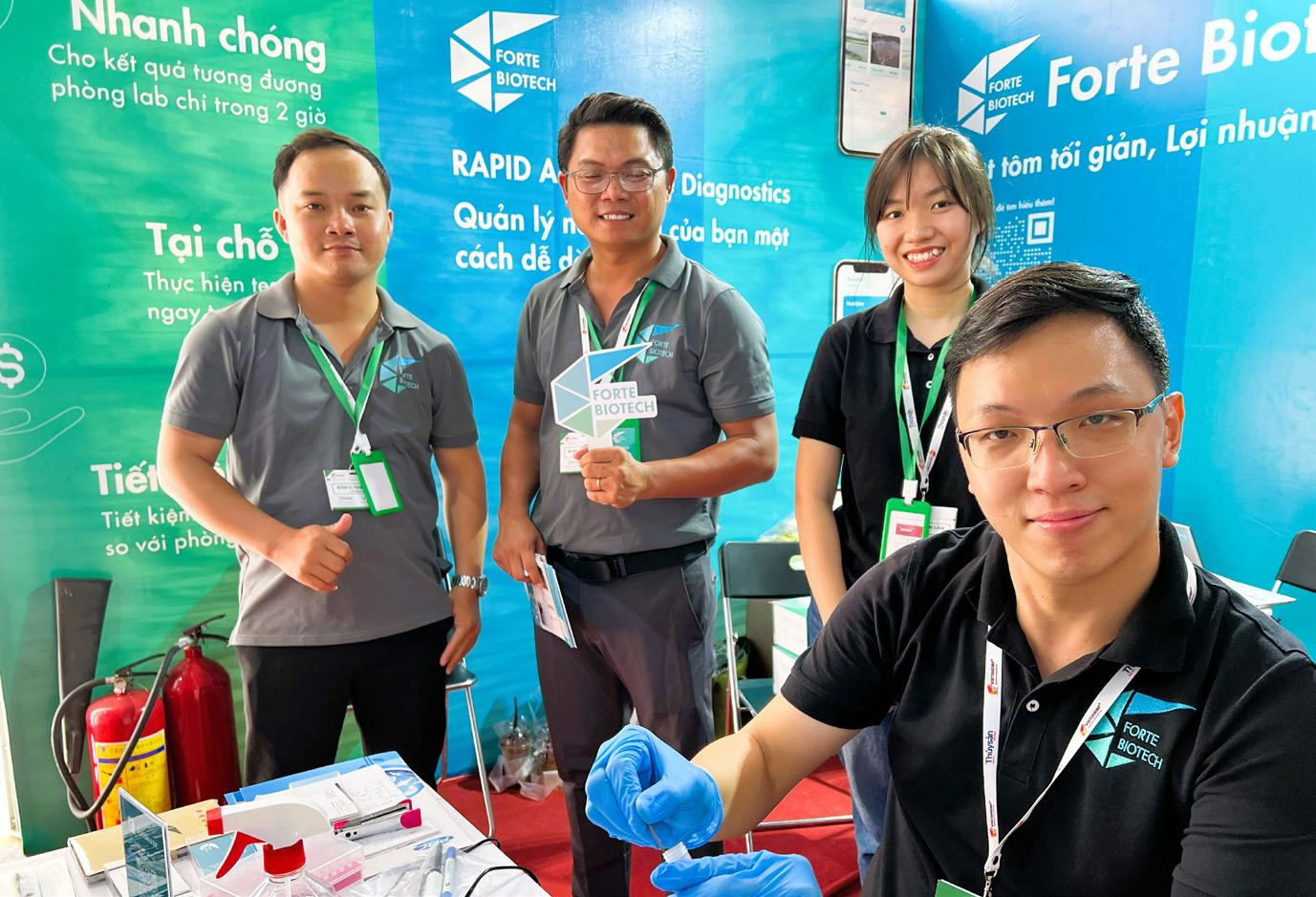
Vietnam has an active startup ecosystem and is also the place for startups to work with farmers and industry players. The rapidly expanding Forte Biotech works closely with shrimp farmers in Vietnam to apply its easy to use, on site diagnostic kit (RAPID). The aim is to help farmers detect infections early, allowing them to take mitigative actions. A new app gives the convenience of centralised, accurate information. At their booth, Kit Yong and Michael Nguyen, co-founders and team members demonstrated to farmers the diagnostics capability of their innovation which can quickly spot diseases like white spot syndrome virus (WSSV), EHP, and acute hepatopancreatic necrosis disease (AHPND) in just 50 minutes. Founded in Vietnam and Singapore, Forte Biotech is now expanding its reach across Southeast Asia.
Tomota has a farm management system with enterprise resource planning and AI features, which it has already deployed in some large corporate farms. It also has operational and maintenance support for corporate farms
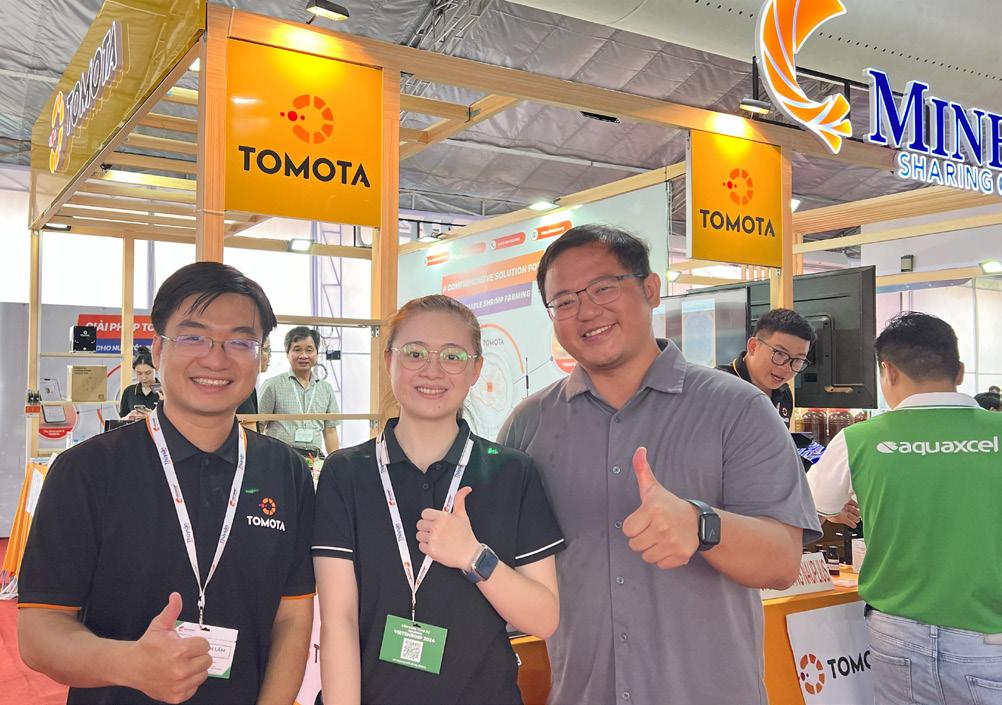
such as at Minh Phu’s farms. In a presentation, it listed its success in the digital transformation at these farms resulting in 30% increase in productivity, large reduction of staff on night shifts, detection equipment failures and reduction of less than 7% daily water exchange. It also has Tomota S3, for counting post-larvae and sizing shrimp.
Tepbac is changing Vietnam’s aquaculture via the power of information and technology. It has a website supplying industry information. Farmext is a farm management platform which allows farms to monitor production at all times, via mobile and computer and automatic water monitoring to measure pH, oxygen, temperature, salinity etc, 24/7 easily and automatically.
Dr Nguyen Tan Sy from the Institute of Aquaculture, Nha Trang University discussed work using a microbial protein to control bacterial diseases in shrimp. These diseases include AHPND and translucent post-larvae disease (TPD). Recently, scientists at the Institute conducted experiments supplementing microbial protein into feed. The results showed that shrimp immunity was enhanced, manifested through increased total haemocyte count, increased phenoloxidase (PO) and lysozyme levels.
David Kawahigashi, Vannamei 101 compared farming practices in Ecuador and Vietnam. He said Ecuador’s exponential increase in production is attributed to the multi-phase system with 5 cycles/year, genetics with faster growth strains and recirculation aquaculture system (RAS) of the entire farm. Another contribution to lower cost of production is the use of acoustic feeding systems. Some 36% of farms are using systems which improve FCR by 0.2-0.3. There was improved nutrition with extruded feed. The cost of production is USD2.00/ kg. for 20g shrimp and feed costs USD1 –1.3/kg. Many farms are using synbiotics to reduce feeding rates.

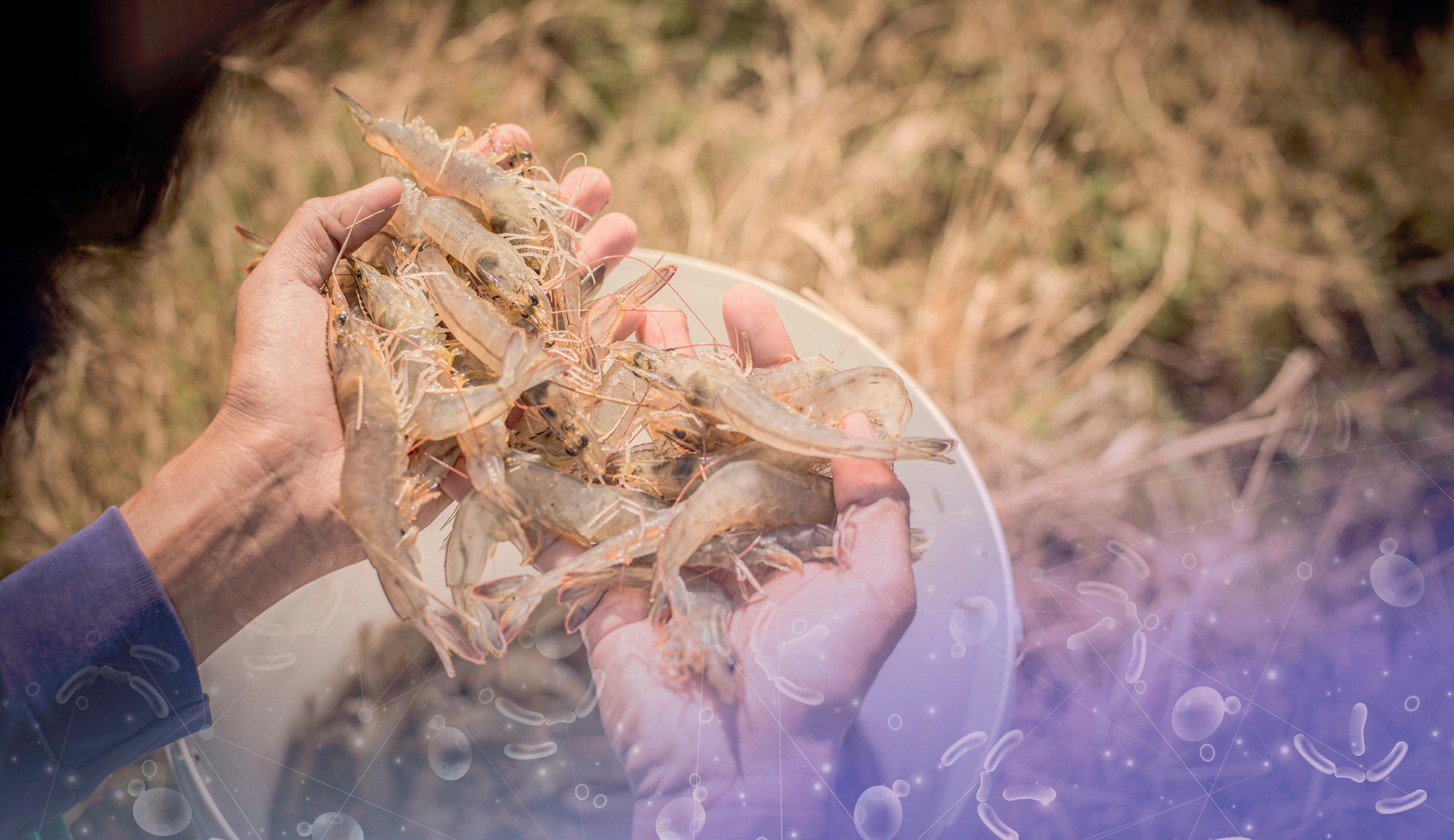
SPECIFIC FOR YOUR SUCCESS
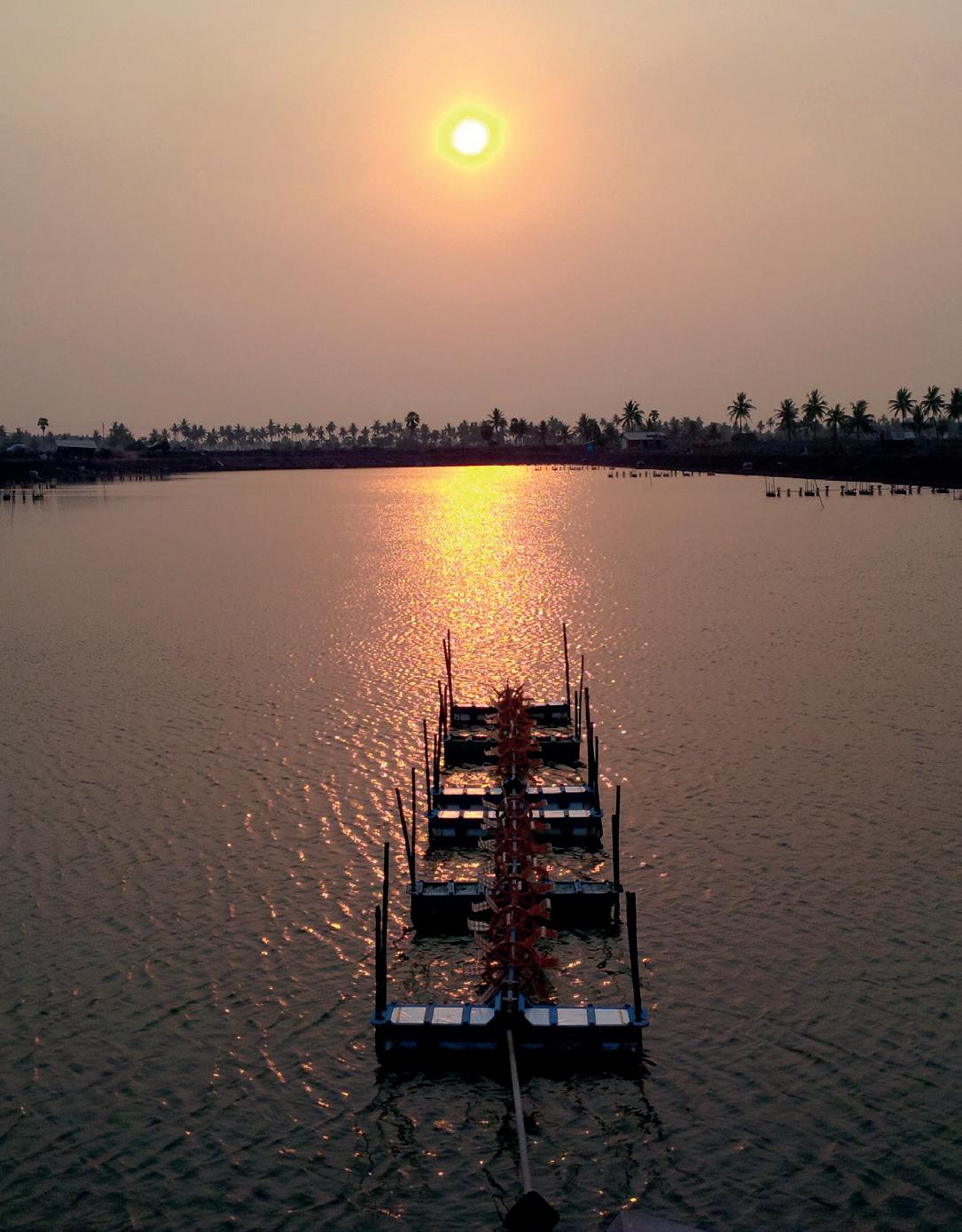
Animals robustness and resilience comes from within. We believe that’s never been more true than today.
Our passion is harnessing the natural power of yeast and bacteria to support health, well-being and performance of all farmed aquatic species.
We help our industry partners and farmers sustainably feeding and farming shrimp with a complete range of microbial solutions for: gut health, immune support, antioxidant balance and micro-nutrition pond water and soil quality.

Setting an industry standard comes with particular attention to quality, strict codes on practices and a proprietary hatching technology
By Zuridah Merican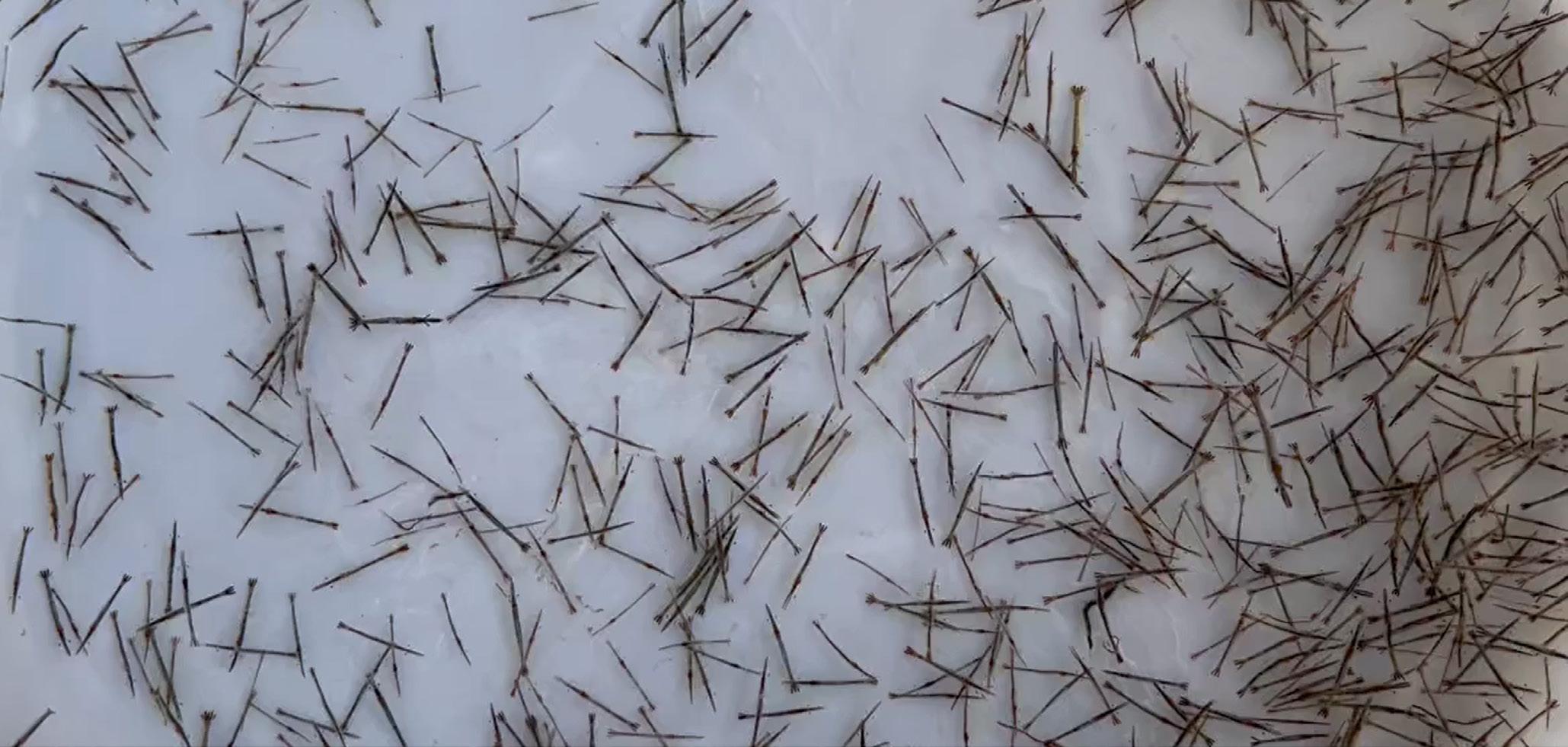
Uniform and clean PL16 for a customer.
Post larvae from specific pathogen free (SPF) Penaeus monodon broodstock, available since 2021, have been a new lifeline for many shrimp farmers in India. It has fuelled the current resurgence in monodon shrimp farming. The 2023 production estimate announced at Aqua India 2024 in February, was 39,000 tonnes of monodon shrimp., alongside 811,000 tonnes of Penaeus vannamei (Reddy, 2024). It is important to note that the return of the monodon shrimp is helping some farmers overcome some production woes with vannamei shrimp farming, from crop failures particularly over the hot summer months when temperatures are very high, disease problems, supply glut and low farmgate prices.
At the packing sta.on, uniform and clean PL16 for a customer.
pull factor for the shift between monodon and vannamei shrimp farming in India. In 2023, Duraisamy said that in Gujarat, the ratio of monodon: vannamei was 1:1, from a predominant vannamei farming in 2022.
Monodon shrimp hatcheries have a small window of demand since there is only one crop/year. In general, stocking occurs from February to April in all major shrimp farming areas in India such as Andhra Pradesh and Gujarat. The post larvae stocking density is around 5-10PL/m2 , up to 15PL/m2 in Tamil Nadu and Andhra Pradesh, and 20-30PL/ m2 in Gujarat. According to Duraisamy (2024), monodon shrimp farms in Gujarat, Andhra Pradesh and Tamil Nadu use post larvae from SPF broodstocks, and only those in Kerala and West Bengal continue farming using post larvae from wild broodstocks. Currently, there are three sources of SPF monodon broodstocks: Aqualma, Moana and the Rajiv Gandhi Centre for Aquaculture (RGCA). The demand is 1.5 billion PL/year and this is expected to grow in the coming years.
The average harvest size is 50g achieved in 4-5 months but as prices are much better for large sizes, many farmers opt to harvest up to 100g shrimp which require a culture period of 8 months at survival rates of 80%. However, low farmgate prices for both species have become a
India’s Coastal Aquaculture Authority (CAA) has determined that hatcheries can only produce one shrimp species i.e. either monodon or vannamei. Therefore, for hatcheries producing monodon post larvae, this small window of demand is a major business constraint. On the contrary, hatcheries producing vannamei post larvae have a larger market since farmers have at least two cycles or more when they harvest small sized shrimp. Vannamei post larvae sell at USD4/1,000 PL and farmers veer towards cheaper post larvae when farmgate shrimp prices are low, despite the general trend to reduce stocking density to 2025PL/m2 from 40-50PL/m2
The post larvae market is extremely reliant on farmgate prices. Industry reported that since August 2022, post larvae demand began to drop, as farmgate prices declined. This trend continued into 2023 as farmers were uncertain on the direction of prices and some stopped stocking. In comparison, 2021 and 2022 (until August) were good years for the post larvae market. Farmers also had cash flow problems with delayed payments by processors which affected post larvae purchases. In India, there are few farms producing vannamei alongside monodon shrimp. These are mainly large conglomerate farms with larger areas.
“The biggest challenge for us and other hatcheries is the one crop cycle, and we only have three months to produce and market post larvae. We bring broodstocks at the end of November and acclimatise them for 30-35 days before ablation. The other challenge is that this period is the rainy season, and we need to maintain salinity. Our animals must

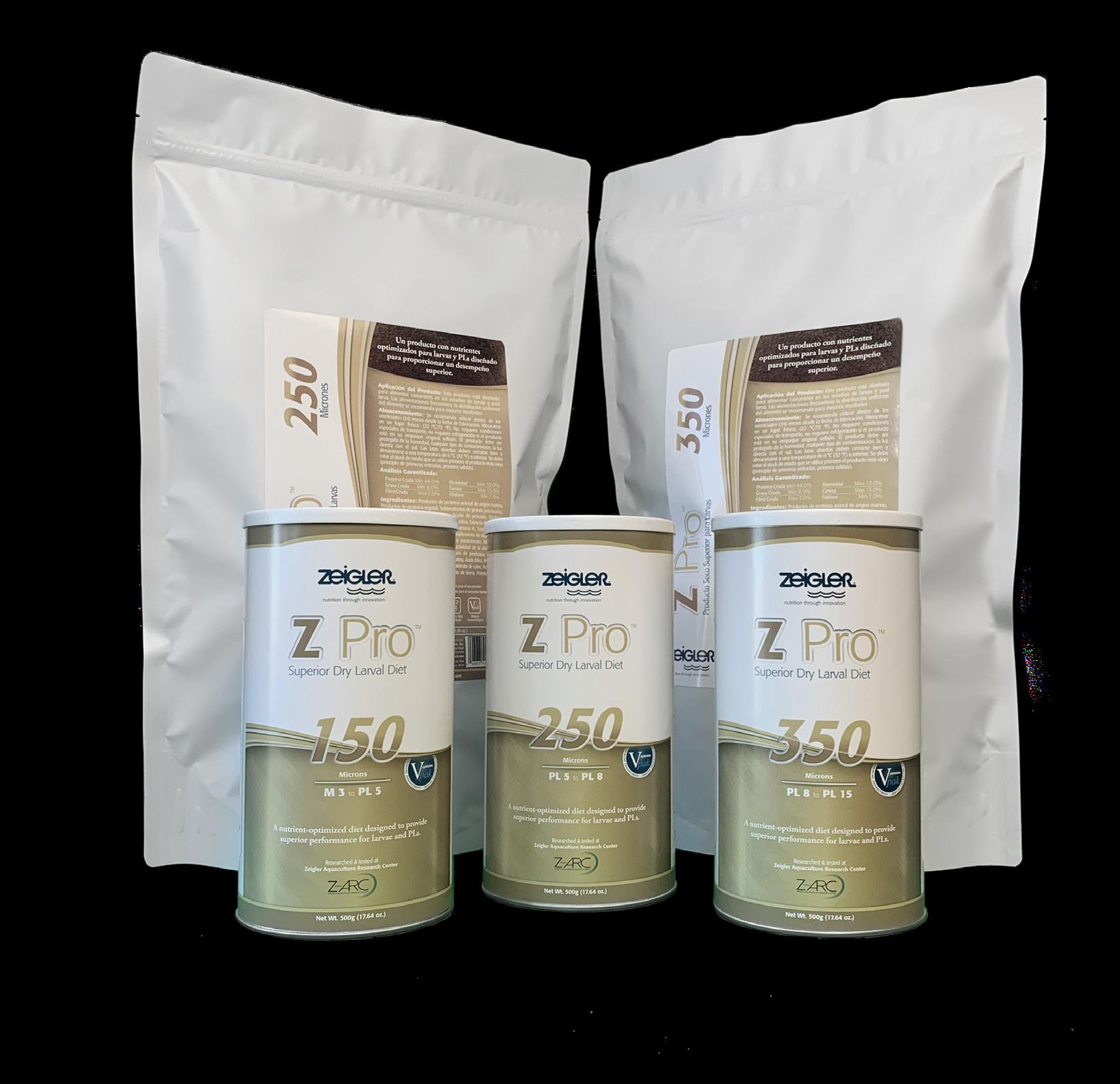
be stress-free to perform well and luckily, we have the advantage of our experience working in Madagascar. We have only 4% mortality,” said Easwara Prasad P., consultant to the Unibio hatchery, during a visit in February.
India’s Unibio group, part of the joint venture with Unibio Holding, an associate company of Aqualma (Unima Group) in Madagascar began full operations in 2022 at its hatchery in Mugaiyur, Tamil Nadu, around 2 hours drive from Chennai. In India, the group has three associated hatcheries: MAS Aqua Techniks in Nellore, Golden Marine Harvest in Marakanam, Tamil Nadu and UniBay Aquabreeding in Visakhapatnam, Andhra Pradesh.
Previously, a vannamei shrimp hatchery, this facility in Mugaiyur, covering an area of 2ha, underwent considerable modifications and additions to meet the needs for monodon post larvae production. These include the complete renovation and construction of maturation sheds and a new PLRT (post larvae rearing tanks) section. The hatchery launched its first batch of post larvae on March 23, 2021.
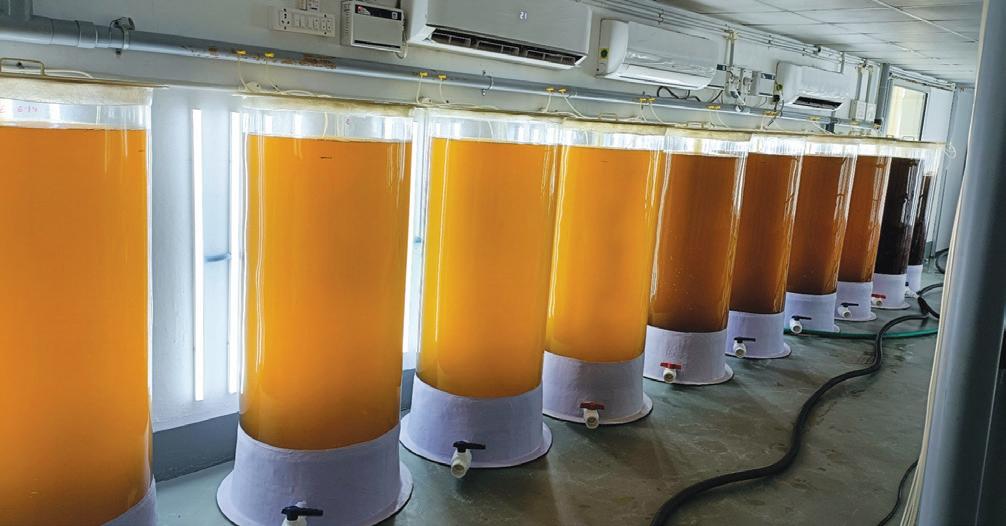
“Unibio’s broodstock from Madagascar is the 20th generation and we know that post larvae from such broodstocks are more resilient than from those produced using wild broodstocks. It is possible to get 4-5 spawns/ female during 3 months of use for nauplii production. Fecundity can be as high as 500,000 to 700,000 nauplii for the larger 130-140g broodstock,” said Prasad.
Unibio sells post larvae at USD12/1,000 PL while hatcheries using wild broodstocks sell them at USD4/1,000 PL. “Although not a usual practice, we can grow post larvae to larger sizes over 10 days in a nursery system and offer to farmers at USD15/1,000 PL. However, today, farmers are not ready to purchase and stock larger post larvae.” In the future the post larvae prices may come down to USD7.0-8.0/1,000 PL if the demand goes up when harvesting sizes at 25-35g becomes viable.
In 2023, despite difficult times with low farmgate prices, Unibio managed to sell about 500 million post larvae (PL12-15). “More than 90% of our farmers reported good growth and good survival rates. Since they are happy, we are happy too. This set the base for this year’s projection of 750 million post larvae production.”
The quick transition to successful production in India is attributed to 40 years of experience of the management team, replicating their knowledge in operating the hatchery and farm operations at Aqualma in Madagascar to this facility in India.
luckily, we have the advantage of our experience working in Madagascar. mortality,” said Easwara Prasad P., consultant to the Unibio hatchery
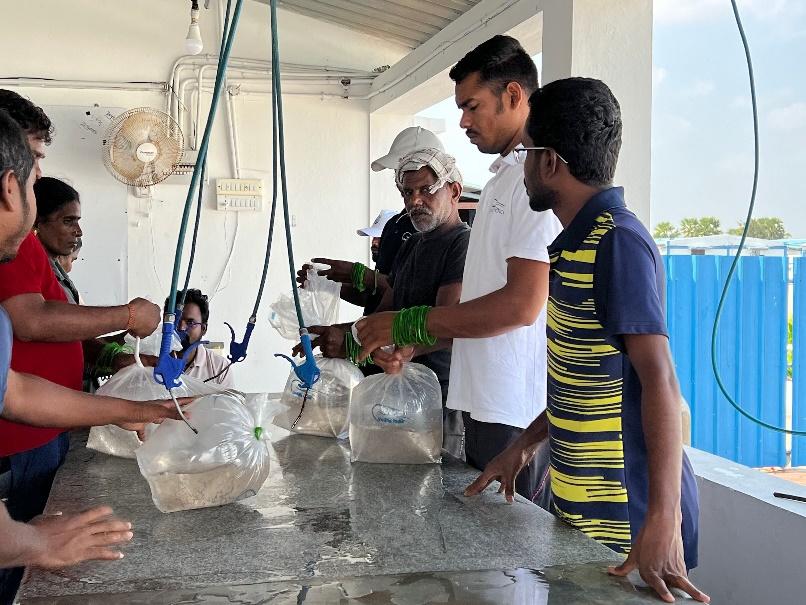
At the packing station, preparing PL16 for delivery. Right
To meet planned post larvae production targets, the SPF broodstock requirement is met by weekly consignments of 400 animals imported from Aqualma at the beginning of the production season.
However, when Unibio started in 2020, it was in the midst of the Covid-19 pandemic and the company encountered logistics problems. Prasad commented, “Before the pandemic, flights from Madagascar to Chennai were through Mauritius but these were not operating in 2021.
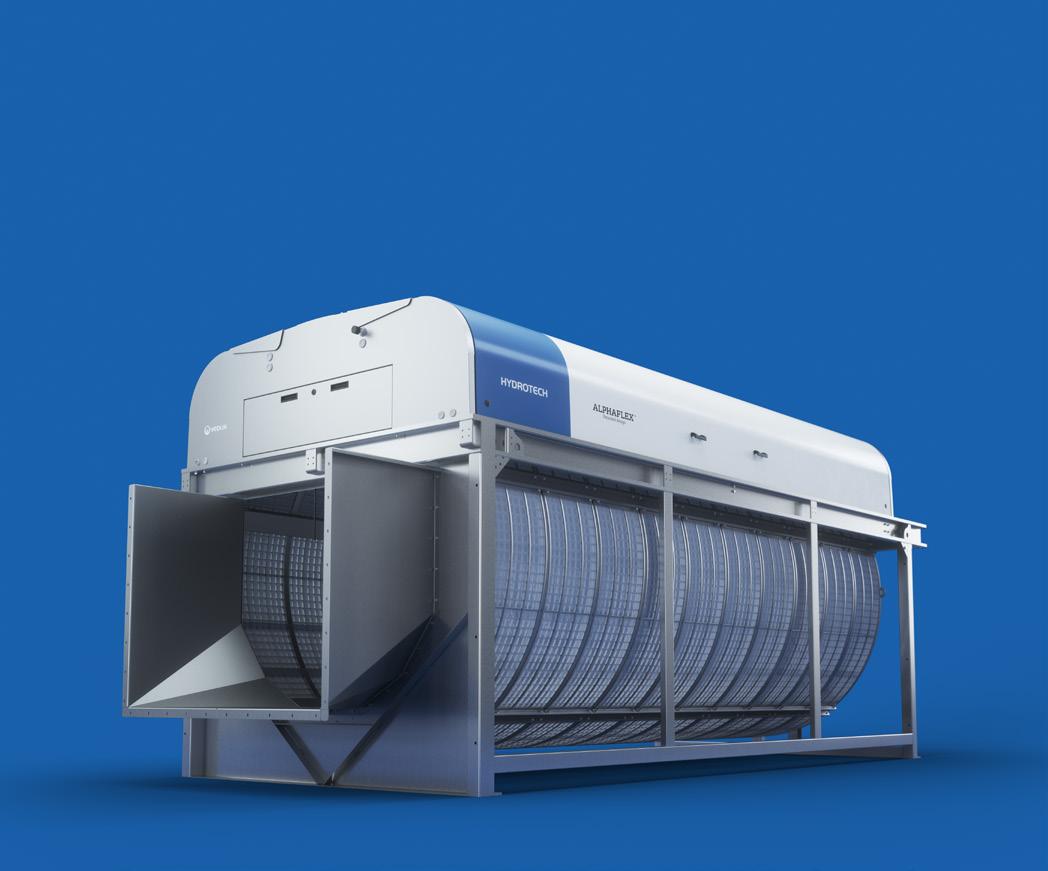
Larval tanks
Unibio Holding, began full opera.ons in 2022 at In India, the group has three in Marakanam, Tamil
hatchery, this facility in Mugaiyur, considerable modifica.ons and addi.ons to meet the needs for These include the complete renova.on and construc.on of matura.on larvae rearing Ttnks) sec.on. The hatchery launched its first batch
The Hydrotech Drum Filter Value series focuses on reduced maintenance, increased component quality and simplified operation – all to give your plant maximum filtration performance at a minimum operational cost.
“Unibio’s broodstock from Madagascar is the 20th genera.on and such broodstocks are more resilient than from those produced
Let us help you!
Call +46 (0)40 42 95 30, or visit www.hydrotech.se

We resorted to charter flights which were not tenable in the long term. Full operations began in 2022 but logistics continued to be a burden with no flights via Mauritius. A recent strategy is flying broodstock via Addis Ababa with 3-4 consignments per month.”
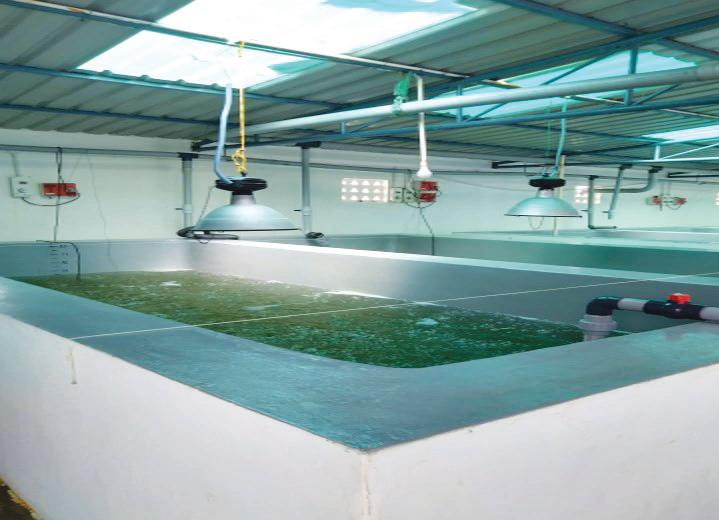

George Chamberlain, President TCRS (The Center for Responsible Seafood) with from left, the Unibio team of Panchu Duraisamy, Director, Unibio (India) and Manavendra Rao, Business Manager Aqualma with Ramraj D, Hi Breeds Aquatics; Victor Suresh United Research, and Jegan Michael, Growel Feeds. Photo credit. Unibio.
Quality post larvae production and strict protocols
The protocols in post larvae production at Unibio are very specific. It uses only females of 95-100g and 65-75g males to start with. These cost the company USD200/
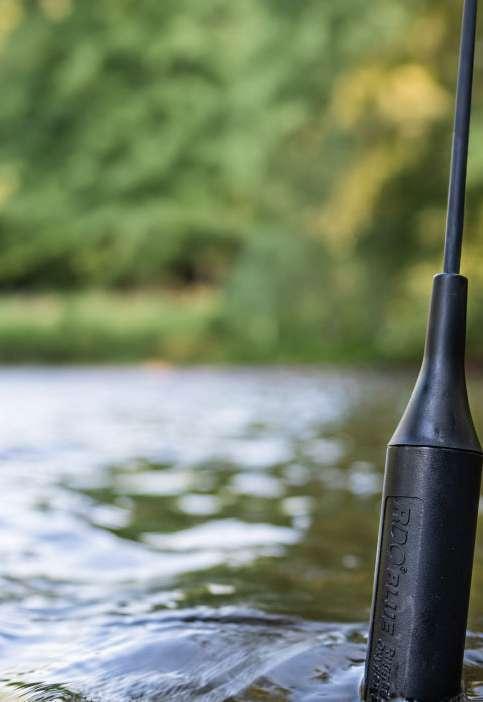

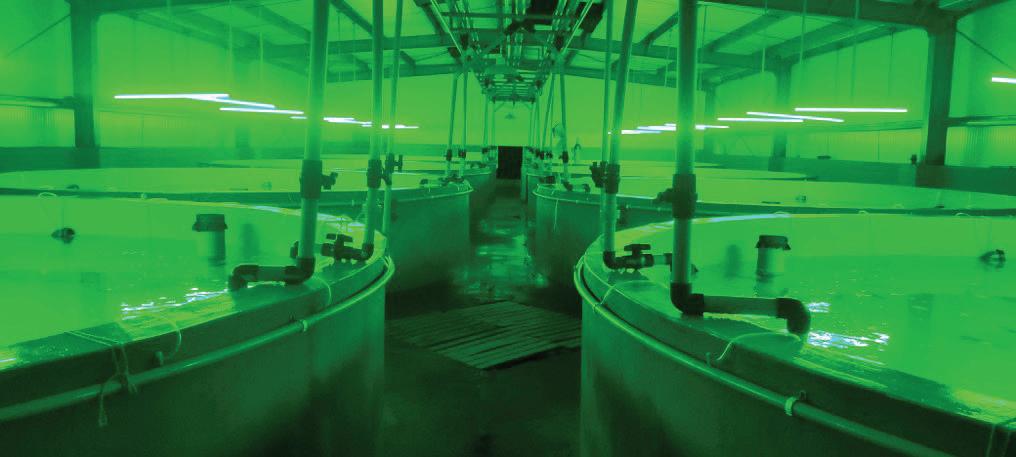
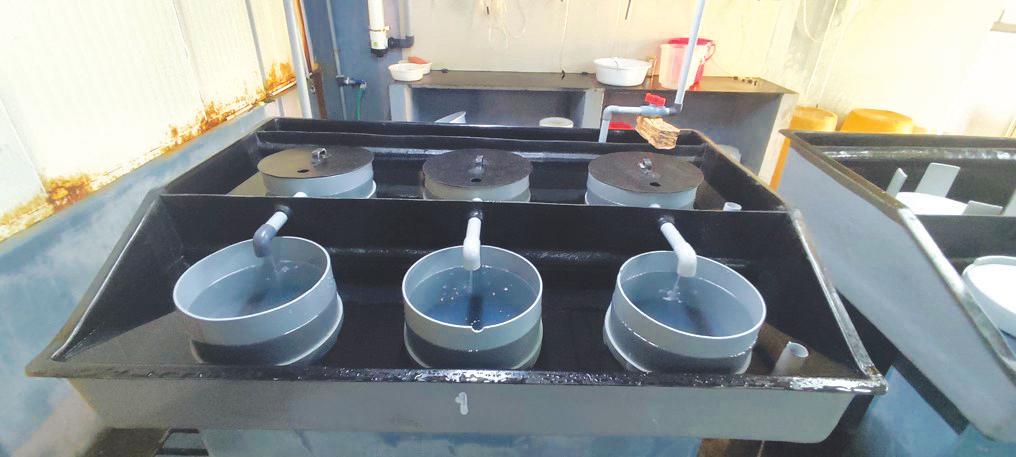
broodstock, including import duties, quarantine and repacking charges. The minimum size for females is 95g as smaller broodstock shows sub-optimal performances at a fecundity of 200,000 to 300,000 nauplii.
Broodstocks are fed frozen squids from California, polychaetes from the Netherlands and moist pelleted feeds from the US. These broodstocks give an output of 15-20 million nauplii/day. Females moult at a frequency of 2 weeks which allows the male broodstocks to mate naturally. Post ablation, ready to spawn females are held individually overnight in 150L spawning tanks. There are specially designed hatching containers, a proprietary technology developed at Unima in Madagascar. The average hatching rate is 70%. Nauplii are washed following standard protocols. The average survival rate is 40-45% from nauplii to PL12.


Each cycle takes 21 days for a production of 22 million/ cycle of PL12-16. The Unibio hatchery in Mugaiyur operates for 10-12 cycles in a production season. The standard operation procedures are very strict – there are calculations on the target growth of post larvae, on the carrying capacity of each tank and that PL12 should attain 4.5mg. When these do not match, the cycle is extended but this is not encouraged to avoid possible sanitary issues. “Fortunately, monodon has less issues with zoea syndrome compared to vannamei. The hatchery‘s top concern is contamination with Vibrio . Therefore, it has opted for 100% culture of live feeds, Chaetoceros and Thalassiosira in indoor mass culture in transparent cylinders under controlled conditions. Transfers of PL5 to grow to PL 12 are done manually,” added Prasad.

The critical role of water quality is evident with massive volumes of water in large 150 tonnes and 200 tonnes capacity tanks being treated to accommodate the large flow-through system for the maturation facility. The seawater intake source is 50m from the hatchery. Water treatment starts with settlement, ozonation of incoming water, followed by cartridge filters and ultraviolet sterilisation. Water is cooled to maintain at 27-27.5°C for the flow-through system in the maturation facility.
According to Prasad, “The management is very particular on quality. If the batch does not reach the standard, the post larvae are discarded.” Unibio is the only SPF monodon hatchery in India with Best Aquaculture Practice (BAP) certification for the full scope of BAP hatchery standard, from maturation, nauplii and post larvae production. Therefore, the target is to set industry standards.
The cost of post larvae production is increasing rapidly. Labour costs have risen by 20% with recent changes in minimum wages. There is a dependence on the electrical grid but concurrently, the generator is running for several hours. Transport costs have increased for broodstocks while fortunately post larvae delivery costs are the responsibility of the buyers.
Extra costs come with the promise to adjust post larvae transport conditions to align with conditions of stocking water, prior to delivery such as for farming in low saline water ponds. “The minimum salinity at which we pack the post larvae is 10ppt. Alongside these are the preproduction costs of broodstock transport and cubicle, and testing costs at the Aquatic Quarantine Facility, ranging from INR200,000 to 300,000 (USD2,352-3,529) per cubicle which holds 200-250 broodstock.” explained Prasad.
A side discussion was on eyestalk ablation in monodon shrimp. There is considerable debate on shrimp welfare and how to phase out this practice from the point of view of certification. Prasad admitted that eliminating eyestalk ablation is difficult in the close thelycum monodon shrimp. “It is difficult to get them to mature and mate naturally under normal conditions. Aqualma is working with experts and trials are being carried out in Madagascar to eliminate eyestalk ablation.
“The major difference with non-ablated shrimp is the unpredictability in shrimp spawning. This translates to the inability to predict production and the hatchery cannot commit to having nauplii at a set date. Ablation gives a predictable cycle. All businesses need predictability. Fecundity is also predictable with ablated females, moving upwards from 200,000 to 700,000 nauplii. But with nonablation, there is no guarantee on fecundity,” said Prasad.
On the other hand, Prasad said that shrimp health can be affected by ablation but here at Unibio, with the expertise that they have developed to avoid stress at ablation, they have not seen mortality associated with ablation, other than the usual level. “The predictability which comes with ablated females is unmatched,” emphasised Prasad.

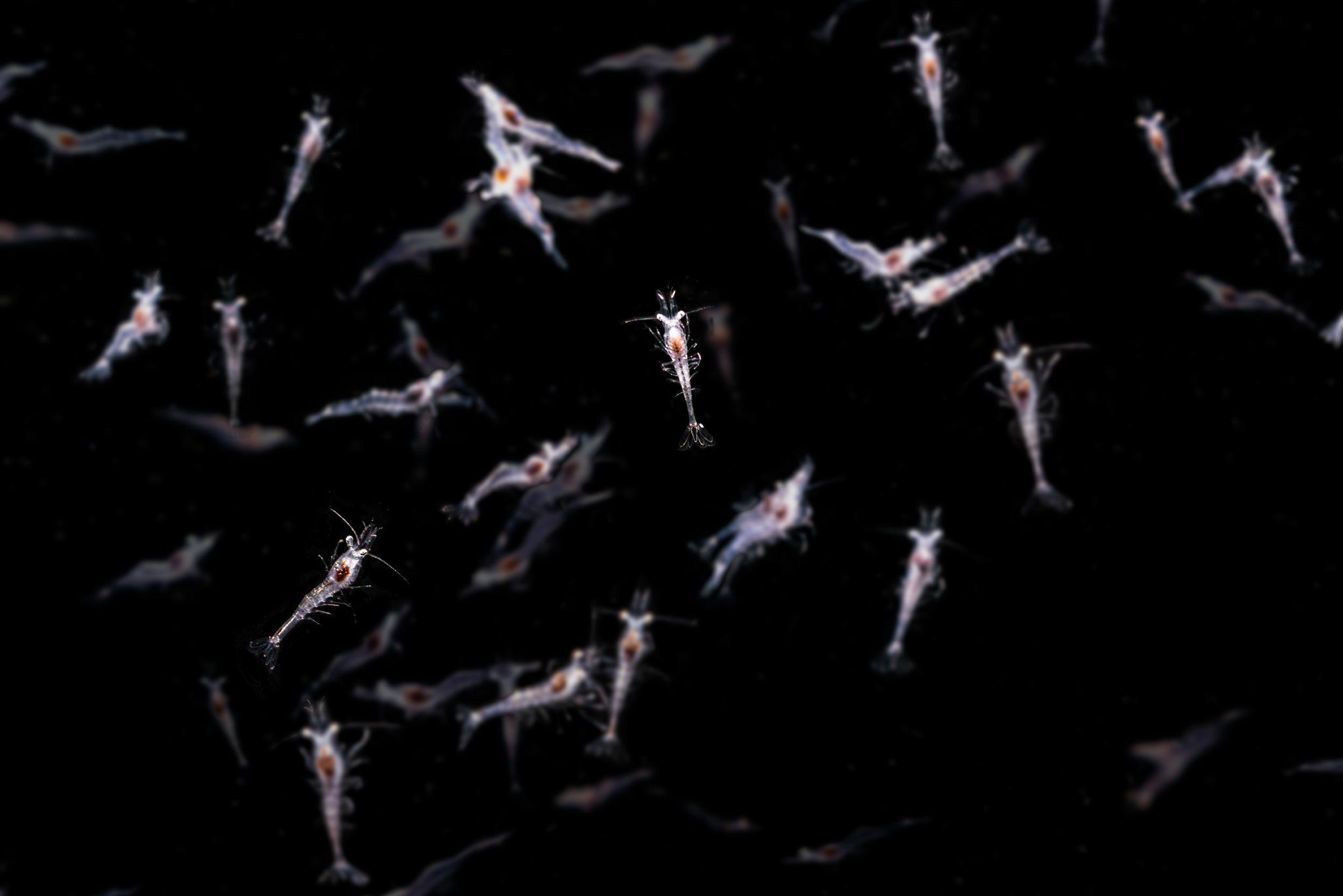
An integration of smart devices and real-time PCR technologies is revolutionising operations
By Tanatchaporn Utairungsee and Natthinee MunkongwongsiriShrimp aquaculture is crucial for meeting global seafood demand, but it encounters challenges related to shrimp health, diseases, and quality assurance. There are innovative solutions to address these issues in shrimp hatcheries by revolutionising operations across all of SyAqua’s sites (including those in Thailand, Malaysia and Indonesia), through the integration of smart devices for counting and quality control, along with real-time PCR technologies.
Since its implementation, SyAqua, a global leader in shrimp breeding and nutrition has seen improvement in its efficiency through its efforts to utilise cutting edge technologies to deliver best-in-class hatchery feed, genomic selection, quantitative genetics, and breeding science. The company maintains operations in Thailand, Malaysia, Indonesia, US, India and China.
At our hatcheries, we have integrated the application of smart devices for counting and quality control in shrimp post larvae (PL) production. This advanced technology provides key benefits to our operations.
Automatic PL counting was introduced to shrimp hatcheries several years ago. Evolving over time, the application of AI technology for measuring and counting
shrimp is expanding globally. Within the hatchery, the capability to swiftly and precisely count PL effectively manages the steadily growing volume of PL orders from shrimp farmers.
By reducing processing time, we can now access real-time PL size coefficient of variation (CV) using the provided mobile phone or tablet application. This AI-powered technology utilises imaging technology to effectively control PL quality during the harvest and packing processes, and ensuring timely delivery to customers. The analysis is capable of reporting real-time data on mobile phones, allowing access from anywhere.
Using smart devices allows hatcheries to increase sample checks without the time-consuming and strenuous manual counting and sizing. It thus enhances efficiency and provides more reliable determinations about shrimp stock quality. Additionally, these devices eliminate human error and variability, ensuring consistent and automated data acquisition for accurate measurements in quality control.
Furthermore, the device simplifies reporting by automatically generating time series and quality analysis; it also streamlines data interpretation and decision-making for hatchery operators. Our hatcheries can effortlessly maintain comprehensive records and share insights with stakeholders, thus enhancing
operational efficiency and empowering operators to make informed decisions for optimised shrimp production and high-quality standards.
Know the biomass in the pond
Farm management relies on farmers receiving accurate stocking numbers. The implementation of smart counting technology enables our hatcheries to furnish farmers with precise PL counts for every box in every shipment.
There are limitations on relying solely on the spread plate technique for disease detection. These are evident in shrimp hatcheries when we consider its potential drawbacks. For instance, despite providing a visual representation of bacterial colonies on agar plates, this method lacks specificity and reliability in distinguishing between different bacterial strains. In a practical scenario, an abundance of colonies observed on thiosulfate-citratebile- salts- sucrose (TCBS) agar does not guarantee the presence of pathogenic strains, as not all colonies may be virulent.
To address shortcomings of the spread plate technique, real-time PCR has emerged as a valuable complementary tool. It offers enhanced specificity and sensitivity by targeting specific DNA sequences associated with the pathogenic bacterial strains and viruses of interest. This molecular genetic technique enables rapid and precise detection of pathogens, even at low concentrations, providing a more accurate assessment of disease risk in shrimp PL samples.

Our operation sites are equipped with automatic nucleic acid extractors, enabling us to accomplish DNA/RNA extraction within a mere 30 minutes. Leveraging the magnetic bead advantage, this ensures consistent quality and purity of extracted specimens.The extractor can accommodate a maximum of 32 samples per time.
Additionally, we utilise the magnetic induction cycler (MIC) with four channels (green/yellow/orange/red). The MIC qPCR cycler machine employs patented magnetic induction technology for rapid heating and forced airflow cooling. Its robust optical system reads all four channels simultaneously, making multichannel assays quicker than ever.
Remarkably, this compact cycler, roughly the size of an A4 paper, operates at ambient temperature, making it fieldfriendly without the need for air conditioning.
Maximising detection: Quadruple format and new disease detection
Our system can detect four pathogens in a single test. The combinations are:
• Early mortality syndrome (EMS), Enterocytozoon hepatopenaei (EHP), Vibrio parahaemolyticus (Vp) and Vibrio harveyii (VH) i.e EMS/EHP/Vpa/VH, and
• EMS, EHP, white spot syndrome virus (WSSV) and infectious hypodermal and hematopoietic necrosis virus (IHHNV) i.e EMS/ EHP/ WSSV/ IHHNV.
This not only saves time and costs but also serves shrimp health surveillance and monitoring. Today, we receive results within the same day or even within three hours of sampling.
Sustainable Shrimp Technologies GENETICS NUTRITION HEALTH

Achieve Aquaculture Excellence with Our Sustainable Shrimp Technologies. Benefit from Advanced Genetics and Early Nutrition Solutions for Optimal Growth, boasting a 15-point FCR advantage.
ROBUST . RESILIENT . BALANCED

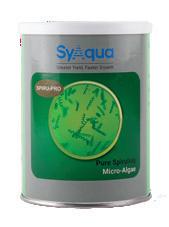
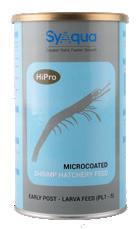
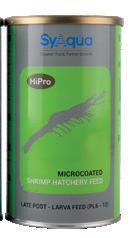

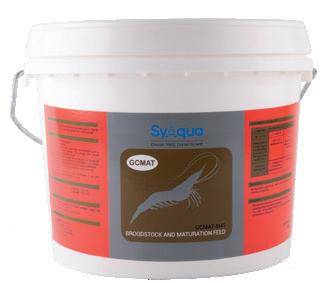

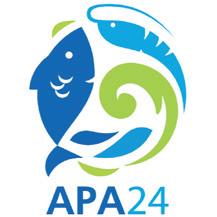
ASIAN-PACIFIC AQUACULTURE 2024
2 - 5 JULY 2024

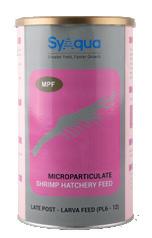
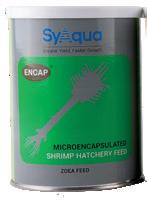
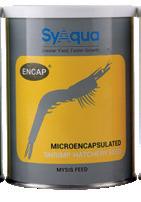
Grand City Hall Convention & Exhibition Centre in Surabaya, Indonesia
MEET US AT BOOTH 204 /205

Figure 1. Highlights the real-time PCR test results, seamlessly generated by our integrated qPCR machine software upon test completion. This automated process effortlessly transmits the report directly to our designated email via WiFi connectivity.
Given the emergence of highly lethal vibrio disease (HLVD) in China (Yang et al., 2023), caused by virulent strains of Vibrio parahaemolyticus (VpHLVD), our recent introduction of a qPCR test kit for toxin complex A (TcA) and toxin complex B (TcB) is crucial.
Despite no reported cases in Thailand thus far, this proactive measure allows us to effectively surveil and manage the disease. By maintaining specific pathogenfree (SPF) shrimp breeder stocks and their offspring, we ensure the consistent production of high-quality shrimp for our esteemed clients.
The integration of two technologies, the smart device for counting and quality control alongside real-time PCR for disease detection, offers numerous benefits for supporting our hatchery operations.
By integrating both technologies, SyAqua hatcheries can gather a wide range of data, including shrimp population counts, size distributions, and disease prevalence. This comprehensive data collection enables hatchery operators to gain a holistic understanding of their production environment and make informed decisions to optimise operations.
The combination of the smart device and real-time PCR technology strengthens the company’s disease management strategies. While the smart device provides real-time monitoring of shrimp populations for early signs of disease, real-time PCR offers precise and rapid detection of specific pathogens. This integrated approach allows hatcheries to proactively identify and mitigate disease risks, minimising the impact of outbreaks on shrimp health and productivity.
Integrating the two technologies streamlines the quality control process in the hatcheries. The smart device facilitates rapid and accurate counting and sizing of shrimp PL, while real-time PCR ensures the reliability of disease screening results. This efficiency in quality control not only saves time and manpower but also enhances the overall quality assurance measures in shrimp production.
The integrated approach to hatchery management promotes sustainability within our operations. By reducing the reliance on manual labour and chemical treatments for disease control, while simultaneously improving quality control measures, the integrated
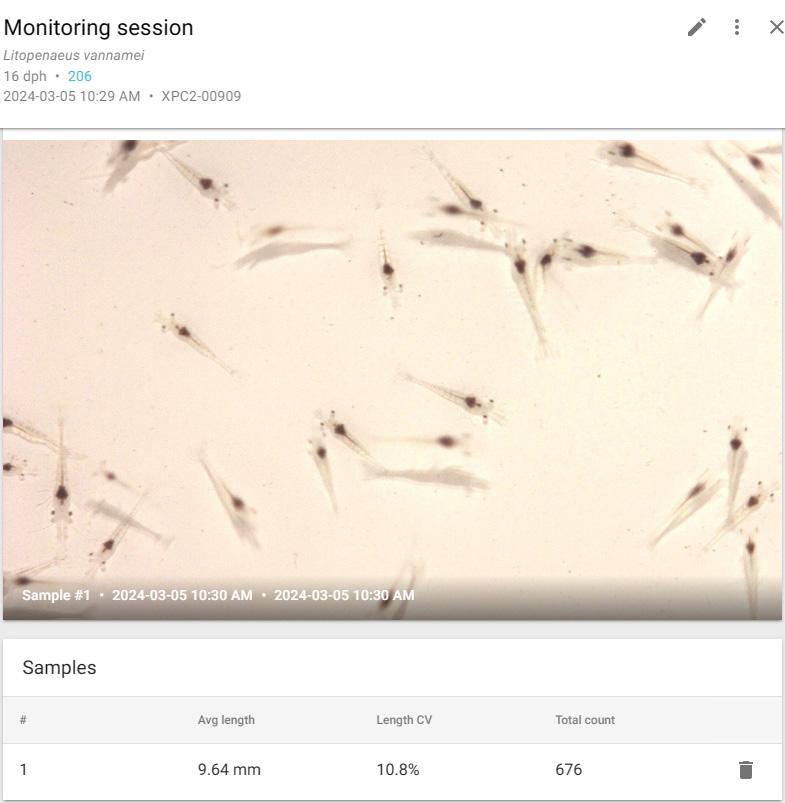
Figure 2A. shows the outcomes of shrimp post larvae counting, size measurement, and %CV calculation achieved via cuttingedge smart counting technology.
technologies support environmentally friendly and socially responsible aquaculture practices. Let us delve into how this smart device technology contributes to SyAqua’s sustainability efforts:
Resource efficiency and waste reduction
Smart devices streamline the counting process, reducing the time and labour required, conserving human resources, and minimising fatigue. Real-time monitoring of PL size variation (CV) ensures that only high-quality PL are selected for further production, minimising waste by avoiding the use of suboptimal PL.
The move toward sustainable shrimp farming systems aligns with the commitment to environmental responsibility. By optimising PL quality, the company contributes to sustainable practices in the industry. The MIC qPCR machine’s compact design and ambient temperature operation reduce energy consumption and environmental impact compared to larger, energyintensive equipment.
Detecting multiple pathogens in a single test enhances biosecurity. By identifying diseases early, we can take preventive measures, reducing the need for antibiotics or other interventions. Rapid results from the MIC system enable timely responses, thus preventing disease outbreaks and minimising losses.
By consistently delivering high-quality PL, the company ensures the long-term viability of shrimp farming. Healthy PL lead to robust shrimp populations, which support sustainable aquaculture practices.
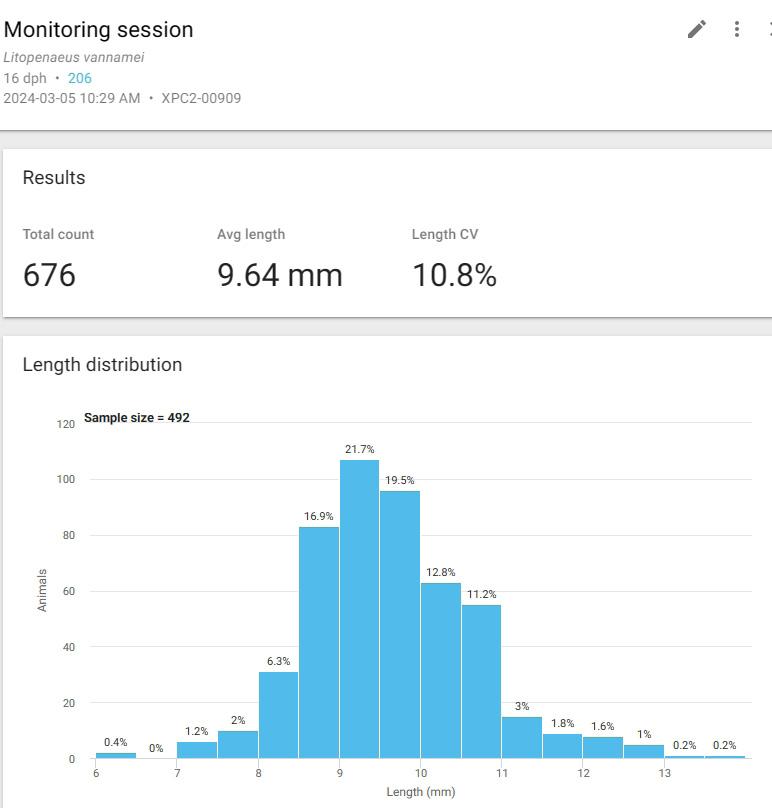
2B. This innovation enables prompt reporting, as illustrated in the bar graph, on smartphones or tablets using a dedicated application.
In summary, the adoption of smart device technology not only improves operational efficiency but also contributes to sustainable shrimp production, environmental stewardship, and long-term success. The integration of the smart device for counting and quality control with realtime PCR for disease detection equips SyAqua hatcheries with comprehensive data collection, enhanced disease management, efficient quality control, optimised resource allocation, and support for sustainable practices.
The long-term sustainability of shrimp aquaculture begins with high-quality, robust, fast-growing PL. By combining the genetic base of 27 generations of consistent, balanced selection with the safety, quality, and accuracy of hatchery production systems, our customers are producing more consistent crops. Consistent and efficient production is essential to improve both environmental responsibility and sustainable profitability of the shrimp industry.

Dr Tanatchaporn Utairungsee is Laboratory Manager. Email: tanatchaporn.u@syaqua.com
Dr Natthinee Munkongwongsiri is Field Research Manager. Email: natthinee.m@syaqua.com Both authors are with SyAqua Siam Co. Ltd.
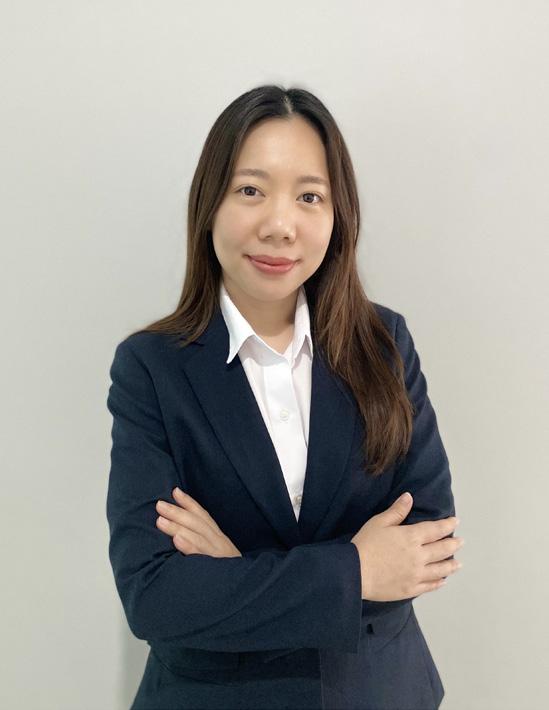
A vannamei shrimp culture with the assurance that the farmer has minimal problems in each cycle, gets a crop of stronger and healthier shrimp with a high success rate
By Zuridah Merican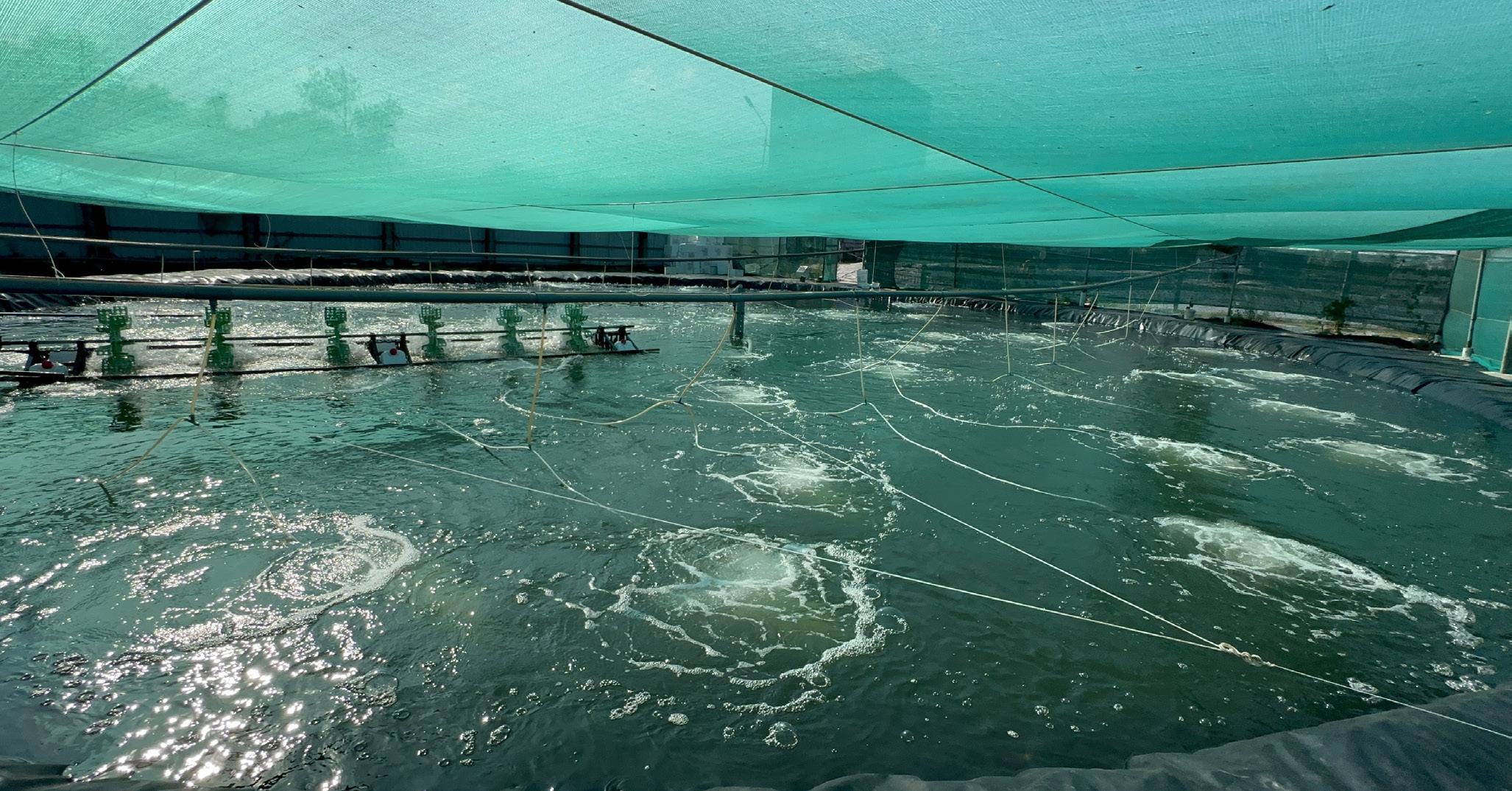
It has often been reported that vannamei shrimp farmers in Vietnam are enduring a relatively high cost of production (COP). With COP at a low of USD3.50 to as high as USD4/kg to produce size 50/kg vannamei, this may be the highest in Southeast Asia. But it is also relevant to include the fact that most farms in Vietnam comprise very small holdings, such as 2-3 ponds of 1,000m2 each, forcing farmers to apply high stocking densities such as 250 PL/m2, for a profitable farming business. For most farms in the Mekong Delta, expenses are high for water treatment because of the poor quality of shared water resources. Moreover, input costs are high for disease treatments. These are some critical points for industry when designing shrimp farming models.
Over the past 6-7 years, feed companies have been developing the ideal shrimp farming model mainly for their feed clients. Since the third Vietshrimp International event, several feed millers and shrimp farming technology companies have displayed their latest versions of a shrimp farming model. The basic features are multiphase farming and at least a three-step water treatment process.
This is the acronym for the Thang Long Smart System which Sheng Long Bio-Tech, a leading aquafeed producer, developed at its R&D and demonstration facility in Soc Trang, in the Mekong Delta. According to Chew Uik Sen, Technical Manager, it took 6 years to develop the first version of the TLSS. “The idea behind
the best model is one where we can ensure that the farmer has minimal problems in each cycle and there is a crop of stronger and healthier shrimp with a high survival rate,” said Kevin Chew Uik Seng, Assistant Technical Manager, as he explained the features of this smart system. “This model moves away from the traditional single phase where it is 2-3 crops per year to a multi-phase smart version, i.e. a model divided into many stages to control the farming situation, minimise risks, raise shrimp to large sizes, increase output and bring economic efficiency. Our sales and technical service teams are on hand to help the farmers improve and get better results.”
“Farming shrimp in Vietnam has been rather difficult with polluted water resources and diseases such as Enterocytozoon hepatopenaei or EHP and translucent post larvae disease or TPD appearing too often,” said Nguyen Khac Hai, Technical Director, in a presentation at Vietshrimp, held from March 20-22 in Ca Mau. Sheng Long’s objective is to develop an efficient model suitable for the technical capabilities of the farmer. “Climate change and the environment are becoming increasingly complex - difficult to predict and out of control. Managing external environmental factors is critical and requires a deep focus on the shared water resources, and attention on water treatment to clean up incoming water for the ponds. The model is also associated with the right feeds for each phase: there are newly developed feeds: extruded nursery feed, pelleted grow-out and booster feeds as well as a functional feed.”
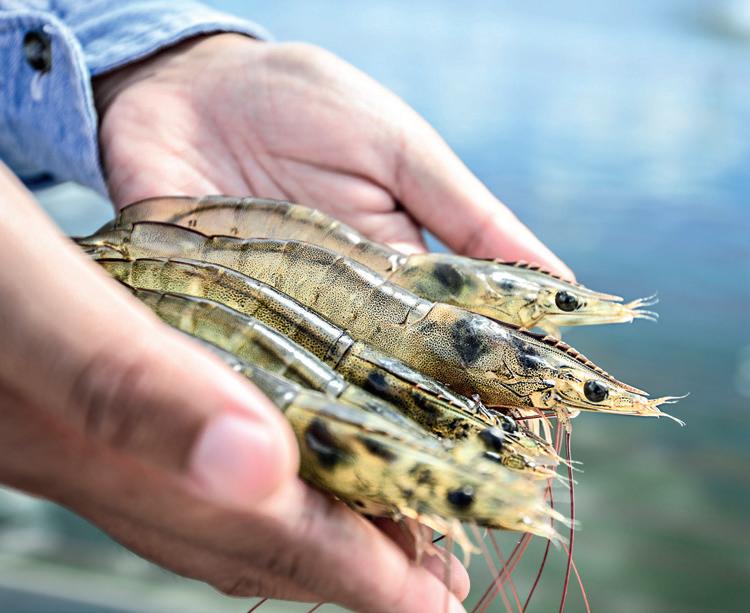
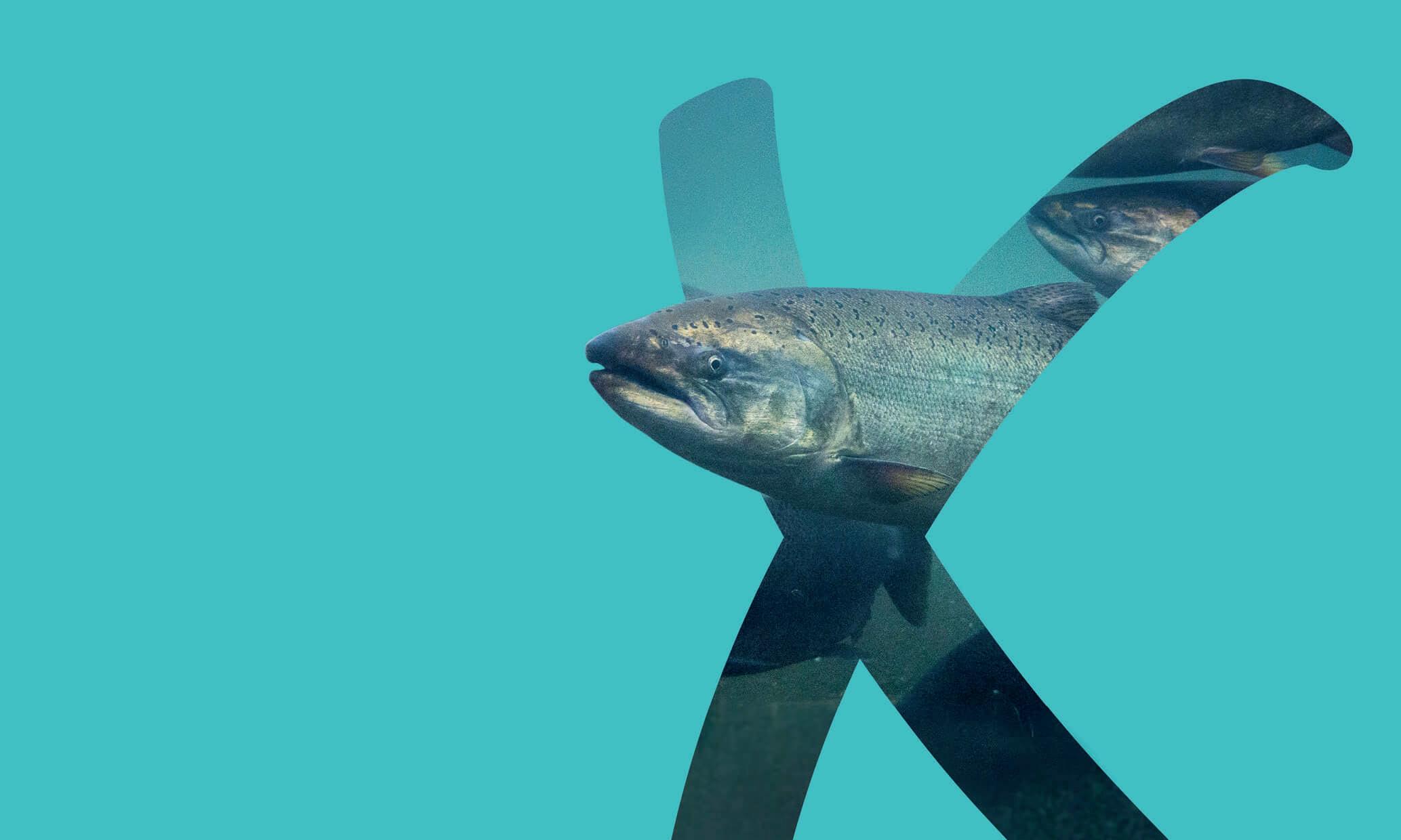


A unique blend of oleochemicals and an active matrix to helps reduce the impact of parasitic challenges in shrimp like EHP.
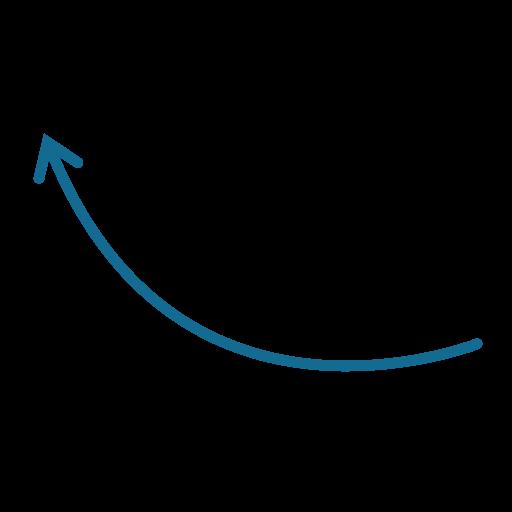


To support our customers to combine sustainability and economical performance is a sustainable solution specially developped for Aqua challenges leading to better economical results thanks to a wide spectrum modes of actions essentially linked to the gut balance modulation.





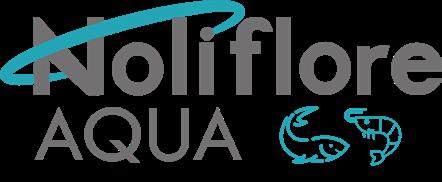
Saves energy for growth during stressful periods thanks to 3 modes of action: stimulation of the immune system, antioxidant effects and effects on inflammation. is a blend of Bacillus spp. strains specially selected and developed for various applications in all aquaculture systems.




First it is to ensure a disease-free process, and this starts with post larvae free of pathogens. At the hatchery, there are 14 tests to ensure that post larvae are free from diseases, especially for EMS (early mortality syndrome) and EHP.
Water quality
Indicators Reference for shrimp farming
Salinity > 10ppt
pH
7.5 -8.3
Alkalinity > 80ppm
DO > 4ppm
NH3
NO2
Ca2+
Mg2+
K+
Remarks
Optimum10-25ppt
Optimum>120 ppm
< 0.1ppm
< 0.2ppm
> 250ppm
> 450ppm
> 200ppm
Residual chlorine N/A
Salinity<10ppt; Ca:Mg=1:1
Salinity>10ppt;-
Ca:Mg=2:1
Table 1. The water quality parameters are used as a reference standard and must be adhered to before and during the farming cycle.
There is a multiphase water treatment process for incoming water - sedimentation and filtration of suspended solids in the reservoir pond of 3,800m2 and subsequently, over 2 days of water treatment with

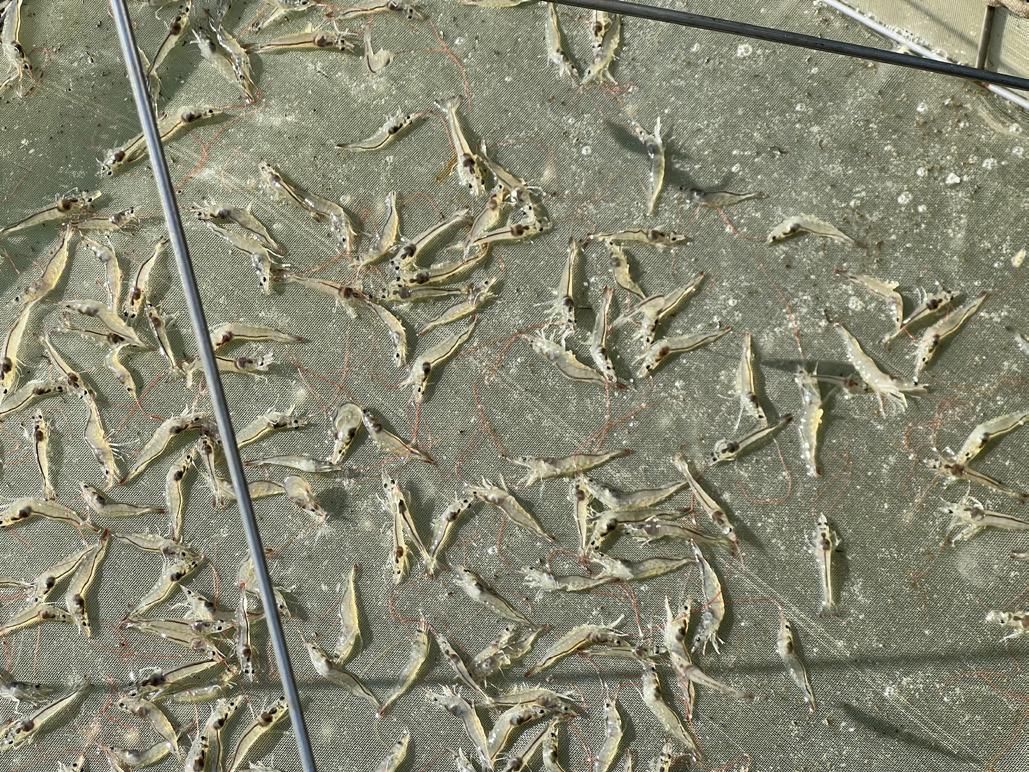
potassium permanganate (KMnO4) and bleach in three smaller ponds of 2,000m2 and 1,500m2. There are regular checks to ensure that the water quality meets the required standards (Table 1). Water treatment products are used to reduce Vibrio counts, and mineral supplementation are utilised for hard shell formation and to degrade harmful organic matter.
Kevin described in detail a critical infrastructure. This is the central toilet system which is unique in design. It discharges wastes from the ponds and changes water simultaneously. “The waste flows into a biogas pond to decompose and undergo sterilisation. The treated affluent wastes meet safety and pollution-free standards before being discharged back to the water source. The standard operating protocol (SOP) is to clean once every 2 days.”
The objective is to have much better control over production. Each nursery cycle is 25 days in the nursery pond which is fully lined with 1 mm HDPE geomembranes. The stocking density of PL12 is at more than 2,000 PL/m2 and the harvest is post larvae of 1,500-2,000 PL/kg or 1.5-2g/PL. There are precise SOPs on how to manage water quality and shrimp health, such as to clean out the blackish top layer and maintain equipment regularly once every 2 days to reduce risks of disease. The nursery is constructed on higher ground to allow the direct transfer via gravity flow through PVC pipes to the first grow-out pond (phase II). Feeding is with Beikesu, a new hatchery feed in the Vietnamese market, developed in 2023.
In general, grow-out is over 2-months. All in all, the farmer can harvest eight times in a year; in between there is pond
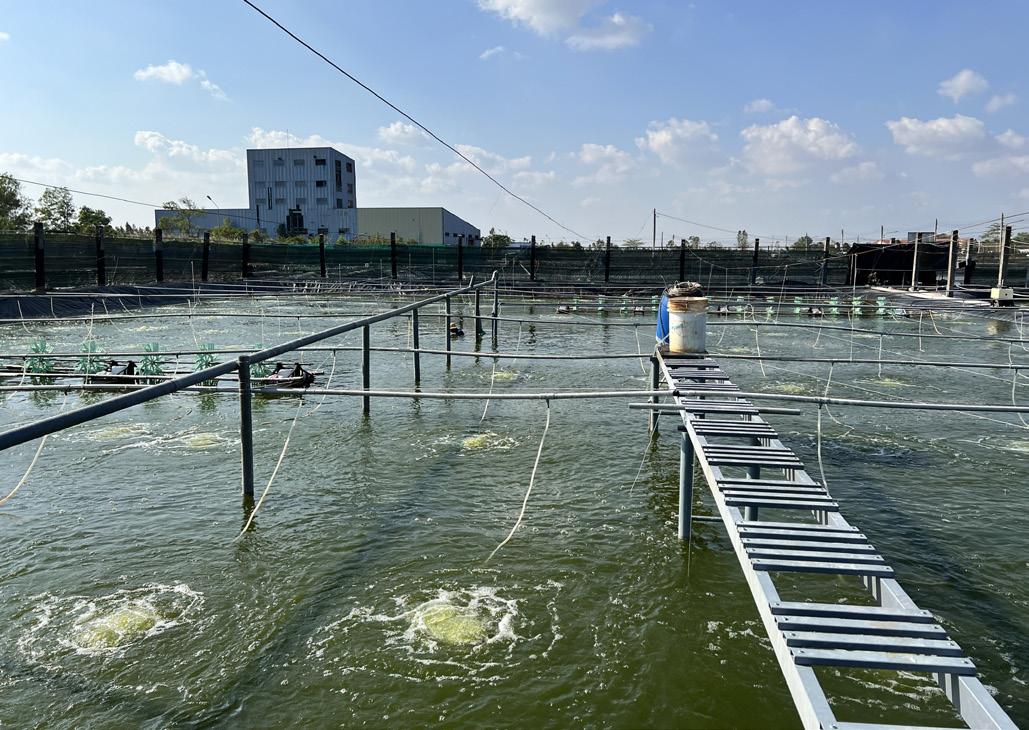

managing external environmental factors is critical, requires a deep focus on the shared water resources, and attention on water treatment to clean up incoming water for the ponds.
From left, clockwise, the Chew brothers at the TLSS area; grow-outAt the entrance to Sheng Long’s R&D centre in Soc Trang. From left to right, Wei Yu Gui, Assistant Manager of R&D Base; Chew Uik Sen, Technical Manager; Chau Bac Anh, GM Assistant; Kevin Chew Uik Seng, Assistant Technical Manager; Dr Liao MeiFu, Senior R&D Engineer and Pham Huu Van, Senior Technican.
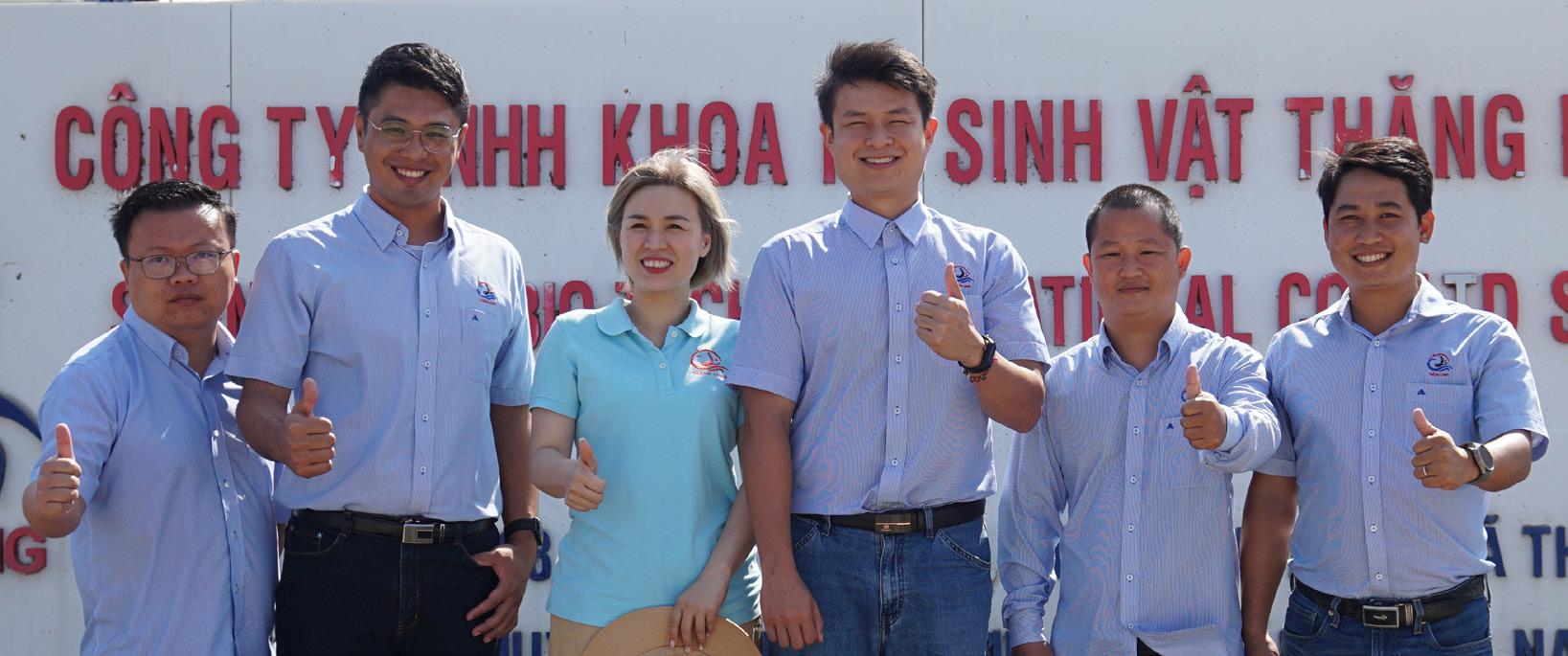
preparation for 15 days. Working with farmers in Bac Lieu, Pham Huu Van, Senior Technican said, “The size of the harvest is 30-60/kg depending on the farmer. The smallest harvest size is 100/kg. We focus on the carrying capacity of the ponds and the farmer will work around this. The standard is 7-8 tonnes/1,000m2 of size 60/kg. When the demand is for larger sizes such as 30/kg, the farmer will do a partial harvest to reduce density. In the first grow-out pond, the stocking density is 300 to 500 PL/m2.”
Overall, a farm with an area of 3,000m2 typically has two grow-out ponds, each with an average area of 1,000m2 in addition to a nursery pond and water treatment ponds. The average culture period is 140 days, and each pond can yield 7-8 tonnes of shrimp, with sizes ranging from 20-30/ kg. The total harvest is 12-14 tonnes and the survival rate is ≥80%.
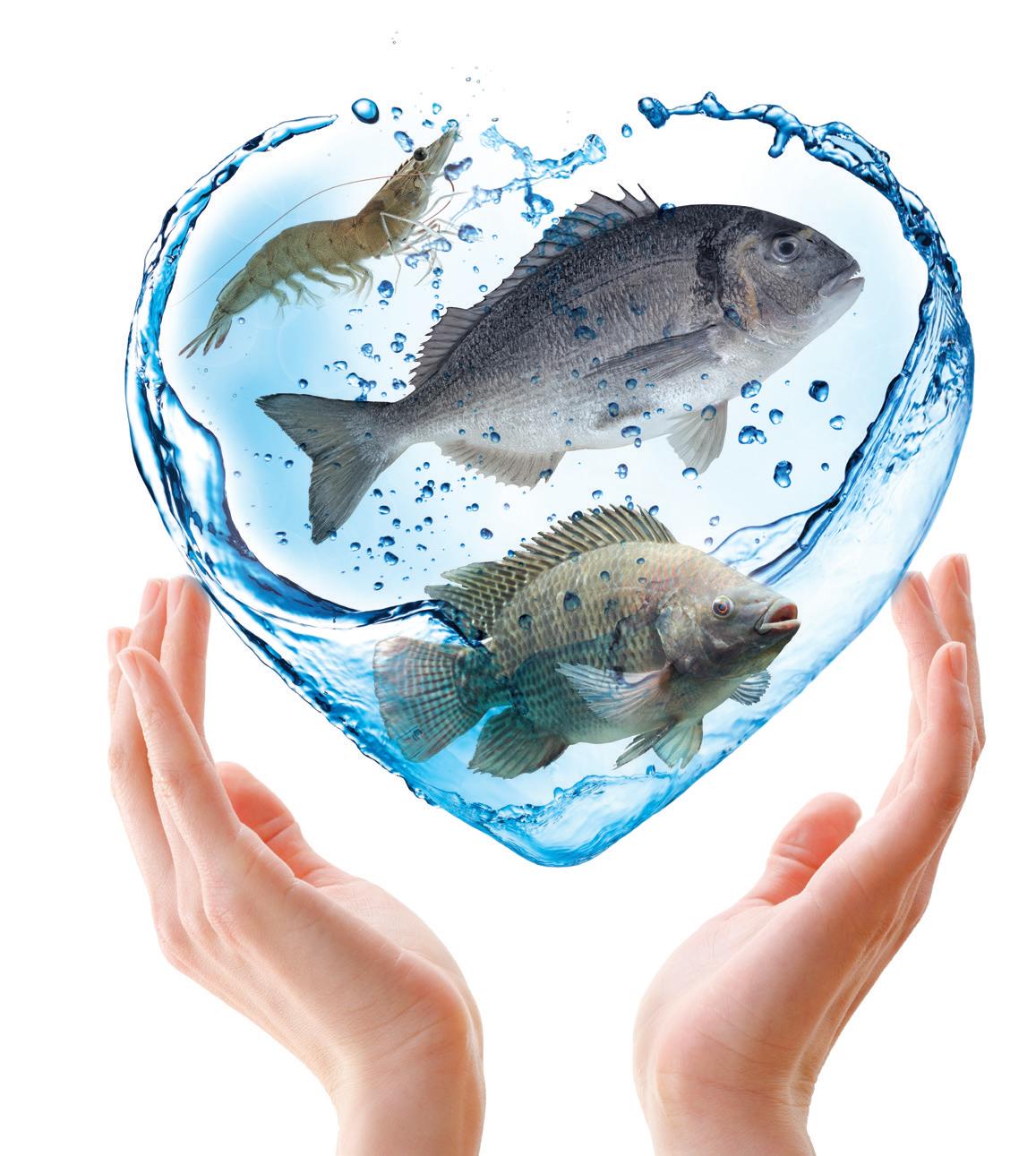
The success rate of the model has continuously improved over the years, and 2023 marked the first year to achieve a positive effect with an 83% success rate. Regarding investment costs, Hai mentioned that infrastructure costs amount to around VND1.527 billion (USD60,169), with profits reaching VND1.815 billion (USD71,306) over two crops. Hai gave an example of a farmer in Bac Lieu who achieved a profit of VND3.46 billion (USD136,588). In terms of tonnage, Hai noted that a farmer in Soc Trang has achieved 150 tonnes in 18 ponds, harvesting shrimp at sizes 18-30/kg.
Kevin summarised that for Sheng Long, its goal is to continuously build up its TLSS system customised for each farmer to have a better control over each cycle. “The post larvae from the hatchery will grow faster with the feed types depending on the needs of each farmer. We want to reduce internal and external risks of diseases and bring up success rates.”
BOOST YOUR BUSINESS BY OPTIMIZING YOUR HEALTH ADDITIVE STRATEGY
RESTRICT inappropriate use of antibiotics and chemicals
REDUCE losses from subclinical disease and outbreaks
INCREASE economical and ecological sustainability
BOOST feed perfomance and farm productivity

Direct production cost was lower by 10-12% with low protein feeds and increased by 20-30% during an EHP infection
By B. Ravikumar, Victor Suresh, Gnanasri, Uma Maheswararao and Chandhira SekarIn the Feeds and Feeding panel at Aqua India 2024, held from 15-17 February, the impact of two challenges related to feeds and farm economy were discussed (see pages 44-45). A recent trend in the shrimp industry in India and in other countries is the use of low protein feeds to manage costs. This practice is most evident and successful in Indonesian farms while there is a long history of using low protein feeds in Latin America. The second challenge is the impact of the microsporidian Enterocytozoon hepatopenaei (EHP) on crop cycles. Growel Feeds’ technical team presented data from some field trials in Andhra Pradesh to show how farm profitability is impacted by these two challenges.
Shrimp prices have been very low during the past two years. Therefore, finding ways to minimise the cost of production in vannamei shrimp is critical. We have conducted trials using feeds with 32% crude protein ( CP) and compared them with 36% CP feeds. In the districts of Krishna and West Godavari, Andhra Pradesh, the average stocking densities have declined year by year. At present, the average stocking density is 25 post larvae (PL)/m2. When the shrimp are reared in fertile ponds, a lower protein feed is likely to perform as well as the higher protein feeds as long as the quality, nutrient balance and digestible protein are maintained in the low protein feeds.
We have conducted trials in more than 125 ponds, where shrimp in 65 ponds were fed the 32% CP feed and shrimp
in another 60 ponds were fed with a 36% CP feed. The post larvae for all 125 ponds were from the same genetics. We showed that in the 32% CP feed group, feed accounted for 50 to 60% of the total cost of production which is 1012% lower than that of the 36% CP group. Water salinity in these ponds ranged from 5 to 12ppt. Other parameters were optimal. We noticed that ponds where shrimp were fed 32% CP feeds had less pond bottom pollution as compared to ponds where shrimp were given feeds with 36% CP. Most of the shrimp farming areas in India have limited water exchange or no water exchange.
These results with lower COP indicated that when selling shrimp at size 100/kg, the farmer gained INR 20-31/kg (USD 0.24-0.37) of shrimp when using the lower protein feed. This is a good profit margin for shrimp farmers in India.
In India, around 70% of the ponds are affected with white fecal disease (WFD). In these ponds, we also find pathogens associated with white spot disease (WSSV), Enterocytozoon hepatopenaei (EHP) and Vibrios. We collected information on average daily growth (ADG) from around 700 ponds. Data showed that the ADG of shrimp in the EHP affected ponds was around 30% lower than the ADG of healthy shrimp in the non-affected ponds (Table 2). For example, the ADG of healthy shrimp of 15g was 0.21g and in the EHP-affected ponds, comparable ADG was lower at 0.15g. When shrimp reached 20g, the ADG was 0.24g for shrimp in the healthy ponds but was only 0.17g for affected shrimp.
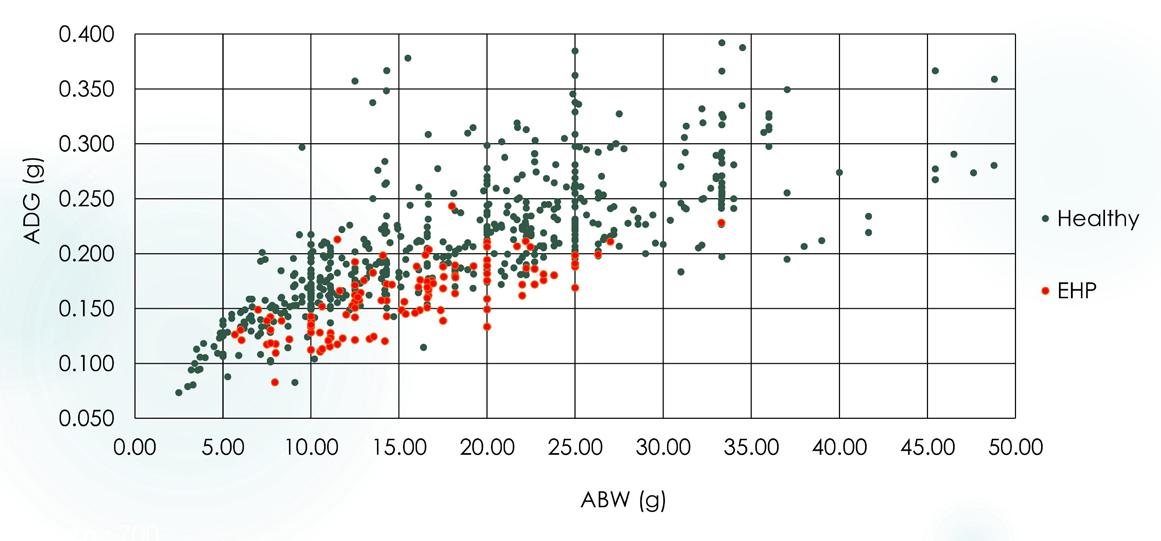
1. Average daily growth (ADG) in healthy and EHP ponds from a survey of 700 ponds in
Krishna & West Godavari (Dt.), Andhra Pradesh, India
Ultimately, we see an increase in the cost to produce shrimp in EHP affected ponds due to slow growth and low survival rate. The increase in COP was around 20 to 30% in the affected ponds.
In 10g shrimp, we can see the effects of infection. The FCR of 10g shrimp rose by 15% and survival rate was down by 5% (Figure 2). In 15g shrimp, FCR went up by 25% and survival rate dropped 10% (Figure 3).
Table 1. Production cost of shrimp/kg between higher (36%) and lower protein (32%) feed from trials in Andhra Pradesh (Total ponds = 125; 65 ponds with 32% CP; 60 ponds with 36% CP; Stocking density =25PL/m2; SR=survival rate (%); salinity range= 5-12 ppt; Pond size -1ha; DOC- days of culture; COP=cost of production. Source: Growel Feeds Pvt Ltd, India.
Stocking Density: 30 PL/m2
in healthy vs EHP ponds at
Table 2. Average daily growth (ADG) in healthy vs EHP ponds at various average body weights (ABW).

Figure 2. Feed conversion ratio (FCR) and survival (%) for 10g size shrimp from noninfected (healthy) and EHP infected ponds. Note: 33.8% of EHP affected ponds were harvested between 9 and 11g body weight. Source: Growel Feeds Pvt Ltd.

Figure 3. Feed conversion ratio (FCR) and survival (%) for 15g shrimp from non-infected (healthy) and EHP infected ponds. Note: 33.1% of EHP affected ponds were harvested between 14 and 16g body weight.
In summary, use of low protein feeds shows a difference in the cost of production as long as they are of high quality. It is recommended to use high quality protein for shrimp up to 3g size and subsequently, switch to a low protein feed at the grow-out stage. Ponds fed with low protein feeds show less pond bottom problems.
With regards to shrimp infected by EHP, we showed that FCR was higher by 1525% while survival rate decreased by 5-10%, for size 10-15g. The increase in COP was around 20 to 30% in the affected ponds.
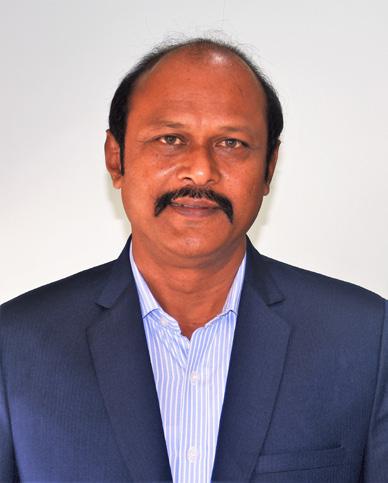

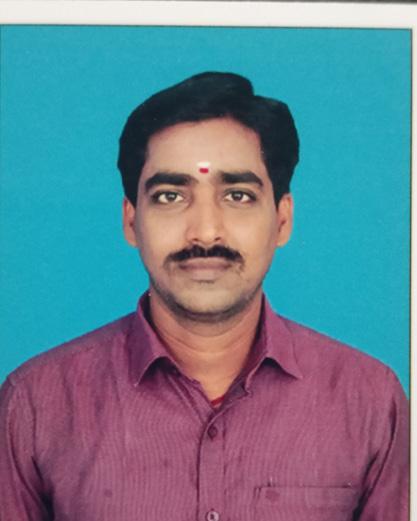
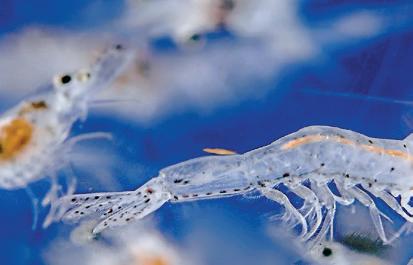

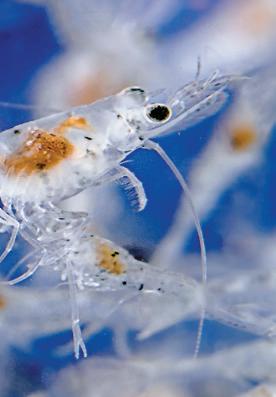


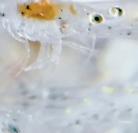
A one-of-a-kind feed for one-of-a-kind results.
Highly digestible proteins 100% from marine origin GMO-free
Includes organic acids and advanced probiotics

Invest in MegaSphe today and watch outstanding production results.


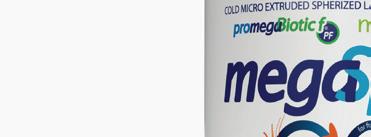

B. Ravikumar is Assistant Vice President - Sales & Technical Email: ravikumar.b@growelfeeds.com
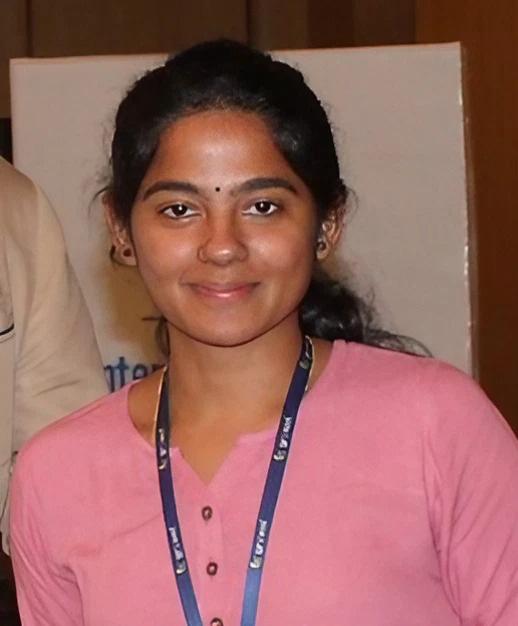
Dr Victor Suresh is Technical Director.
Gnana Sri is Technical Coordinator. Email: tse@growelfeeds.com
Uma Maheswararao is Manager –Technical. Email: umamaheswararao.r@growelfeeds.com
Dr Chandhira Sekar is Assistant Manager – Technical
The above authors are with Growel Feeds Pvt Ltd, Andhra Pradesh, India.



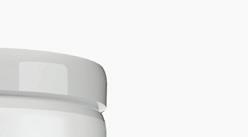



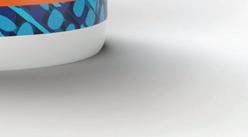


Nurturing from the start. Let’s aquaculture together ®
www.megasupply.com orders@megasupply.net
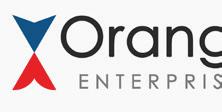


EXCLUSIVE DISTRIBUTOR FOR INDIA salesorangeenterprise@gmail.com +91-9962525791
Nick Piggott, Co-CEO and Co-founder of insect meal producer Nutrition Technologies describes its beginnings and growth trajectories
Nutrition Technologies, a pioneer of sustainable agriculture in Malaysia, manufactures protein, oil, and organic fertiliser from black soldier fly (Hermetia illucens) larvae. Its zero-waste production model delivers insect-based products beneficial to pet food, livestock, and aquafeed industries. Through a blend of beneficial microbes and larvae, cultivated on traceable agroindustrial by-products, they have created an eco-friendly production system with minimal energy usage and zero waste.
Since its establishment in 2015, the company has grown exponentially, with a primary production plant in Johor Bahru and facilities in multiple locations. Research collaborations with regional institutions and a research partnership with Evonik drive product innovation, supported by investors like Sumitomo Corporation and Bunge Ventures.
Recent milestones include partnerships with Sumitomo Corporation for distribution in Japan and the launch of organic biofertilisers.
Nick Piggott and Tom Berry are Co-CEOs and founders of Nutrition Technologies. Nick brings entrepreneurial expertise from founding Coffee Couriers and program management experience from his work with the United Nations Population Fund (UNFPA) in Sierra Leone. Before co-founding Nutrition Technologies, Tom specialised in risk management at Salamanca Group and served in the British Army and the United Nations in Sierra Leone. Together, Tom and Nick leveraged their diverse backgrounds to propel Nutrition Technologies’ mission of sustainable agriculture and environmental stewardship.
In this email interview, Nick Piggott explores the genesis of insect meal production in Malaysia, the sustainability initiatives and how Nutrition Technologies sets itself apart.
AAP: What are the key drivers behind starting insect meal production in Malaysia? Since starting the company in 2015 in Vietnam, Nutrition Technologies has expanded and grown. It now has the main production plant, laboratory and office at multiple sites in Johor Bahru, Malaysia, with supporting laboratories and offices in Vietnam and Singapore.
NP: We are strategically located in Malaysia, not only because it has the optimal natural conditions for breeding our tropical fly, but also because we have a great opportunity to make significant positive impacts and address several UN SDGs (United Nations Sustainable Development Goals) targets. This is possible through our zero-energy breeding and rearing models, reducing energy costs and associated emissions.
Malaysia also has a supportive regulatory environment, with strong oversight from the Department of Veterinary Services who supported us in being the first Asian producer to export insect meal to the European Union and a growing number of government policies, strategies
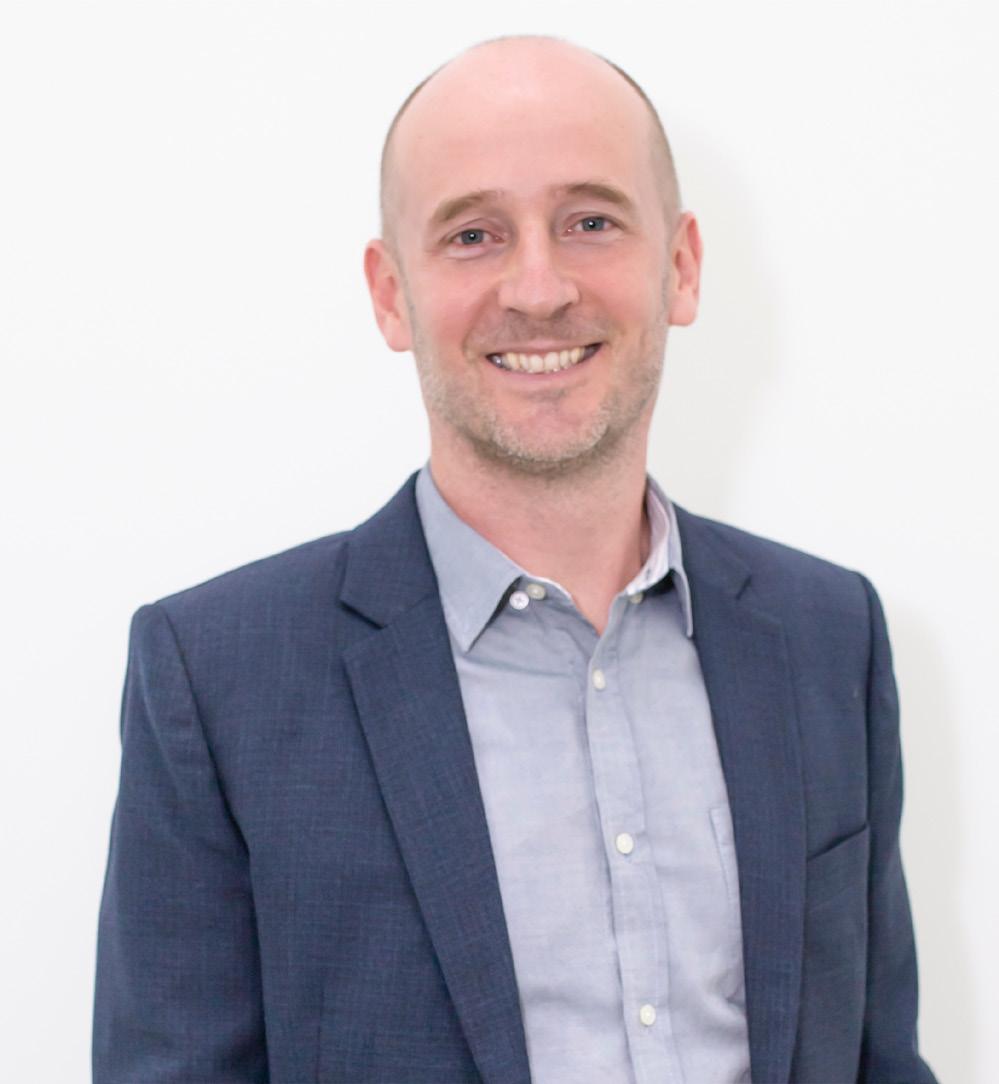
On how technology determines pricing strategies, Nick Piggott, Co-CEO and Co-Founder of Nutrition Technologies says, “We use zero energy and our overheads are lower compared to European manufacturers.”
and roadmaps that align to promote Malaysian AgTech businesses and develop the local biotech ecosystem.
What is your feedstock? Are there limitations regarding volume and scalability?
Our black soldier fly live in open-air cages outside our factory, happily breeding, and inside our warehouse, feeding on vegetables and grain by-products, including beer and coffee. Black soldier fly love coffee! Johor Bahru is the heart of food processing for Singapore, so we have extensive raw material options. We also use a lot of lowgrade palm by-products that cannot otherwise be used for animal feed, so we are genuinely reclaiming nutrients that would otherwise be lost. Malaysia generates around 4 million tonnes of palm waste annually, so there’s plenty of supply!
We do have plans to expand in the next year or so to a second factory (also in Malaysia) to keep up with the growing demand and to support Malaysia’s ongoing quest for food security. The Prime Minister has been publicly pushing the AgTech agenda recently, so the timing is great for us.
What are the specifications of your insect meal, and what markets do you primarily target?
Our insect meal is made from 100% black soldier fly larvae, and we offer a range of specifications depending on the customer’s application. For example, we sell a lot to the swine sector, which prefer a full-fat meal (based on the attractive fatty acid profile), but the aquafeed customers
generally prefer a defatted meal. The fatty acid profile is heavily weighted towards saturated fats (approx. 60%), with a high proportion of lauric acid and other MCFAs (medium chain fatty acids).
We are 2 years into a research partnership with Evonik, working on identifying the limiting amino acids in black soldier fly production and optimising the larvae’s amino acid profile. So far, results are great. We also did a salmon feed trial with AB Agri in the UK in 2023 as part of a Horizon 2020 project and saw digestibility scores of 90.1% for crude protein, and 90% plus for almost all of the individual amino acids.
We sell mostly to livestock and aquafeed mills in ASEAN markets, as our company focuses on supporting food security, although we also sell to pet food manufacturers. In 2023, we released two new bio-fertiliser and diseaseprevention products (Diptia and Vitalis) for the Malaysian agricultural sector, so we’re also doing a lot of work in that area.
Where does Nutrition Technologies stand today, and what have been key milestones along the way?
As with any young, ambitious company, every time we meet a target, we set a new one, so we’re always chasing something! We have met our factory utilisation and output targets, and we’re now working on developing and launching new portfolio of products. We expect to have a new range of animal feed products in 2024, as well as expanding our range of plant health products and the markets that we can export them to, including Thailand, Indonesia, and the Philippines.
What distinguishes Nutrition Technologies from other players in the industry?
We use zero energy, and our overheads are lower compared to European manufacturers. Our broader portfolio of products means we benefit from economies of scope, meaning we can control the selling price of all of our products, as we have a wider revenue base than any other producer. On the production side, our fermentation technology enables us to use lower-grade raw materials that otherwise wouldn’t provide sufficient nutrition to the larvae.
However, by growing bacterial biomass in the fermenter, we’re effectively farming microbes to feed the larvae, to feed the fish, to feed the people!
How do you plan to scale up operations, and what factors influence your pricing strategy?
We are developing plans for a second site in Malaysia already, which we expect to be operational in 2026. Using the same blueprint as we have today minimises risk, and we have very forward-leaning investors and regulators here in Malaysia. We have always shied away from charging a ‘sustainability supplement’, where we sit in the value chain, any additional costs that we charge need to be absorbed by someone or passed right the way through to consumers, which is currently challenging.
We price based on the nutritional + functional value of the products only and trial data. Insect meal and oil should get into a formula on merit rather than by forcing it in for sustainability objectives. Because we work on that basis, we’re incredibly competitively priced in both aquafeed and livestock sectors.
How do logistics costs impact your production, and what are your transport logistics within ASEAN countries?
All our materials are locally sourced, so we have limited logistics costs. We have a range of suppliers for each material we use so we can move between suppliers when they adjust their pricing to keep our input costs stable.
We manufacture in Malaysia, but we are located about 20km from Singapore port. Our outbound logistics costs are extremely low, and shipping is frequent to every corner of the world. We get 40 containers to Bangkok in a few days for under USD1,000 and to Rotterdam in 4 weeks.
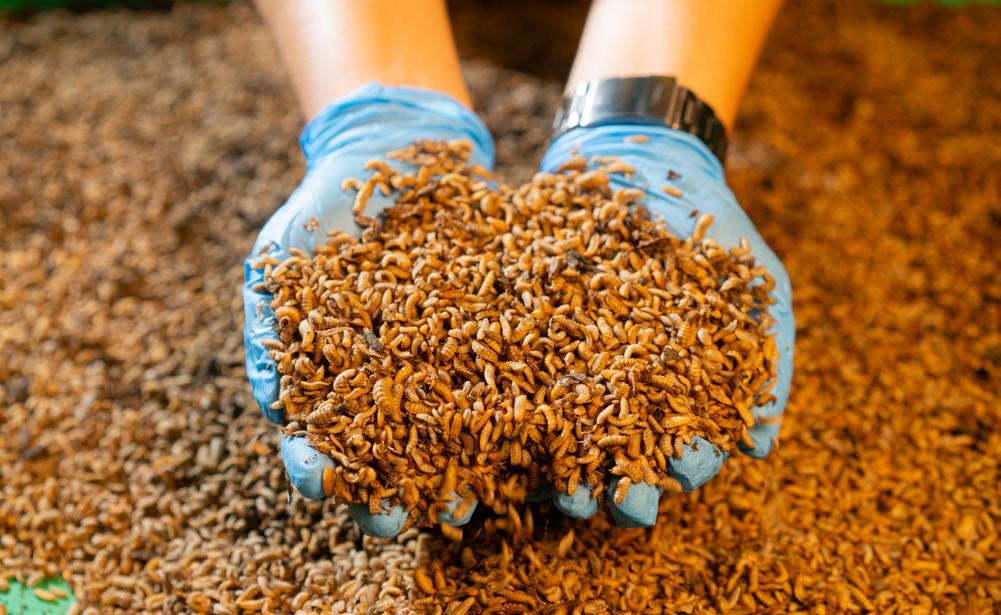
Tell us about your sustainability initiatives and how you see your contribution to a circular economy. Our business model is based on nature’s own decomposition ecology to create a virtuous cycle, reusing today’s waste to make tomorrow’s raw materials. As we look to close the loop and build a circular economy, we recognise that we are one part of a wave of change helping to create a more sustainable and inclusive tomorrow.
The UN SDGs help chart a course towards that future. We demonstrate our commitment by aligning with and measuring ourselves against the relevant UN SDGs. We are active members of the UNGCMYB (UN Global Compact Malaysia & Brunei), and we have won awards in the last two years running at the UN Global Compact as Sustainability Icons, and for Gender Equality. We also have an internal ESG Committee, a Board Level ESG sub-committee and produce an annual sustainability report.
Lastly, what are the expansion plans, particularly for the aquafeed sector?
We continue to look for opportunities to work with feed producers in the region on refining product applications, as well as developing and testing new products. We have a product coming out for ornamental fish later this year, as well as some species-specific ‘enriched’ products in the pipeline, which we are keen to get into customers’ hands.
We see many uses for our core Hi.Protein® product range, both full-fat and defatted, in companion animals, livestock and aquafeeds. These products offer nutritional or functional benefits, and I can only see their uptake growing over the coming years.
A sobering assessment of where we are in the search for new protein sources following a workshop at ISFNF 2022
By Brett D. GlencrossAfew years back in 2022, ahead of the International Symposium on Fish Nutrition and Feeding (ISFNF) held in Sorrento, Italy, IFFO facilitated a workshop to discuss the current and future landscape in protein resources being used to feed aquaculture. It was a lively workshop with a nice mix of academic and industry participants, with some excellent presentations and discussion emanating from the day. As an outcome, it was decided that we should write up the proceedings as a review.
So, after a long gestation period, recently, the leading scientific journal in fisheries science, Reviews in Fisheries Science and Aquaculture published a review led by me and a cohort of some of the best fish nutritionists in the world, who contributed on the day. With a variety of new feed ingredients emerging in the aquaculture feed sector, the recent publication of a major review encompassing a strength-weakness-opportunities-threats (SWOT) analysis, provides some sobering assessments of where we are in the search for new protein sources.
This article is based on that review published as: Glencross, B., Ling, X., Gatlin, D., Kaushik, S., Øverland, M., Newton, R., & Valente, L. M. (2024). A SWOT Analysis of the Use of Marine, Grain, Terrestrial-Animal and Novel Protein Ingredients in Aquaculture Feeds. Reviews in Fisheries Science & Aquaculture, 1-39. https://doi.org/10.1080/233 08249.2024.2315049
Dealing with the constraints of reality
To place the role of ingredients in context, it really helps to consider the process of feed formulation first. Indeed, when you start to analyse that process of formulation in some detail, you quickly realise that it is a system driven by demands for nutrients, not ingredients. However, the catch here is that you must rely on ingredients to supply those nutrients, but that reliance also brings in various unintended consequences and risks.
To manage those risks, we place what are called “constraints” on the formulation in terms of minimum and/or maximum inclusion levels of those ingredients
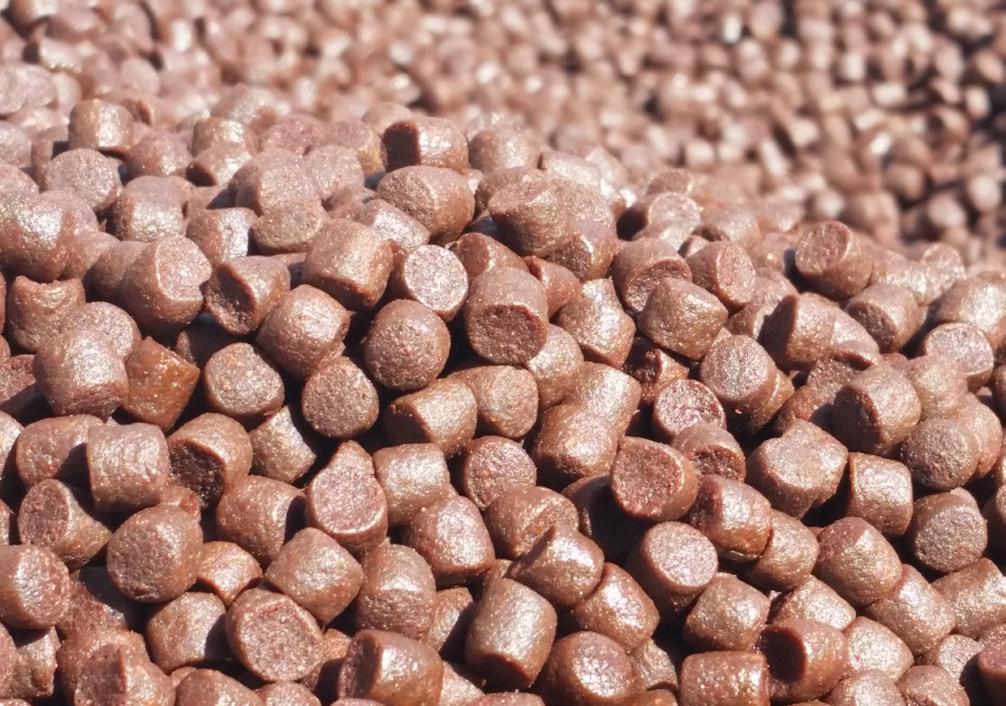
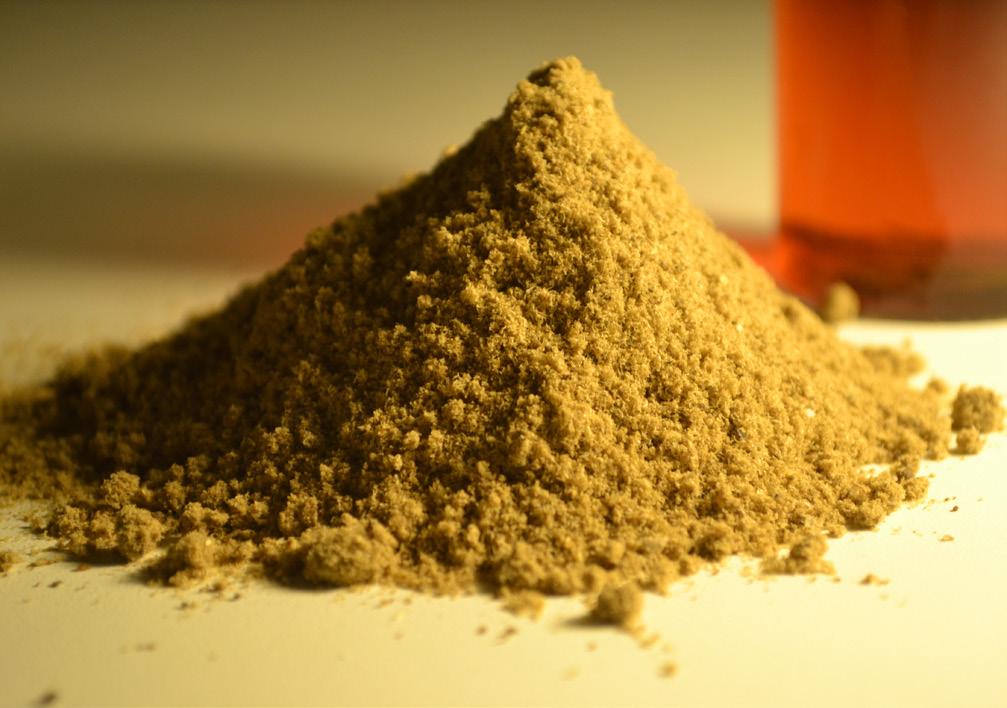
under consideration. What constitutes minimum and/or maximum levels depends on a wide array of factors, and they are not necessarily fixed either in that they can be flexible and subject to what other ingredients might be in consideration.
In addition, some of the key issues in dealing with emerging ingredients (and even the more established ones), can be dealing with the technology-readiness level (TRL) of the material;
• Is it still a laboratory experiment, or is it something available at scale?
• What about the cost, as fundamentally the feed manufacturing process is driven to generate profit?
Notably, the TRL can play into this aspect quite significantly. In recent times though it was noted in the review that more than “least-cost” considerations, including issues such as least-risk (feed/food safety) and societal issues (sustainability, environmental footprints, labour) have become major drivers.
The process of defining constraints is increasingly moving towards an environmental, social and governance (ESG) framework as well. Once you have a better overview of what the various constraints you need manage, and what different limits are, then it is the kind of situation where mathematical multi-variate modelling comes into play, and hence the evolution of linear formulating programs. However, a critical part of the ingredient story remains in working out what are our best options.
How to tell the good from the bad…
The key role of ingredients, as discussed earlier, is to be the vehicles for delivering nutrients. However, like all biological entities, their capacity to do this can vary widely based on a suite of background features including:
• Material origin (species/geography);
• How it was processed;
• Level of contaminants, and
• Non-nutritive content.
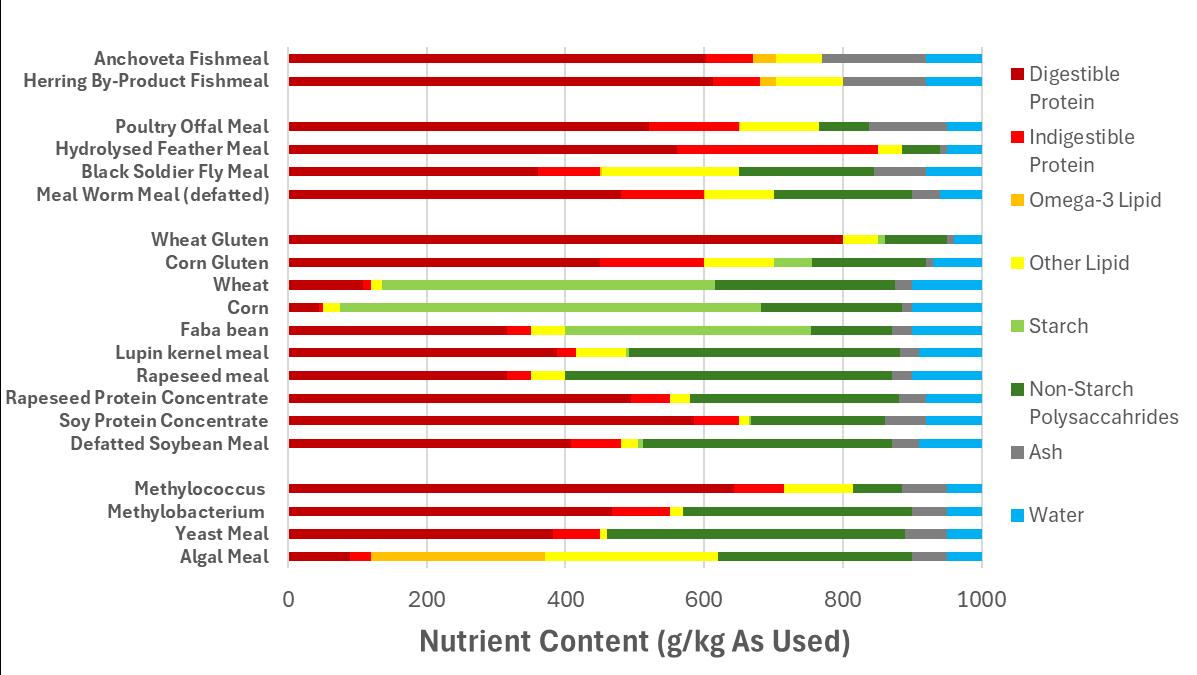
Figure 1. There can be substantial variability in compositional characteristics even among similarly perceived ingredients. Even subtle differences can sometimes be important.
Figure 1. There can be substan^al variability in composi^onal characteris^cs even among similarly perceived ingredients. Even subtle differences can some^mes be important.
If we consider the variation in composition of the key macronutrients of a range of feed ingredients as in Figure 1, we can quickly appreciate the variability situation. Indeed, to consider the use of any ingredient for use in a feed it is critical that we understand what it is that is being assessed.
This assessment of the “what” is referred to as the characterisation process. This characterisation process can involve an assessment of various data sets, but fundamentally, the feed industry requires this information from ingredient suppliers in the form of a technical data sheet (TDS), an information dossier that provides a range of characterisation data so that a desktop assessment of the suitability can be carried out.
In the review being discussed in this ar=cle, those various ingredients cons=tuted marine ingredients These are produced from either forage (reduc=on) fishery or by-products from both fishery and aquaculture resources. We also considered processed animal proteins (PAPs), which in the context of the review included those resources made from terrestrial animals produced for human consump=on from which by-products are generated. Also considered are insect and annelid meals, which like the other terrestrial animals are also cul=vated and come under similar biosecurity legisla=on.
However, the main feed ingredient class considered, which makes up the largest volume of all global aquafeeds was the large variety of grain (cereals, oilseeds, pulses) protein sources. This included plant resources used either unmodified, or with varying degrees of processing from origins such as soybean, pea, faba (horse) bean, guar bean, lupin, wheat, corn, rapeseed, sunflower, among others.
However, assessment of ingredients requires more than just the characterisation – that’s just a screening process and step-1. After that stage we need to understand how those ingredients can be applied to a formulation, and for this we need to understand the ingredients digestibility and its influence on feed intake (palatability). It is only once we have those two additional bits of knowledge, that we are in a position to formulate a diet properly so that we can isolate ingredient effects from nutrient effects. So, as you may see, there is a clear logic process as to how we can tell a good ingredient from a bad one.
The final class of ingredients included in the review were the single-cell protein resources which included ingredients such as those produced from bacterial, yeast, fungal, or microalgal origins.


So, it was quite a collec=on of some VERY different ingredients, each with their own SWOTS.



In the review being discussed in this article, those various ingredients constituted marine ingredients. These are produced from either forage (reduction) fishery or by-products from both fishery and aquaculture resources. We also considered processed animal proteins (PAPs), which in the context of the review included those resources made from terrestrial animals produced for human consumption from which byproducts are generated. Also considered are insect and annelid meals, which like the other terrestrial animals are also cultivated and come under similar biosecurity legislation.
However, the main feed ingredient class considered, which makes up the largest volume of all global aquafeeds was the large variety of grain (cereals,
oilseeds, pulses) protein sources. This included plant resources used either unmodified, or with varying degrees of processing from origins such as soybean, pea, faba (horse) bean, guar bean, lupin, wheat, corn, rapeseed, and sunflower, among others. The final class of ingredients included in the review were the singlecell protein resources which included ingredients such as those produced from bacterial, yeast, fungal, or microalgal origins.
So, it was quite a collection of some VERY different ingredients, each with their own SWOTS.
“.. that in many cases the weaknesses of one ingredient could be matched with the strengths of other ingredients to identify opportunities for complementarity.”

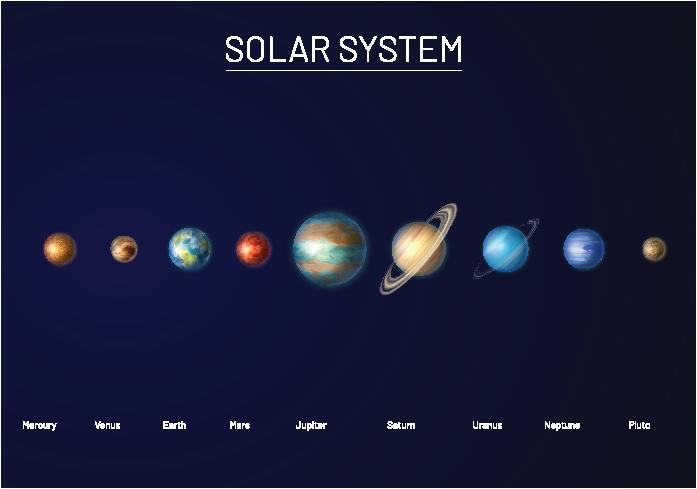


Figure 2. Characterising WHAT it is that you are assessing is the founda^on to the assessment process. Without it, no one can gauge the relevance of any subsequent assessment on what ingredients they might have access to.





One ingredient’s strength…. The analysis of the SWOTs of the four ingredient classes cons=tuted the bulk of the review. In lieu of a detailed descrip=on, Figure 3 is a simple pictorial summary of some of the highlights.

.. that in many cases the weaknesses of one ingredient could be matched with the strengths of other ingredients to iden3fy opportuni3es for complementarity.




ingredient had strengths and

The analysis of the SWOTs of the four ingredient classes constituted the bulk of the review. In lieu of a detailed description, figure 3 is a simple pictorial summary of some of the highlights.
One important observation from the exercise was that every ingredient had strengths and weaknesses. It was obvious that there was no perfect ingredient. In acceptance of the concept of no-perfect-ingredient, it led to another observation – that in many cases the weaknesses of one ingredient could be matched with the strengths of other ingredients to identify opportunities for complementarity.
For example, soybean has the scale and stability of supply and consistency of product quality but lacks palatability for many species. Fishmeal though is limited in supply but has excellent palatability characteristics. Hence, we see a strong complementarity between the two. Perhaps unsurprisingly, in formulations for many species around the world, we see it is common practice to combine these two ingredients to leverage those strengths and mask the weaknesses.
But this is only one example, and many were observed. Of particular interest in the SWOT analysis was the assessment of the single-cell proteins and some other emerging ingredients like insect meals. While cases assembled for the SWOT analysis highlighted much potential for this sector, it also noted that it was unlikely to supply the millions of tonnes of new ingredients needed in the next few decades. So, what to do for the future?
One of the only guarantees about forecasting the future is that you will unlikely ever get it 100% right. However, like many other navigational exercises, if you know where you are now (the present) and where you have come from (the past), you can sort of map out trajectories of where things might go over the near-term.
It was in this light that the review highlighted the importance of increasing production of a variety of feedgrade sources of protein. A notable point the authors highlighted was that ideally new resources should not compete with the potential to directly feed humans. To summarise, a series of clear options going forward were proposed:
Option 1: Improve management of existing resources to increase their productivity
Several natural resources that underpin feed-chains in the aquaculture sector were identified. Prominent in the aquaculture context were those of fisheries and soil fertility. For fishery resources the setting of a maximum sustainable yield (MSY), is a key part of that process.

Leiber ® Beta-S
Highly purified ß-glucans | Immunity booster | Increased resilience | Improved vaccinations
Leiber ® Beta-S Plus The ß-glucan alternative | Synergistic blend of pure ß-glucans and MOS

Nutritional balance
Well managed fisheries
Price stability

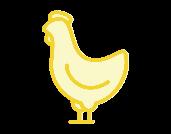
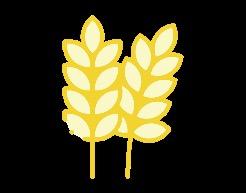
Rich in protein
Availability
Cost effectiveness
Prebiotic effect
Scale of production
Price affordability
Acceptability
Efficient nutrient transfer
No competition with food
High protein level
Public perception
Limited capacity to increase production
Low social acceptance
Complex processing
Variable composition
Lack of EPA&DHA
Chitin
Nutritional characteristics
Environmental footprint
Some compositional aspects
Considerable processing
OStraight forward processing
Potential for circularity
Environmental footprint
Growing availability
Progress with furtherprocessing
Environmental footprint
Value-adding potential
Improved nutritional qualities (GM techs)
Improved nutritional qualities (GM techs)
Value-adding potential
Bioactive co-factors
Exposure to climate change IUU
Political instability
Regulatory constraints
Limiting legislation
Adulteration Energy costs
Exposure to climate change
Competition with food Energy costs
Cost Scale of production
Figure 3. A summary of the Strength-Weakness-Opportunity-Threat (SWOT) analysis of four classes of aquaculture feed ingredients.
There also have been arguments that fisheries should be managed to harvest well below their MSY and closer to their maximum economic yield (MEY), to allow for gains in productivity of some fisheries over their longer-term.
Long-term grain production is underpinned by soil fertility. However, many current agricultural practices, result in a systemic loss of soil fertility and changes in agricultural practices are increasingly being seen as essential to help rebuild soil quality across the world. Importantly though, the extent of these issues with both fisheries and agriculture, varies considerably across the world.
Option 2: Irrespective of the resources, ensure no waste
While arguments have been made for how we better manage our food and feed resources to minimise losses and reduce wastage, a reality is that sometimes the best outcome for a resource is for it to be used as feed. For example, with fishery resources, while by-products from fisheries constitute a biomass of some 4.5 million tonnes producing 995,000 tonnes of fishmeal in 2020, the full scale of the uneaten biomass from the 60 million tonnes of fish harvested annually for human consumption remains to be fully exploited.
Terrestrial animal by-products are another resource that could be much better utilised by the aquafeed sector than is currently the case. A growing opportunity in this regard has been the use of agricultural crop wastes in the production of insects and single-cell proteins to better valorise the use of those resources.
Option 3: Further develop non-competing resource production
It is critical that we also consider that the ultimate objective is the production of more food. We need to generate something new to use as feed materials, as everything that is currently being produced has a market somewhere. There are clear opportunities in the production of ingredients that can be made from using inorganic or non-food resource bases, things like many of the single-cell ingredients. Each of these resources truly represent new, and non-competing resources. While this sector has a range of techno-economic challenges to address, significant progress is being made around the world on this front.
As stated earlier, it was noted that all ingredients have strengths and weaknesses, and that there is no such thing as the perfect ingredient. However, by better appreciating the positives and negatives of each ingredient, it becomes possible to increase our adaptability in responding to the various opportunities for their use in feeds and improve our sustainability of the sector moving forward.
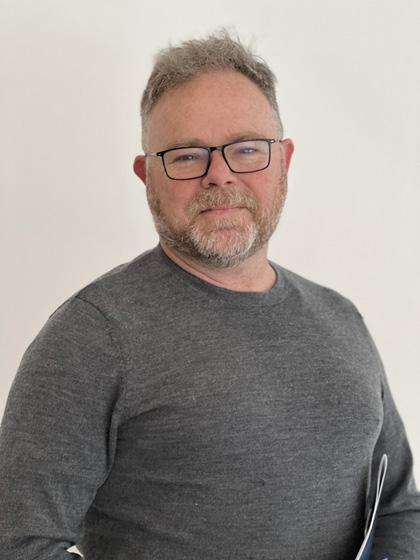
Brett D. Glencross is Technical Director at IFFO The Marine Ingredients Organisation, United Kingdom. Email: Bglencross@iffo.com
The global shrimp aquaculture production survey by the Global Seafood Alliance, and the Rabobank report published in November 2023, ranked “market prices” as the top concern in 2024, surpassing “aquafeed (cost)”, which was the top concern in 2022 and 2023. This highlights the challenges posed by not only high feed prices and production costs, but also the industry’s current struggle with oversupply and low market prices in some sectors.
Feed cost ranking as one of the major concerns is not a surprise as it typically constitutes more than half of the production cost - between 45 to 70% - of aquaculture farming systems, as indicated by FAO data and Aqua Culture Asia Pacific May/June 2023 in the case of the vannamei shrimp. Particularly for shrimp and carnivorous species, fishmeal stands out as the most expensive ingredient in feed formulations. Similarly, when considering nutrients, protein consistently ranks as the most expensive component.
Although efforts have been made towards a better understanding of the nutritional requirements of aquaculture species, there is still room for reducing protein and fishmeal level in aquafeeds.
It is essential to gain a comprehensive understanding of the concept of protein and its management in aquafeed. Frequently, farmers assess feeds based solely on crude protein content, while regulations sometimes stipulate minimum specifications of crude protein levels. However, focussing solely on crude protein overlooks critical aspects for three main reasons.
First, crude protein analysis is most of the time an indirect analysis (Kjeldahl method). This method measures the nitrogen (N) content within a sample, and the resulting value is then multiplied by a coefficient of 6.25, which is the standard for animal feed. However, it is crucial to recognise that the nitrogen content in aquafeed samples may originate from various sources, beyond just protein, such as phospholipids, chitin, biogenic amines, urea formaldehyde and other nitrogen-containing compounds.
Secondly, protein is made of amino acids, 20 in total. Some are essential, while others are considered semiessential or non-essential. Maintaining a balance between amino acids is crucial to support optimal metabolism and animal growth. This principle is known as Liebig’s law or the law of the minimum, which stipulates that growth is not determined by the total resources available, but by the less abundant resource - in this context, the limiting amino acid. Consequently, a high crude protein value in feed, without adequate coverage of essential amino acid requirements, can result in suboptimal growth and elevated feed conversion ratios (FCR). Additionally, the excess nitrogen may adversely impact water quality. For example, a vannamei grower feed with 38% crude protein
and only 1.5% lysine may cause poor growth, high FCR, and increased ammonia levels in the pond.
Finally, crude protein is what animals consume, but it does not reflect what is effectively utilised for metabolic functions and growth. Determining the precise fate of nutrients in animals is complex, but digestibility assessment provides valuable insights. In both livestock and aquaculture, digestibility is typically calculated for protein, selected amino acids, energy and phosphorus.
Digestibility is influenced by two main factors. Firstly, it depends on the nature of the ingredient itself. For instance, phosphorus derived from animal meals is highly digestible, unlike vegetable phosphorus, which mainly exists in the form of phytic acid and is not easily digested. Phytic acid can also hinder the digestibility of other nutrients by binding to them, as it typically binds minerals and amino acids. Additionally, the digestibility of fishmeal protein may be hindered by excessive ash content. Proper storage conditions of raw materials are also crucial, particularly for maintaining the nutritional quality of animal protein sources.
The processing method also has a significant impact. Soybeans contain antinutritional factors such as antitrypsin inhibitors, which adversely affect proteolytic enzyme activities. Cooking is necessary to eliminate these factors. If soybean meal is undercooked, these antinutritional factors can indirectly hinder protein digestibility by reducing enzyme activity in the animal’s gut. On the other hand, overcooking can trigger Maillard reactions, causing lysine to bind to polysaccharides, making it unavailable for the animal and leading to decreased performance.
Finally, some processes can enhance digestibility. Raw feather meal is indigestible, but processing it with acids, heat, and pressure releases peptides and amino acids, transforming it into a highly beneficial ingredient for aquafeed.
This can be done with Economix which allows the reduction of fishmeal and protein levels in aquafeeds. TECHNA, France, developed this solution aimed at decreasing reliance on fishmeal through enhanced protein digestibility.
In 2019, the company conducted an extensive literature review examining the impacts of various ingredients on protein utilisation and efficacy in feed. Over 150 articles were meticulously analysed and synthesised, focussing on ingredients influencing protein utilisation in fish and shrimp. Key parameters assessed included protein digestibility, protein efficiency ratio (PER), FCR, protein retention, feed efficiency, and feed intake. A broad spectrum of ingredients was scrutinised, encompassing algae, enzymes, plant derivatives (whole, extracts,
or essential oils), organic acids and their derivatives, probiotics and prebiotics. This comprehensive study enabled the identification of ingredients with the greatest potential to enhance protein utilisation in aquafeed from a zootechnical perspective.
Palatability and feed consumption were also considered in the ingredient selection process. As the aim is to reduce aquafeed costs, the costs of these ingredients were carefully evaluated. This approach enabled the design of several products, which were subsequently tested to validate the optimal composition for this additive.
The efficacy of Economix in enhancing digestibility was demonstrated during a trial done in 2020 in SPAROS, Portugal, showing a significant increase in amino acid digestibility when fed to European seabass ( Dicentrarchus labrax ). Specifically, 13 out of the 17 analysed amino acids exhibited significantly higher digestibility coefficients compared to those in a control feed. Among these 13 were the crucial essential amino acids vital for the robust growth of fish and shrimp, including lysine, methionine, threonine and arginine. This trial also indicated numerically higher values, although not statistically significant, for protein, fat and energy digestibility (Table 1 and Figure 1).
Table 1. Results of digestibility improvement of feed when using Economix in diets for European seabass Dicentrarchus labrax done in 2020 in SPAROS, Portugal.
Two recent trials were conducted on vannamei shrimp in Indonesia and India. The aim of these trials was not to improve zootechnical performances, but rather to reduce feed cost while maintaining the same performances.
In the first trial, conducted in collaboration with Dr Romi Novriadi and his team at Jakarta Technical University of Fisheries, Polytechnic AUP in 2022, focussed on the utilisation of palm kernel meal (PKM) due to its high availability and competitive price in Indonesia. PKM, characterised by its fibrous nature and moderate protein content, was selected as a key ingredient for investigation. Various feeds were formulated with increasing levels of PKM (2.5%, 6% and 9%) and a control diet. Additionally, three more diets were formulated using the same PKM levels but incorporating 2 kg/tonne of Economix. The expected reduction in protein level from 36% to 35%

theoretically ranged from 35.75% (Control) to 34.08% (9% PKM + Economix) based on analysis results (Table 2). Moreover, fishmeal levels decreased from 10% to 8%, while poultry meal, soybean meal and corn starch were reduced from 12% to 11%, from 39.9% to 38.3%, and from 14.1% to 9.8%, respectively.
The inclusion of Economix in the feeds (namely 2.5% PKM + Economix, 6% PKM + Economix, 9% PKM + Economix) resulted in a cost reduction of up to 3.87% compared to the control diet.

data with asterisks are statistically different (p < 0.05).
Shrimp of 0.7g were stocked in 3m² hapas at a density of 50 PL/m², with each treatment conducted in five replicates. The shrimp were reared for 87 days. Results from one-way ANOVA analysis revealed statistically significant differences in FCR with a p-value <0.01 (Figure 2). However, upon conducting a two-way ANOVA analysis solely on the six feeds containing PKM, it was observed that the inclusion of Economix significantly enhanced weight gain (p-value <0.05), FCR (p-value < 0.01), and lysozyme activity (p-value <0.05).
Feeds containing Economix consistently exhibited better mean weight gain and FCR values, although not statistically significant, compared to the positive control (Figures 2A and 2B). These findings suggest that incorporating Economix contributed to an enhancement in shrimp zootechnical performances. Economix, combined with PKM, presents an effective solution for reducing fishmeal usage and crude protein content, thereby lowering overall feed costs.

Figure 2. FCR (A) and Weight gain (B) of shrimp raised during the trial in 2022 at the Jakarta Technical Universityof Fisheries, Indonesia. In Figure 2A, values denoted by different letters are statistically different (p < 0.05)
Table 2. Formulas used for trial in Jakarta Technical University of Fisheries, Indonesia carried out in 2022.
The second trial, conducted at the Central Institute of Brackishwater Aquaculture (CIBA) in India under the guidance of Dr Ambasankar and his team, tested the effects of four different feed formulas compared to a control on shrimp growth. The first two trial formulas, labelled Economix and a negative control, maintained the same raw materials as the control, but the proportion of fish meal was reduced by 3.56% (from 15.56% to 12%), and corn gluten was reduced from 4% to 3.5%.
These reductions were compensated by the inclusion of soybean meal, groundnut oil cake and sesame cake. The treatment diet had an additional 2kg/tonne of Economix, while there was no supplementation in the negative control formula. These adjustments resulted in a lower
protein content (from 36% to 35% theoretically; 36.5%, 35.7%, and 35.18% based on analysis results).
A second reformulation included the addition of rice distillers dried grains with solubles (DDGS, 45% protein) at 3% in the formula (Table 3). A negative control formula called “Negative control + DDGS” and a similar formula including Economix at 2kg/tonne called “Economix + DDGS” were produced. Protein value was further reduced for these formulas to 34.5% in theory and 35.69 and 35.07% according to analysis results. Despite slight variations in protein analysis and amino acid results, the differences between the control and test formulas were consistent, with lower protein and amino acid levels in the test formulas. The formula costs of the diets with Economix were reduced by 1.62% and 2.49%, respectively, compared to the control.

Table 3. Formulas used for the trial in 2023 carried out at the Central Institute of Brackishwater Aquaculture, India.
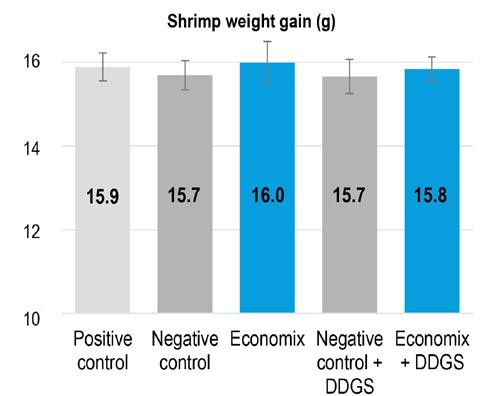
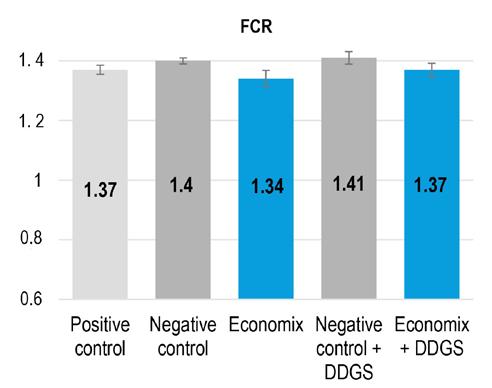
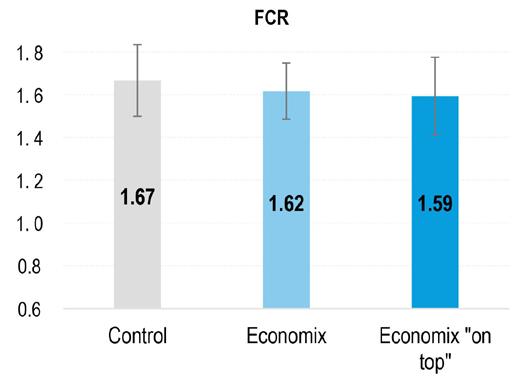

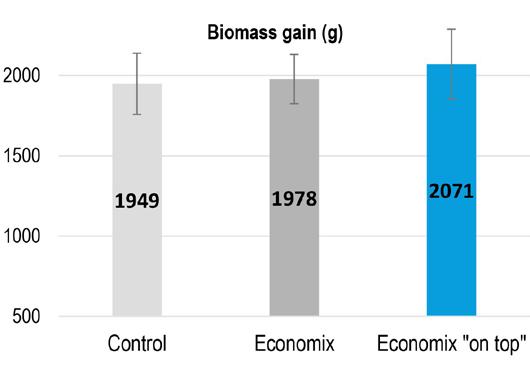
When performing a factorial design analysis (two-way ANOVA), significant differences were observed in FCR. The inclusion of Economix significantly improved FCR (p-value <0.01).
Furthermore, upon reviewing the overall data, there were numerical differences indicating lower growth in both negative control diets, with a final weight reduced by 0.2g and 0.23g, respectively. Conversely, the “Economix” diets showed numerically higher growth values (+0.1g). Results for Economix + DDGS closely resembled those of the control diet (Figure 3).
These trials suggest that cost savings in shrimp feed can be achieved without compromising performance by utilising Economix and reformulating the diets. Moreover, the observed statistical differences in FCR, rather than in growth, aligned with the product’s effect: enhancing protein digestibility, resulting in improved feed utilisation rather than enhanced growth.
Another trial was done on vannamei shrimp in Mexico; similarly, when used to reformulate the feed (-2points fishmeal and -1.5% protein), we saw growth and slightly improved FCR for a formula cost reduction of 2.2%. In this trial, Economix was added as a supplementation (Economix “on top’’). This addition to a standard Mexican formula reduced the FCR by 0.08 points, increased the final body weight by 0.3g, resulting in a higher final biomass (+6%). This indicates that Economix could also be used as a supplement to improve shrimp zootechnical performances (Figures 4A-C).
Finally, a trial done in France (Oniris) on trout in 2021 showed the same trend. Reformulating feed with lower fishmeal level (-2points) as well as a shift in fish meal quality (the Economix formula having lower quality fishmeal compared to control) and lower protein (-1 point) resulted in 1.56% cost reduction. Results showed slightly improved zootechnical performances for the formula using this additive compared to a control formula.
As seen previously formulation could further be optimised to reduce prices and at the same time improve the sustainability of aquafeed. It could be done by the use of additives such as Economix, but also by having a better overall approach on raw materials and feed quality.
Ensuring raw material quality and analysing their nutrients are the first crucial steps for optimal nutrition. Designing matrices with the appropriate nutrients and formulating feeds closely aligned with animal needs are essential. In addition to offering additives like Economix, Techna provides essential support to clients through consultancy services in aquaculture nutrition.

Pierre Fortin is Aquaculture Manager
Email: pierre.fortin@groupe-techna.com

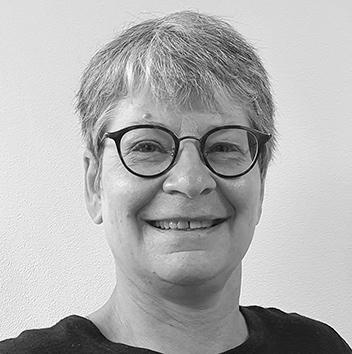
Nicolas Tanrattana is Aquaculture Nutritionist
Email: nicolas.tanrattana@groupe-techna.com
Sophie Reys is R&D Project Manager
Email: sophie.reys@groupe-techna.com
All authors are with Techna, France
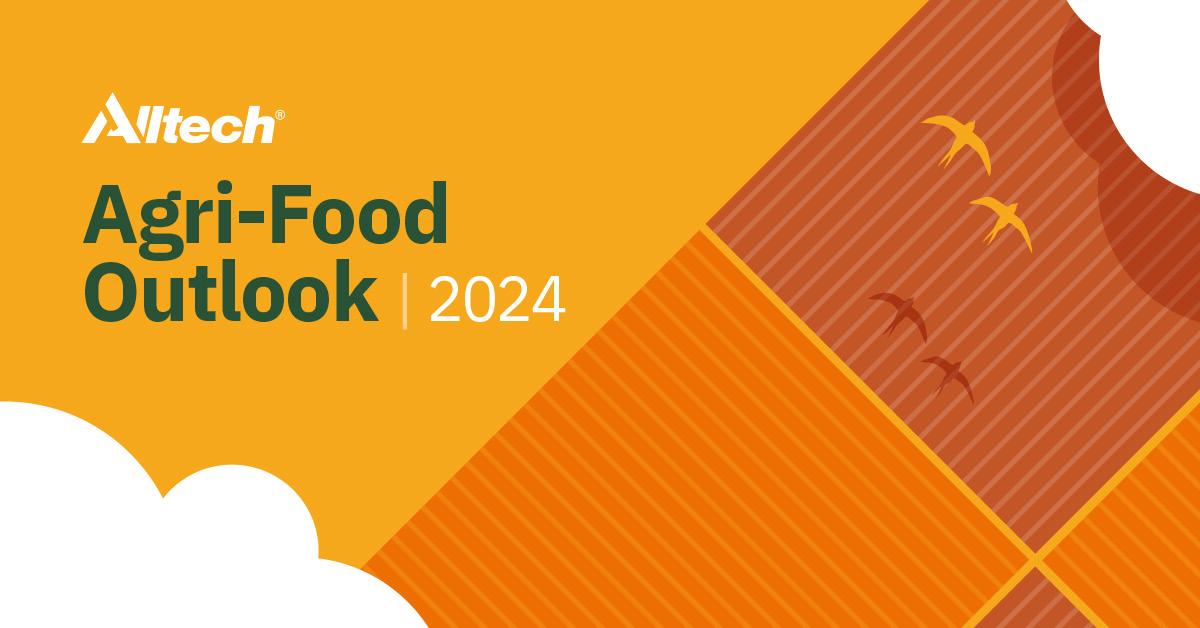
According to Alltech’s analysis of historical data from the Agri-Food Outlook, the feed industry has experienced an average annual growth rate of 3% over the past decade and a 3.7% average growth over the last five years. These figures underscore the industry’s steady progression and resilience amidst evolving agricultural landscapes.
Global feed production slightly down in 2023
Alltech’s estimates global feed production reached 1.29 billion tonnes in 2023, showing a marginal decrease of 2.6 million tonnes or 0.2% from the previous year. This decline in feed demand can be attributed, in part, to the adoption of more efficient production methods in intensive farming systems. These systems prioritise technologies such as animal nutrition and farm management to reduce feed consumption while maintaining or increasing protein output.
Additionally, the slowdown in animal protein production, driven by narrow profit margins in the feed and animal protein sectors, also contributed to the reduced demand for feed. Factors such as changing consumption patterns due to inflation, dietary trends, higher production costs, and geopolitical tensions also contributed to the trends observed in feed production in 2023.
Feed industry dynamics by region
Latin America has demonstrated consistent growth over the past decade, driven by robust exports in monogastric animal production and expanding aquaculture and pet markets. In 2023, feed tonnage surged by nearly 2.5 million tonnes, primarily led by a 2.6% increase in the broiler sector and a significant addition of 1 million tonnes in the
pig sector. Aquafeed production continued its upward trajectory, marking a 3.9% growth.
Asia-Pacific witnessed a modest growth in feed tonnage by 6.54 million tonnes or 1.40%, notably driven by steady growth in broiler, layer, and dairy sectors.
Europe faced a decline in feed production, especially in the beef sector, due to ongoing political and market crises, requiring sustainable feed solutions to address regulatory concerns.
North America reported a decrease in the number of feed mills and a slight rise in pet food plants, with the beef sector facing challenges and a 1.1% decline in feed tonnage. Lingering drought and high production costs posed further challenges, particularly in Canada where beef feed tonnage saw a significant drop of 10.15% in 2023.
Table 1: Feed production by region 2023 (Source: 2024 Alltech Agri-Food Outlook)
Trends and challenges in Asia-Pacific feed production
The trends impacting feed production in Asia-Pacific in 2023 are closely aligned with those highlighted
in Rabobank’s Global Animal Protein Outlook 2024. Economic factors and product prices significantly influenced consumer behaviour, with inflation and economic conditions being primary concerns. Changes in consumer preferences, particularly among millennials focusing on nutrition, quality, and convenience, influenced protein demand and feed ingredient choices.
Health factors and dietary trends, notably in Asia-Pacific, played a significant role. Diseases such as African swine fever (ASF) and highly pathogenic avian influenza (HPAI) remained challenging in China and Southeast Asia, affecting the broiler sector significantly. Geopolitical tensions and weather-related challenges also impacted production costs and supply chain consistency, with adverse weather events affecting the availability and quality of feed crops and forages in various regions.
The global aquaculture sector experienced a notable decrease in feed tonnage. With total production plummeting to 52.09 million tonnes in 2023, the aquafeed industry faced a decline of 2.42 million tonnes, equivalent to approximately 4.43%, compared to the previous year. A key contributor to this decline was the substantial reduction in China’s aquafeed volume. China, as the leading aquafeed producer, held sway over 40% of the global aquafeed market. The reduction of 2.398 million tonnes in China’s aquafeed volume in 2023 significantly impacted the global aquafeed landscape. Indeed, the decline in China’s aquafeed volume was largely influenced by sluggish economic recovery from the aftermath of the COVID-19 pandemic. With market demand slow to rebound due to lingering economic uncertainties, prices for farmed species remained depressed. Consequently, many were compelled to adjust their farming practices
such as reducing fish stocking densities or suspending fish farming activities temporarily.
In 2023, the Asia Pacific region dominated Aquafeed production with a total tonnage of 35.7 million tonnes although this marked a notable decline from the previous year’s figure of 38.42 million tonnes, representing a negative growth of 7.08%. Following closely, Latin America recorded a feed tonnage of 7.17 million tonnes, experiencing a slight increase of 0.27 million tonnes or 3.87% growth compared to 2022.
Europe trailed behind with a feed tonnage of 4.63 million tonnes, demonstrating a decrease of 0.14 million tonnes or a 2.89% decline from the previous year. North America showed a marginal growth in aquafeed production, with a tonnage of 1.78 million tonnes, reflecting a modest increase of 0.03 million tonnes or 1.43%. Africa exhibited a significant growth rate, reaching a feed tonnage of 1.57 million tonnes, an increase of 0.08 million tonnes or 5.53% from 2022. The Middle East and Oceania regions also experienced growth in aquafeed production, with the Middle East recording 1.02 million tonnes (5.43% growth) and Oceania 0.22 million tonnes (7.5% growth). Overall, while Asia Pacific remained the leader in aquafeed production, several regions experienced fluctuations, with Latin America and Africa showing promising growth rates, while Europe faced a decline.
The shifting dynamics in aquafeed production from 2022 to 2023 are intriguing, with most Asian countries witnessing a decrease while Latin American nations saw an increase. Despite reductions in aquafeed volumes of approximately 10% and 7.8% in China and Vietnam, respectively, both countries retained their top positions.
Table 3. Top 10 aquafeed producing regions (Source: 2024 Alltech Agri-Food Outlook)

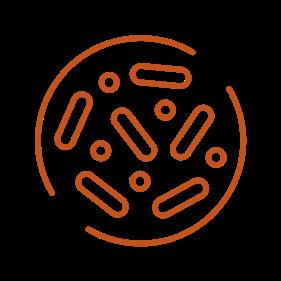
reduce this inflammation and support microbiota
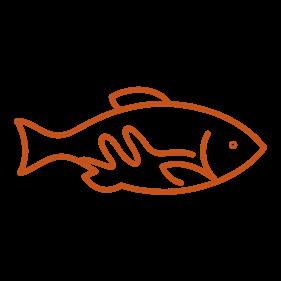
increase gut microvilli length and height, improving protein and fiber digestibility
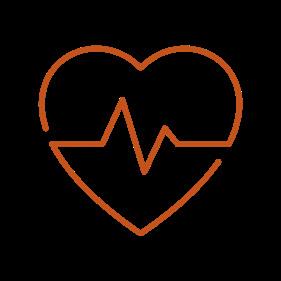
optimise g and immune capabilities for overall better health
The skin, gut and gills play a vital role in protecting the animal against potentially harmful environmental effects.
The gut is a complex system of tissues and organs that plays an essential role in all interactions related to several functions, including:
- Food digestion and absorption
- Metabolism and energy production
- Defense mechanisms
- Immune response
Scan this QR Code to get more information about Gut Health Solutions for Aquaculture

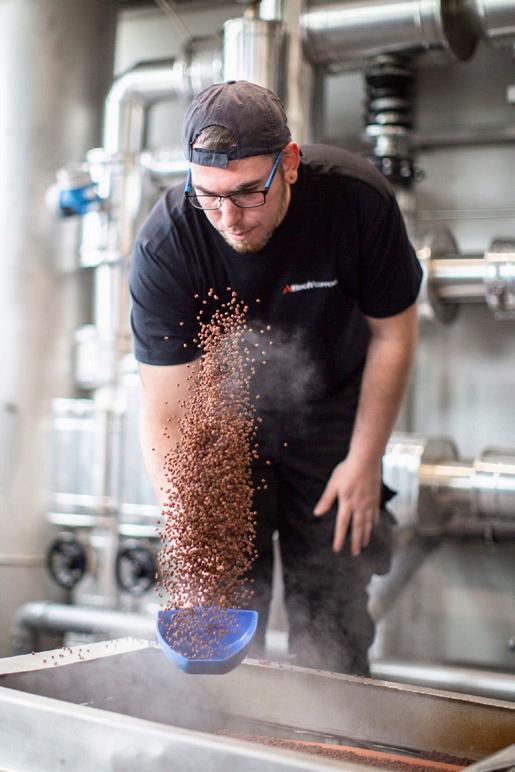

• China, despite a slowdown in aquafeed production, maintained its stronghold as the world’s largest feed producer, contributing a substantial 41% to the total aquafeed volume.
• Vietnam’s aquafeed industry faced challenges from lower shrimp market prices, diseases, and a decline in pangasius and domestic species prices.
• The Philippines saw a 25% decline attributed to reduced milkfish production and a shift towards higher-quality commercial feed, improving production efficiency.
• Bangladesh witnessed a 16.7% increase in aquafeed production, fuelled by rising domestic fish demand.
Conversely, Latin American countries-Ecuador and Chile experienced growth, with respective increases of 7.38% and 3.26% in 2023. Their export-oriented markets remained resilient amidst geopolitical tensions and adverse weather conditions, driven by robust demand for aqua products. Ecuador retained its position as the leading shrimp producer, while Chile emerged as the secondlargest salmon producer.
Norway faced significant challenges due to diseases in salmon and trout, resulting in increased mortality rates, reduced feed conversion rates, and compromised animal welfare. Notably, both Norway and Ecuador saw their aquafeed sector become the largest animal feed sector in their respective countries, highlighting the industry’s importance.
In the realm of aquafeed production, the outlook for 2024 presents a multifaceted landscape, as illuminated
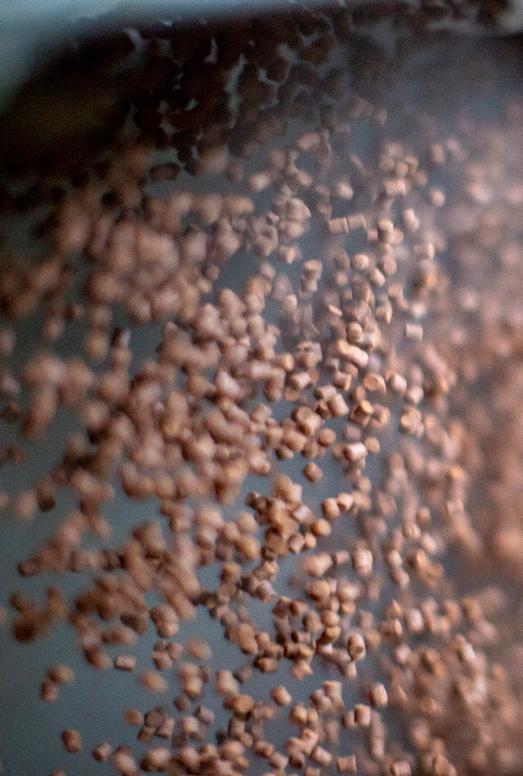
by the Alltech Agri-Food Outlook. Drawing insights from the qualitative survey, the industry’s trajectory comes into focus, revealing trends and technologies shaping its course. Notably, 2023 witnessed a downturn in aquafeed tonnage, with a decline of 4.4% (2.42 million tonnes), marking a significant departure from previous years. However, amidst this challenge, there’s a glimmer of hope, with 30% of respondents expressing optimism for sectoral growth in the forthcoming year. Most respondents believe that high raw material prices still dominate the list of challenges faced in agriculture around the world, along with low returns for producers and problems with animal diseases.
Looking ahead, industry projections for global fish and shrimp production in 2024 offer a beacon of hope, suggesting a potential rebound in feed production for countries reliant on these sectors. However, uncertainties loom large, stemming from global demand fluctuations, pricing volatility, and persistent disease challenges in the shrimp industry. Despite these obstacles, maintaining an optimistic outlook is crucial, as aquatic protein from aquaculture remains a beacon of hope, offering a promising future compared to traditional wild catch practices.
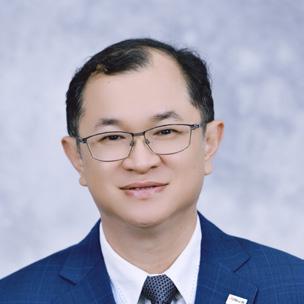
Dr Henry Wong is Commercial Development Director, Asia Aquaculture, Alltech. Email: hwong@alltech.com
Low feed demand as farmers react to low fish/shrimp farmgate prices
Aquafeed production volumes in Asia Pacific were lower in 2023, as reported in the Alltech Global Agrifood Outlook 2024. It was 35.7 million tonnes as compared to 38.42 million tonnes in 2022. In China, 2023 volumes were lower by 10% (see pages 3538). However, data for 2023 from the Thai Feed Mill Association suggested a 6% increase to 512,000 tonnes of shrimp feeds but volumes were lower for fish feeds. According to data, collected by the Aquaculture Department, Ministry of Marine Affairs and Fisheries (KKP), Indonesia, total aquafeed production declined marginally to 1.7 million tonnes for 2023.
In Vietnam, production of shrimp feeds increased 3% but there were mixed reports on volumes of fish feeds. In Malaysia, less shrimp feeds was used but there was a large increase in demand for marine fish feeds for seabass and milkfish farming (Table 1).
prices high input costs
Throughout Asia, the same situation reverberates –with low prices for final products and high input cost, shrimp and fish farmers are rethinking their farming strategy. “In India, shrimp farmers opted to reduce stocking of ponds, perhaps 5 out of 10 ponds and keeping to 30 PL/m2. Additionally, they take a gap after a disease outbreak in a pond. In late 2023 until early 2024, we had more outbreaks of RMS and WSSV,” said B. Ravikumar, Growel Feeds. “Other strategies included harvesting smaller sizes at 100/kg, delaying stocking while waiting for better prices to restock or in low saline farming areas, it was shifting to farming fish in shrimp ponds. With low farmgate prices, fish farmers shifted to cheaper farm-made feeds.”
In China, the historic low prices for largemouth bass, down to USD3.00/kg in Foshan (Guangdong Province), coupled with high pond rental costs and costly feed prompted many farmers to reconsider restocking and farming (Zhang, 2023). The export value of Vietnam’s pangasius fell 30% and even at good farmgate prices of VND28,500/kg (USD1.11), farmers were producing at cost with feed prices at VND14,500/kg (USD0.56), FCR at 1.6 and a high fish mortality rate up to 60%, due to the environment. Although prices were expected to increase with demand from China, farmers are downsizing, according to Vietfish magazine.
A contraction in feed consumption
In 2023, utilisation of freshwater feeds in China, mainly for the carps dropped by 15%. while those for marine fish and shrimp increased 10% and freshwater specialty feeds increased by more than 13%. The decline in consumption in China affected the production of five major aquafeed producers, all down to below the one million mark by a range of 0.3% to 23% (efeedlink.com).
At the Global Shrimp Forum 2023, Ramakanth Akula, The Waterbase, India expected a 15% decline in volumes of shrimp feeds in 2023, from the 1.35 million tonnes in 2022. Large integrated companies with feed operations and contract farmers were less affected. Vietnam’s Vinh Hoan, the largest pangasius integrator, restarted feed production in 2022.
In Indonesia, the contraction to 386,000 tonnes of shrimp feed is because of disease outbreaks and low farm gate prices.
The estimate on aquafeed production in 2022 for the Philippines was 120,000 tonnes of shrimp feed and 867,000 tonnes of fish feed, which included 520,000 tonnes of feeds for the milkfish and 347,000 tonnes for the tilapia ( Aqua Culture Asia Pacific , May/June 2023). An industry source said that volumes were just lower by 1%. in 2023.
Marine Shrimp feeds Change +/Fish feeds Change +/-
China 4,262,500 na 12,812,500 na India 1,147,500 -15% 1,100,000Indonesia 386,000 -5% 1,310,000Malaysia 97,000 -3% 206,000 + Thailand 512,000 +6% 570,000 -14%
Sources: Data for Indonesia -KKP; Thai Feed Mill Association; Data for China excludes farm made feeds, (Fuci Guo, pers comm). Malaysia-includes imported feeds and fish feed volumes comprised 50% marine fish feeds.
Table 1. Some estimates on aquafeed production (tonnes) in 2023
Commodity and feed ingredient prices skyrocketed in 2022 forcing feed companies to raise feed prices by 20-30%. Figure 1 provides animal feed ingredient prices in Thailand from 2021-2024 to illustrate this surge. However, this changed in 2023. Soybean meal, corn and wheat prices eased by 25%, 30% and 24% respectively during the period January to December. Feed companies are normally behind the curve when it comes to raising prices and thus margins are squeezed as raw material prices can be as high as 90% of the net unit selling prices in shrimp feed.
Due to the start of El Niño, Peru was forced to close one fishing season as fish sizes were too small. Peru contributes to 30% of global fishmeal production and prices for the year was rangebound between USD1,780/tonne and USD1,880/tonne for 65% crude protein fishmeal. Feed companies were able to reduce feed prices unless they were heavily reliant on fishmeal as an ingredient.
In AAP’s 2023 report, covering 2022 up to May 2023, feed millers in several countries detailed how they had to raise prices after absorbing the cost increases over the years 2021-2022. In Vietnam, the price of pangasius feed which contains soybean meal, wheat middlings, rice bran and tapioca was reduced by 8% in late 2023. There was no reduction in costs in India, but an industry source said farmers benefited via discounts. Haris Muhtadi, Shrimp Club Indonesia, said that in general, feed millers reduced shrimp feed prices by 7-10%.
While it is possible to reduce feed costs as feed mills in Vietnam have access to imported and local ingredients, a feed miller commented that local suppliers cannot guarantee there will be no antibiotics in their end products. This becomes an issue when looking for affordable, local fishmeal and fish oil. Another limitation for local sourcing is the need for feed to be ASC, BAP, Global GAP compliant. Naturally, these certifications always come with a premium on feed price.
At country and at individual company level, it is well accepted that feed production is operating under capacity. In Vietnam, Jeff Chuang Jie Cheng, Sheng Long Bio-Tech said that their production is 60% of capacity.
“India has more than 35 large and medium size feed companies; the total capacity is 3.3 million tonnes and production was at 40%,” said Akula. Indonesia’s Feedmills Association (GPMT) has 25 aquafeed mills registered. Deny Mulyono, Chairman Aqua Division said that their total capacity is 3.2 million tonnes/ year. There are 1,700 aquafeed producers in China in 2021. “The consolidation between Chinese aquafeed companies is not obvious,” said Yufan Zhang, Alltech China. “Since the total amount of aquafeeds in China has begun to decline, the competition has become more intense.”
In terms of market share, two market leaders, PT CP Prima and Japfa Comfeed share 40% of the shrimp feed market and 45% of the fish feed market in Indonesia. In India, the market leader, Avanti Feeds has 35% of the shrimp feed market. Therefore, the shrimp feed market is very competitive with around 12 local and multinational companies vying for the rest of the market.
Dealers play a major role in feed distribution in Asia. In Vietnam, Chuang said that dealers have become more discerning on credit terms. In India, dealers imposed stricter terms for credit. Feed millers themselves provide credit, some as long as 90 days with markups at 17%. The strength of the technical team is an important advantage. Chuang said, “We increased sales in 2023, with fish feeds at 330,000 tonnes and have 40% market share for tilapia and snakehead feeds. Despite a bad year for shrimp feeds with disease outbreaks, we improved sales and managed to have a 20% market share in the Mekong Delta and 35% in the central region. We have a strong sales and technical team of 500 staff.”
There is an expectation that shrimp prices will remain low in 2024. Industry expects low production to continue in India and demand for feeds from leading feed companies will decline further in 2024.
Fish meal and fish oil supply is expected to remain low. In its update in May 2024, IFFO noted that in the first three months of 2024, global fishmeal production dropped by approximately 27% compared to the same period in 2023. The cumulative output of fish oil through March 2024 was 30% down y-o-y.
Aquafeed production capacity is expanding in Vietnam. In 2023, De Heus constructed a 240,000 tonnes factory dedicated to pangasius feed. Sheng Long will expand with another plant in May as it strives towards a production of one million tonnes of fish feeds and 300,000 tonnes of shrimp feeds in 5 years. In southern Vietnam, China’s Yuehai Feeds Group has started construction of a 100,000 tonnes/year aquafeed plant. In Indonesia, PT Evergreen expanded with another feed mill in Java, with a production capacity of 200,000 tonnes of aquafeeds. Its first aquafeed mill is in Lampung, Sumatra.
wheat prices eased by 25%, 30% and 24% respec-vely during the period January to December. Feed companies are normally behind the curve when it comes to raising prices and thus margins are squeezed as raw material prices can be as high as 90% of the net unit selling prices in shrimp feeds.
References area available on request.
Due to the start of El Nino, Peru was forced to close one fishing season as fish sizes were too small. Peru contributes to 30% of global fishmeal produc-on and prices for the year was rangebound between USD1,780/tonne and USD1,880/tonne for 65% crude protein fishmeal. Feed companies were able to reduce feed prices unless they were heavily reliant on fishmeal as an ingredient.
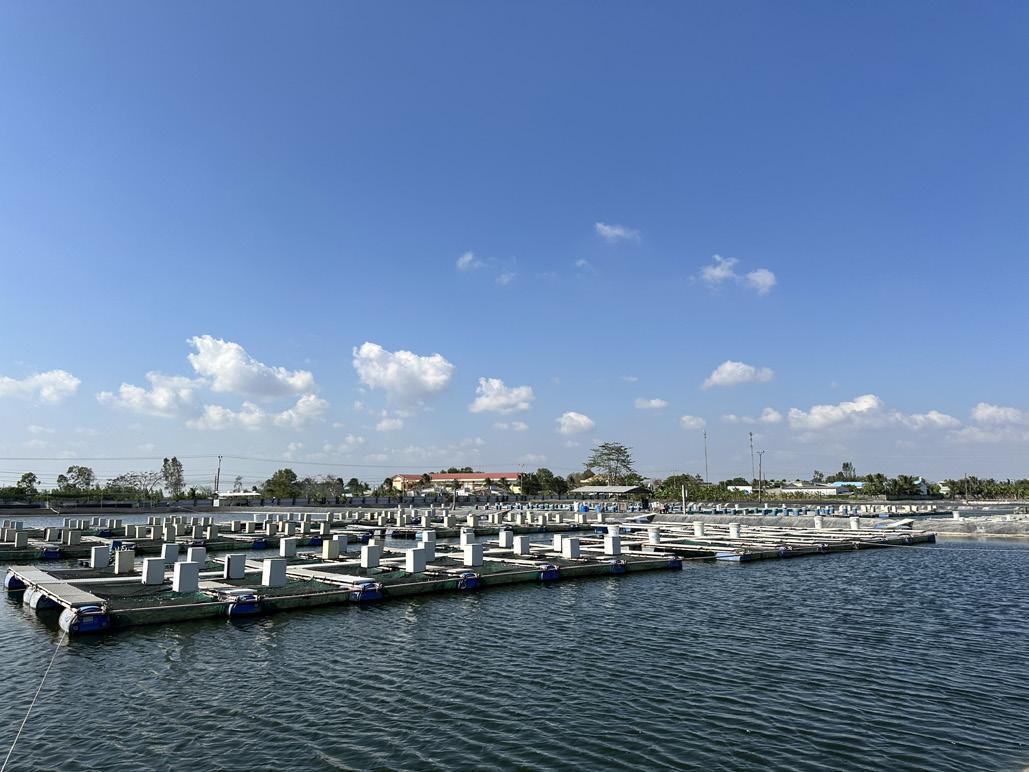
the R&D centre
and 18 sets of
are 16 sets of
Since 2016, Sheng Long Bio-Tech has been running its R&D and demonstration activities at an 18ha centre located in Soc Trang Province in the Mekong Delta. Ideally, the location with a large range of salinity from 0 to 25ppt gives the R&D team, led by Dr Liao Mei-Fu, Senior R&D Engineer, the option of carrying out feed trials for both fish and shrimp, fish in open cages and vannamei and monodon shrimp in an indoor wet laboratory. Sheng Long allocates USD1 million for R&D at this Soc Trang base to continuously improve its product competitiveness, test the quality of products and develop different functional feeds. A more important task is to solve aquaculture problems, from reducing farming costs and keeping up with market demand to help farmers achieve maximum benefits.
The R&D centre is divided into three areas: a 6.5ha R&D field test and demonstration area, comprising an 8.5ha tilapia breeding area, a 2.2ha shrimp farming area, and a 0.8ha sedimentation pond. There are three focus areas: broodstock rearing and fry production of Nile and red tilapia; Thang Long Smart Shrimp (TLSS) culture model and demonstration; centre and R&D for commercial aquafeed development.
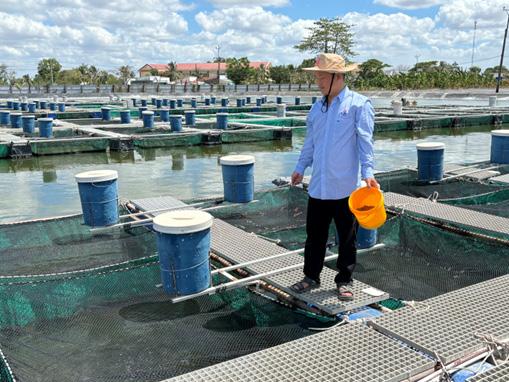

shrimp.
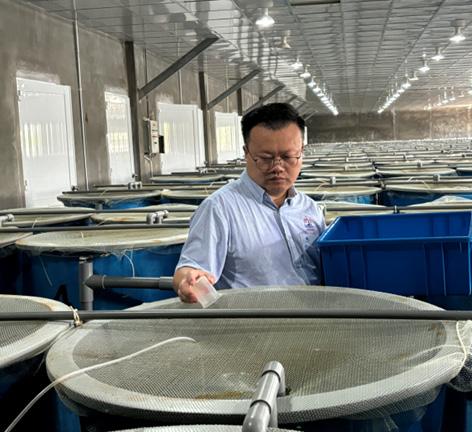
For the latter, there are 16 sets of cage test units complete with autofeeders for experiments with various fish species and 18 sets of recirculated water systems with a total of 432 tanks for vannamei and monodon shrimp. Approximately 150 experimental projects can be implemented yearly. Based on market and technical requirements, various types of experiments are conducted, such as on additives, nutrition, ingredient substitution, immunity, metabolism, etc.
Liao said, “Our main role is to carry out preliminary experiments and go further to solve problems in the market. We have carried out 500 validation tests. Dietary trials are from 8 to 16 weeks, each with 4 to 6 replicates and conducted by 20 technicians in Vietnam. Additionally, we have the resources of the 3,300-man team in China and share the database online. Our latest project is on the dietary requirements of the clown knife fish Chitala chitala .”
Seshu Akkina, COO attributes Deepak Nexgen Feeds’ unrelenting growth in India’s shrimp feed business to the hands-on strategy of its founders

Fish and shrimp feed producer Deepak Nexgen Feeds Pvt Ltd, crossed a successful 10 years in 2023, announced its COO, Seshu Akkina . Fish feed production started in 2012 and in 2017, there was a grand Bollywood style launch in 2017 when it started shrimp feed production. “We have showed a phenomenal growth with shrimp feeds. We started producing in 2018 and in 2020, we crossed one lakh (100,000) tonnes of shrimp feed. In 2024, we expect to cross 2 lakhs (200,000) tonnes of shrimp feed.” These come from its two feed plants with a total of 12 lines, in Andhra Pradesh. Feed production capacity is 300,000 tonnes of shrimp feed and 220,000 tonnes of fish feed.
Seshu started his aquaculture career in 1994 with Higashimaru Feeds and then with Hindustan Lever, followed by Cargill as Business Development Manager. With friends and progressive farmers, Nexgen was born in 2012. “We never imagined that we would grow this much and this fast. Our key advantage is that we procure raw materials ourselves. Our directors will go on site to do
thorough checks to avoid malpractice by purchasers. All our materials are bar coded to display origin.”
At the sidelines of Aqua India 2024, Seshu revealed his thoughts on industry trends and Nexgen’s success.
What were the most difficult constraints for Nexgen over the past 12 months?
Seshu: For all feedmillers, it has to be raw material and power costs. We saw raw material costs increase 17-18% over the last two years. Small and marginal companies have suffered losses; some leading feed millers have fared better while some multinationals are burdened with high overheads.
Procuring fishmeal supply is very challenging in India. Our producers are more interested in exporting. We only buy premium fishmeal and our challenge is just getting the material. The price of fishmeal is now INR120,000/ tonne (USD1,437), and soybean meal at INR54,000/ tonne (USD646). What is really astonishing is the price of fish oil at INR300,000/tonne (USD3,594).
Earlier we had subsidised power cost which was around INR2/kWh (USD0.02) in Andhra Pradesh. This was removed and our power is now INR3.5/kWh (USD0.04).
What trends have there been in feeding practices and feed specifications?
In feeding, we are now more focussed on feed conversion ratios (FCRs) because feed costs are high. Before, when there were huge margins, farmers were quite careless. Most are doing manual feed broadcasting. The adoption rate of autofeeders is low, maybe at less than 2%.
Specification wise, we have not made any changes. We still have separate feeds for black tiger and vannamei shrimp. But we are bearing the cost of higher prices of ingredients. We do not change the ingredients as we do not want to take the risk. I know that most feed millers have not made large changes to their feed specifications also.
India produced 850,000 tonnes of shrimp in 2023. What growth/decline do you expect in 2024 and how will it affect the aquafeed sector?
I feel that 2024 will remain the same. Of course, it depends upon what Ecuador will produce. In our financial year ending March, Nexgen actually showed a 15% growth. Small companies lost market share. We expect to do better next year. When multinational companies exit India, it is an opportunity for us to take over some of their market share.
Do you see feed companies integrating into farming and processing ?
In a certain way, Nexgen is already integrated, with feeds, farms and processing. We do not have shrimp farms. Farming-wise, on their own, some directors in Nexgen operate a total of 800ha fish farms. Nexgen has been the largest producer of extruded fish feeds. We give some credit in the form of TOD. We do procurement of harvests since we started processing last year at 30 tonnes/day of finished shrimp products.
How will Nexgen compete and keep market share?
We have a strong network of distributors and a strong marketing team; we believe our product is superior. Shrimp are attracted to our feeds because of the quality of the fishmeal and soy. Compared to other companies we can give a minimum FCR 1.1-1.3 which saves 10% of the production cost.
Our directors have significant expertise - each one in either farming, processing or marketing. Today we are marketing shrimp feed all over India. Next year we will expand to Punjab, Haryana and Rajasthan. These are low saline areas. We are also recruiting new staff and distributors. We have almost 140 technical service staff for shrimp and 80 for fish.
We depend on fishmeal. I must admit that we are quite conservative and do not try to use new feed ingredients like krill meal - not because of the price but because we are risk averse. We do not want to disrupt our market as we are still growing. We have a functional and standard grow-out feeds. There are three ranges of starter diets for use after 45 days to around 90 days. Today, the market is too small for the large effort required to produce small sized nursery feeds.
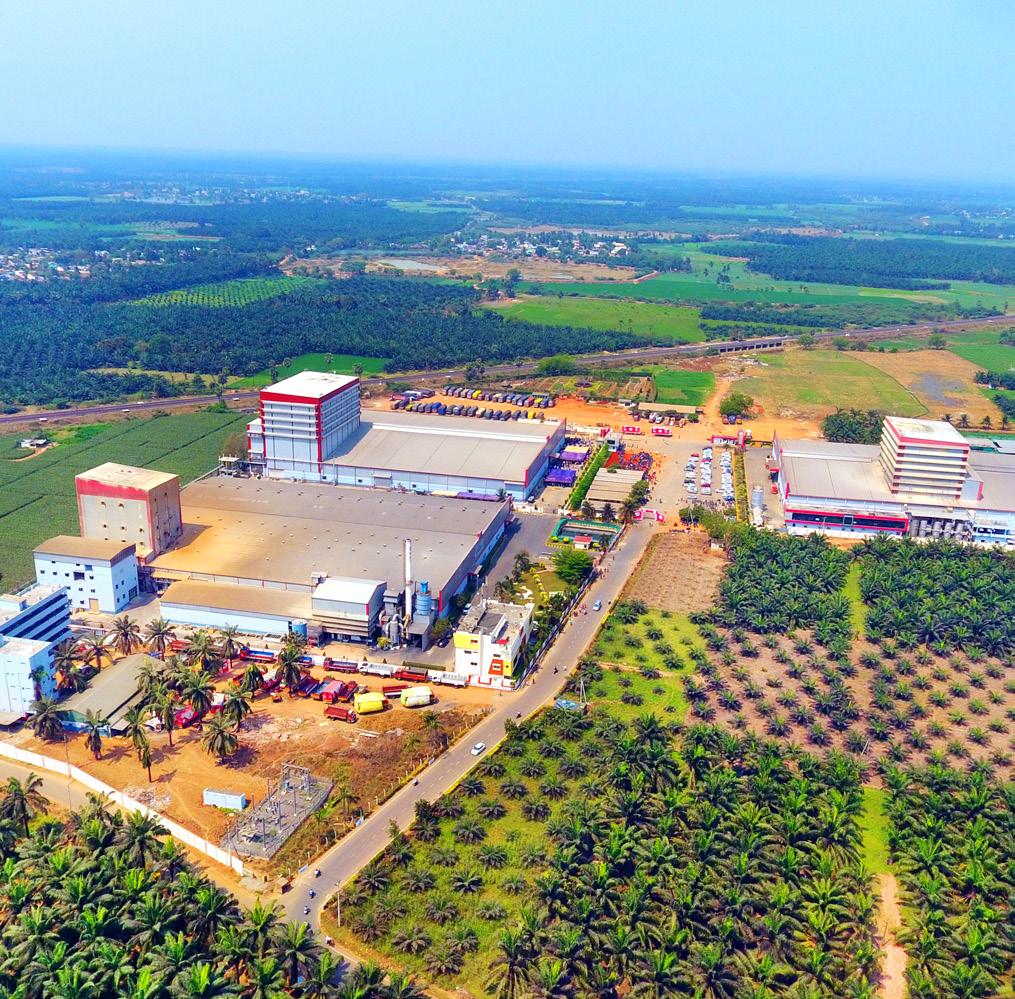
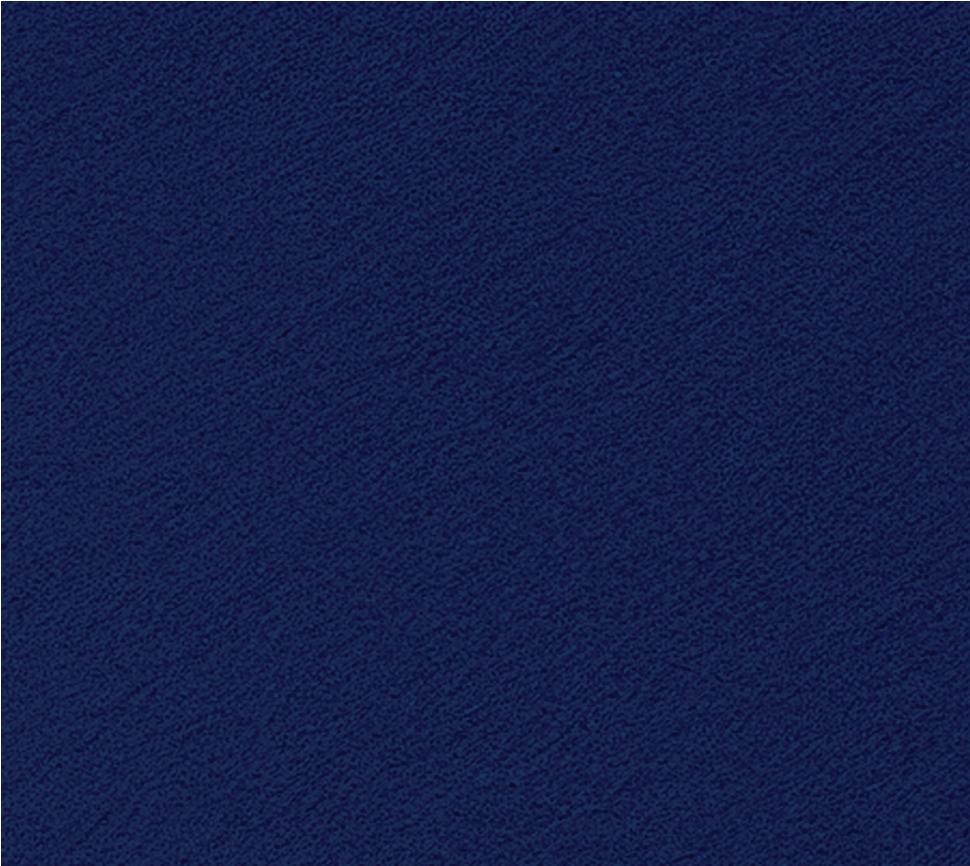
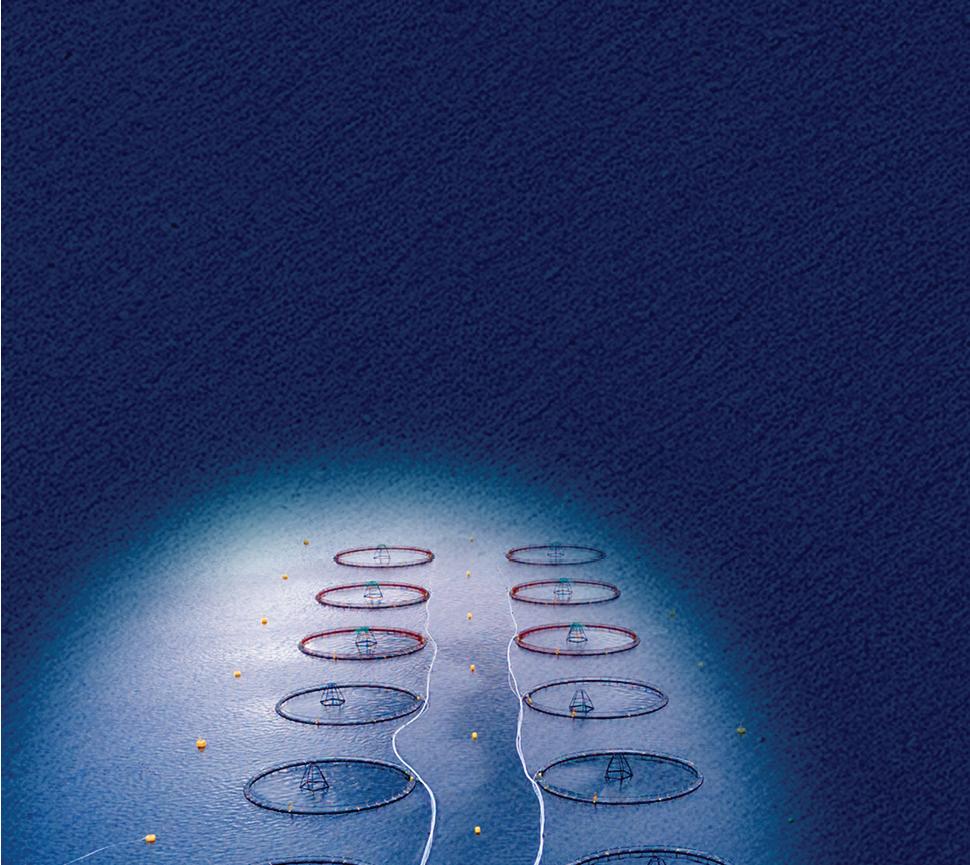
A smarter global standard for responsible farming practices, IFA v6 for aquaculture covers all stages of the production chain – from hatchery to transportation.
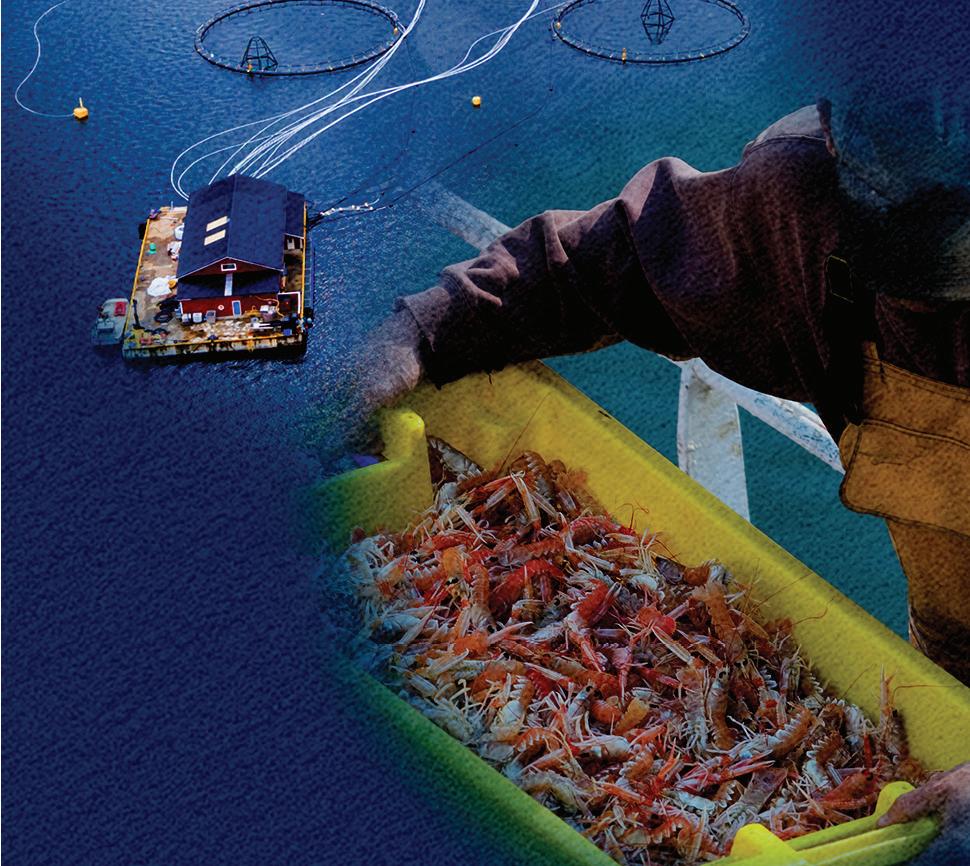
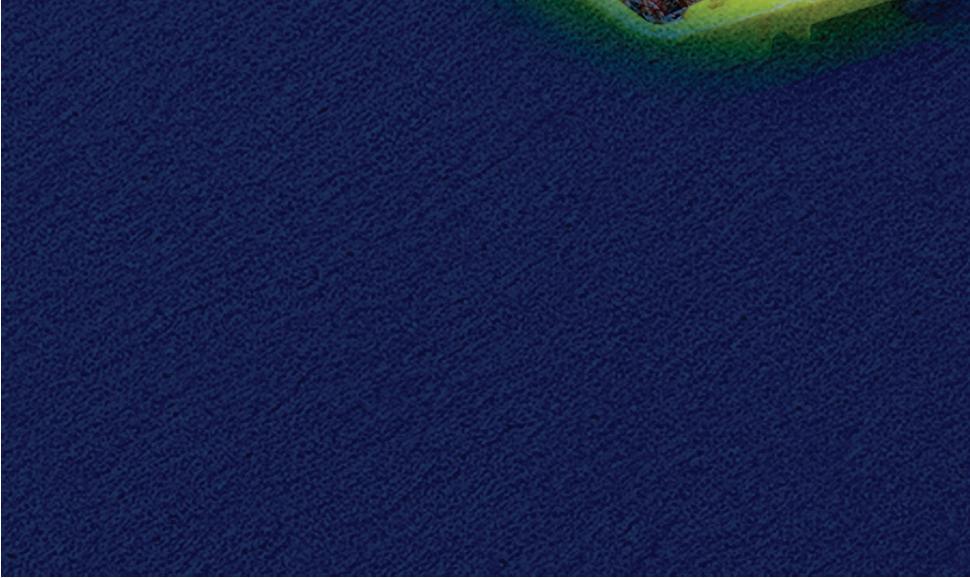

The panel comprised from second left, Dr Victor Suresh, past president of Aqua Professionals (SAP) and Managing Director, United Research Pte Ltd Wilson, Aquafeed Nutrition Consultant, Thailand; A. Kumaresan, Senior Deputy Manager, Sheng Long Bio-Tech India; B. Ravikumar , Assistant Vice President, Technical, Growel Feeds Pvt Ltd and Martin Guerin, Regional Technical Manager Aquaculture, Asia Pacific and Indian Subcontinent, Adisseo.
The role of the panel on Feeds and Feeding at Aqua India 2024, held in Chennai from February 15-17, was to explore various strategies in managing shrimp feeds and feeding to maximise farm performance. Setting the stage was a presentation by Dr Thomas Wilson, based in Thailand. Subsequently, Dr Victor Suresh, United Research Pte Ltd, led industry panel members A. Kumaresan, Sheng Long Bio Tech India; B. Ravikumar, Growel Feeds and Martin Guerin, Adisseo to discuss the following: opinions and experiences on the use of low protein feed to manage costs; why the early start on use of autofeeders has faltered and impact of Enterocytozoon hepatopenaei (EHP) on feed intake.
“A 20g shrimp only eats about 0.35g feed day” - Dean Akiyama
Discussing the above quote, Wilson posed these questions: “When we feed the shrimp in the pond, are we ensuring that each shrimp has access to this amount of feed? Is each shrimp eating enough to meet its nutrient and energy requirements for that day? Therefore, it is not so much the feed itself but the way we manage feeding.”
The focus is on how to manage feeds and feeding so the daily growth potential of each shrimp is realised. Wilson dissected the factors influencing feed and nutrient utilisation, ranging from digestibility, which is dependent on ingredient quality and processing, while nutrient uptake, in turn is dependent on environmental variables such as temperature, salinity, and dissolved oxygen levels. Wilson mentioned post larval quality but the best feed will not help if post larvae quality is poor. The animal must have the potential to utilise the feed.
Temperature is important and with every 1°C fluctuation, the result is an 8-10% variance in growth rate. Therefore, temperature regulation becomes abundantly critical. The correlation between oxygen saturation and feed consumption emphasises the importance of maintaining optimal water quality. Salinity, another pivotal factor, influences both growth rates and mortality levels.
This is a combination of managing water quality parameters, including dissolved oxygen and nitrogen levels to optimise shrimp farm performance. Using the study by Akiyama, Wilson noted that pond variance component was largely influenced at 60-75% by pond management which is related to water quality. The parameters affecting nutrient utilisation were given.
Referring to domestic shrimp feed quality, Wilson said “Indian government policies make it difficult to import the best quality ingredients for shrimp feed, so while available quality may not be the best, everyone must use what we have.”
Pond oxygen saturation
Paramount to feeding performance is pond oxygen saturation. Oxygen saturation decreases with increasing water temperature. Oxygen consumption drives feed intake and drives growth. As oxygen levels go down,
The role of the panel on Feeds and Feeding at Aqua India 2024, held in Chennai February 15-17, was to explore various strategies in managing shrimp feeds maximise farm performance. Setting the stage was a presentation by Dr aquafeed nutrition consultant, based in Thailand. Subsequently , Dr Victor Research Pte Ltd, led industry panel members A. Kumaresan, Sheng Long Ravikumar, Growel Feeds and Martin Guerin, Adisseo to discuss the following experiences on the use of low protein feed to manage costs; why the early autofeeders has faltered and impact of Enterocytozoon hepatopenaei (EHP)
shrimp use less metabolic energy, so feed consumption goes down. Optimal parameters, including dissolved oxygen levels above 5ppm and minimal ammonia concentration are critical to sustainable shrimp farming. In the case of soluble nitrogen from excreted waste, salinity affects nitrite-N toxicity. Wilson said, “This should be a concern of farmers culturing vannamei shrimp at low salinity. There are also risks with overfeeding.”
Currently, farmers experience crop failures due to inadequate oxygen levels, and this presents significant challenges. By enabling farmers to accurately monitor oxygen levels, they can adjust feeding regimes accordingly, thereby reducing the risk of nutrient overload and its associated negative impacts on pond health.
Wilson suggested feed companies could provide reliable optical oxygen meters to their feed customers as part of the feed purchase contract. By empowering farmers with the tools to assess and regulate oxygen levels, feed companies can mitigate the risk of crop failure and subsequent financial losses.
“Optical oxygen meters while initially could be expensive, offer distinct advantages. The cost of providing these meters can be written off as a business expense and depreciated over time, making it a financially viable investment for feed companies.”
Wilson summarised, “The greatest impact on farm performance and yields comes from pond management rather than from post larvae quality, feed quality or seasonal weather.”
The panel conversation focussed on facets of feed management. A notable point of discussion was the use of low-protein feeds as a strategy to manage costs without compromising growth rates. This is a common practice in Indonesia and Latin America. Kumaresan commented that while studies traditionally favour higher protein feeds for optimal growth, low market prices have prompted a re-evaluation of feed strategies. “Insights from Indian farms highlighted the usefulness of “booster feeds” for vannamei shrimp, offering promising results in terms of growth rates and feed conversion ratios. Farmers need to take into account the costs of feed to produce a kg of shrimp and not the price of feeds.”
With farmers in India reducing stocking density, Suresh asked the panel’s recommendation on the optimal protein With farmers in India reducing stocking density, Suresh
Issue focus: Demand & Supply Equilibrium
Industry Review: Tilapia
Alternative Ingredients
Deadlines: Articles/Adverts – May 13
Special Distribution at TARS 2024, Finfish Aquaculture, August 14-15, Bangkok, Thailand; AQUA24, August 26-30, Copenhagen, Denmark
asked the panel’s recommendation on the optimal protein level. Wilson stressed on the importance of optimal protein levels which depends on the stocking density and farming method. “We want to avoid putting too much nitrogen into ponds, so the idea is low protein feeds with highly digestible protein of high quality.”
Guerin noted that in Indonesia, “Farmers stocking at densities of 200-250 PL/m2 use low 30-32% CP feeds. The rational is managing feed costs and the other is less nitrogen into ponds.” There are instances where fluctuations in water conditions influenced feed composition and efficacy. Ravikumar detailed his studies with ponds in Andhra Pradesh stocking at 25 PL/m2 (see pages 22-23).
The adoption of technology, particularly automatic feeders, emerged as a potential game-changer in feed management, reducing feed conversion ratios (FCR) by 0.1 to 0.2. Guerin commented, “Larger corporate farms have embraced autofeeders such as reducing FCR by 10% by a farm in Malaysia. However, autofeeders can be counterproductive when not used properly.” In India, aside from the cost factor, Ravikumar and Kumaresan noted that challenges persist for small-scale farmers, particularly in rural areas with limited connectivity, technical expertise, training and supervision.
The need for user-friendly, cost-effective technologies with a potential to optimise feed management practices can enhance farm productivity. However, at the moment, hand feeding with the guide of feeding charts is still prevalent, sometimes to the detriment of optimal shrimp growth.
Addressing the threat of EHP, Kumaresan advocated proactive feed management strategies to mitigate disease risks. “Regular monitoring of feed consumption and biomass, coupled with stringent feeding protocols, are crucial to maintain pond health and minimise disease outbreaks. With FCR data, the farmer should decide on whether to continue the cycle or carry out a quick harvest.”
The panel ended with a call to action for farmers to embrace more sustainable and efficient feed management practices. By prioritising digestibility, optimising protein levels, and harnessing technological innovations, farmers can navigate the complexities of feed management.
Issue focus: Aquaculture Innovations
Industry Review: Marine Shrimp
Larval & Nursery Feeds/Feed management
Deadlines: Articles/Adverts –July 17
Email: zuridah@aquaasiapac.com/enquiries@aquaasiapac.com
Some takeaways from a break-out session on Feed and Feed Ingredients at Global Shrimp Forum 2023
In the shrimp feed production and ingredient landscape, there are past and present challenges for feed producers such as Ramakanth Akula, CEO, The Waterbase Limited, India, and Carlos Miranda, General Manager, Skretting Ecuador. The break-out session on Feed and Feed Ingredients at Global Shrimp Forum 2023 held in September, began with both expressing their challenges and outlook on navigating uncertain times.
Akula presented that in 2022, India’s shrimp farming industry witnessed significant growth, with vannamei shrimp leading production and feed sales reaching 1.35 million tonnes. Erratic weather, disease outbreaks and fluctuating prices, impacted production and profitability, and farmers face hurdles such as falling demand, limited access to capital, and rising production costs, compounded by dependency on middlemen. Akula added, “While feed companies play a key role in supporting farmers through quality feed and technical services, they too face challenges like low mill utilisation and rising production costs. Our raw material costs are over 90% of net sales realisation. The distribution channel for shrimp feed involves numerous dealers, with tough market conditions posing challenges for feed companies. High feed conversion ratios (FCRs) remain a concern, requiring improved farming practices and technology adoption.”
Miranda, said that the transition from pelleted to extruded feed in Latin America drove performance improvements, including enhanced water stability and reduced carbon footprint, signalling a shift towards sustainability and innovation. There is also the integration of novel ingredients in feed formulations, coupled with collaborative efforts across the value chain which emphasised a commitment to environmental preservation and the adoption of sustainable alternatives. Skretting’s initiatives to reduce carbon footprint and promote sustainable practices reflect a broader industry trend towards reducing environmental impacts. This highlights the need for Ecuador’s shrimp farming sector to embrace innovation and sustainability in navigating future challenges.
Both commented on the consequences of low farmgate prices. Akula painted a picture of reduced stocking
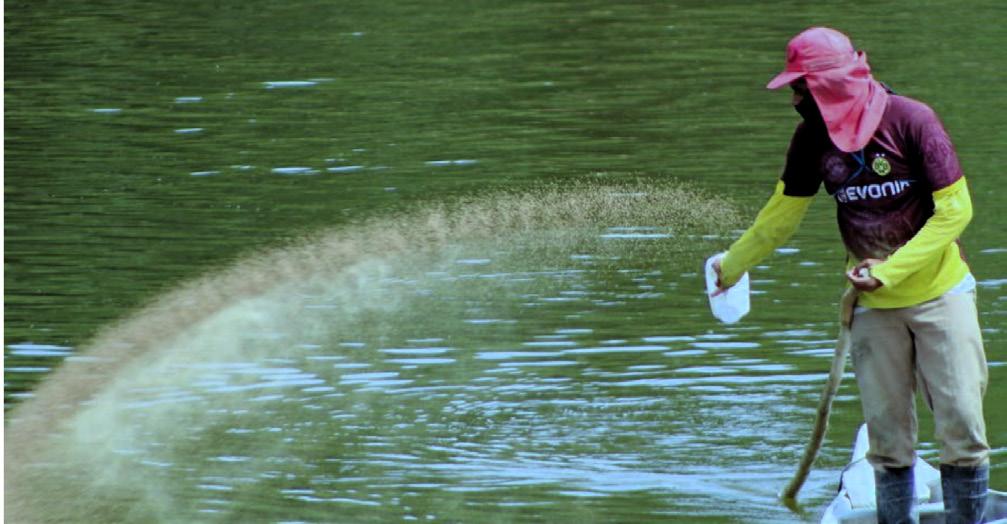
densities leading to a lower national shrimp output which illustrated the delicate balance feed companies must navigate between cost management and quality feeds. “We have seen stocking densities come down drastically because farmers do not want to exit farming totally. Some farms can be converted to fish farms, but those without an option to do that will reduce stocking densities.”
Meanwhile, Miranda elaborated on Ecuador’s experience, emphasising the dichotomy between profitable conglomerates and struggling small-scale farmers. “It is 20 companies that produce 70% of the exports. There are thousands of farmers that are losing money because of huge consolidation in the market. Personally, I think that we need to work very hard to save those thousands of farmers today.”
“In the pursuit of sustainable shrimp production, feed is important,” said Michiel Fransen, Standards and Science Director, Aquaculture Stewardship Council (ASC). He emphasised the need to understand the diverse motivations underlying various farming systems, whether extensive pond culture or intensive indoor setups, to tailor strategies accordingly. ASC emphasised the importance of quantifying the footprint of feed ingredients through life cycle assessments (LCAs), focussing not only on environmental impacts but also resource management and scalability.

Long-term relationships, transparency as well as responsiveness across every player in the supply chain are crucial for fostering sustainability. Amidst shifting economic tides, Fransen expressed that the challenge lies in internalising sustainability costs and driving shared allocation to propel change-at-scale, ultimately paving the way for a more prosperous and ethically conscious future in aquaculture.
Holistic approach to measuring sustainability
Fransen emphasised the critical role of feed in shaping the environmental footprint of shrimp farming, urging a holistic approach that considers both feed production and farming practices. This includes the challenges of measuring sustainable feed ingredients, highlighting the need for ongoing data collection and resource management improvements.
With the evolving dynamics of the supply chain, there is growing consumer demand for transparency and ethical sourcing practices. He outlined the potential of initiatives like the EU regulatory framework on diligence in shaping a more rigorous supply chain ecosystem.
Productivity and collaboration
Fransen acknowledged the trade-offs between sustainability and profitability, noting the need for a balanced approach that considers the additional costs of sustainable practices and the volatile nature of the global market. He emphasised the importance of collaborative efforts across the supply chain to ensure the viability of sustainable feed ingredients. To consider is the evolving nature of supply chains, noting a shift towards transparency and values-driven interactions, particularly in response to consumer concerns about sustainability and social issues.
Ronnie Tan, US Grains Council, Malaysia, led panellists: Blake Stok, Director of Sustainability, Thai Union North America; Michiel Fransen; Bas Geerts, Head of Sustainability, Cefetra Group; Francisco Aldon, CEO, MarinTrust; and Henrik Aarestrup, VP LatAm, Shrimp & Hatchery, BioMar, to discuss the above as well as practical sourcing challenges.
There are the significant challenge of cost associated with adopting new ASC feed standards, emphasised Stok. In the current market landscape, affordability remains a serious concern for feed companies like Thai Union. However, he pointed to the long-term commitments outlined in Sea Change 2030, expressing optimism about future market transformations that could improve access to sustainable ingredients. “The biggest challenge is cost. I’ve asked this question to our own feed manufacturer in Thailand and the first response that comes back is cost, and at this particular point in time, it is a sensitive topic,” Stok said.
Fransen emphasised the need for a collective approach to address cost challenges, advocating for shared commitments across the supply chain to alleviate the financial burden on individual buyers. He emphasised the importance of market-driven transitions toward sustainability, acknowledging that while costs may initially rise, long-term resilience and stability are key goals.
There is a rigorous diligence process necessary for ensuring the sustainability of marine ingredients. Aldon stressed the importance of transparency and traceability throughout the supply chain, highlighting the role of technology in enabling robust traceability measures. He emphasised that sustainability encompasses a diverse
approach, requiring attention to environmental, social, and economic aspects.
The discussion turned to an environmental concern and the challenge of sourcing deforestation-free soy, particularly considering increasing regulatory pressure and consumer demand for sustainable practices. Stok highlighted the limited availability of certified deforestation-free soy and emphasised the need for sensibility and collaborative efforts to drive market transformation. Aarestrup echoed this sentiment, noting that while challenges exist, concerted actions and long-term commitments could lead to positive shifts in supply chain dynamics. There are two bottlenecks - availability of deforestation- free soy and that which is certified. Market pressure will push for certification.
The panel also addressed the tension between sustainability goals and consumer preferences regarding genetically modified organisms (GMO). Geerts highlighted the growing demand for non-GMO ingredients and cautioned against overlooking the implications for supply and demand dynamics. He emphasised the need for transparency and collaboration to address conflicting demands within the market.
Aarestrup and Fransen addressed concerns on the unlevel playing field favouring multinational companies over smaller producers. Aarestrup emphasised the role of information technology in levelling the playing field, highlighting the importance of transparency and data sharing across the supply chain. Fransen stressed on the need for collaborative efforts to ensure that sustainability initiatives benefit all actors in the industry.
Finally, the panellists focussed on the importance of collaboration, transparency and long-term commitments in driving meaningful change within the feed industry. They highlighted the need for collective action to address cost challenges, enhance diligence measures, promote sustainable sourcing practices, and navigate complex market dynamics. The journey toward sustainability requires a collaborative effort from all stakeholders, from feed companies and producers to retailers and consumers, to create a more resilient and sustainable future for aquaculture.
The focus was on the progress with three innovations: smart automated feeding solutions, single-cell protein production, and fishmeal- free shrimp feed formulations.
Andrew Campbell, CEO, AQ1 stressed the importance of data transparency and benchmarking in driving industry progress. He highlighted the salmon industry’s success in adopting robust benchmarking systems, emphasising the need for similar initiatives in shrimp farming to foster innovation and competitiveness.
There are differences in technology adoption between Ecuador and Asia. There is Ecuador’s enthusiastic embrace of sensor-based feeding systems compared to Asia’s more cautious approach. He attributed this to factors such as pond size, risk management strategies, and market dynamics, stressing the need for tailored solutions to address diverse market challenges.
While small-scale farmers in Asia face difficulty in adopting advances in technology, Campbell acknowledged the financial constraints but remained optimistic on the potential for improvement. There is the importance of data-driven insights in identifying growth opportunities and enhancing productivity, highlighting the important role of technology in optimising shrimp farming practices.
An alternative feed ingredient business
Allan Leblanc, Vice President, Aquaculture Lead at Calysta discussed scale for its single cell protein and when these ingredients will become available to the shrimp industry at large. Calysta uses methane and natural gas in its single-cell protein production process and there are potential environmental implications. Le Blanc highlighted the commitment on transparency and sustainability, and efforts to minimise carbon footprint through life cycle assessments (LCA). In navigating regulatory processes, there are the complexities faced by Calysta, such as in China and in the US.
Benchmarking prices
The high digestibility of Calysta’s product in shrimp and fish works well in aquafeed formulations. Leblanc also addressed questions regarding cost differentials compared to traditional fish meal, emphasising the competitive pricing of Calysta’s product against imported South American fish meal, but being more expensive than lower quality fish meal.
A sustainable feed proposition
With historic lows in farm-gate prices and escalating production costs, exacerbated by the high cost of feed ingredients such as fishmeal, shrimp producers are under significant financial strain. Yet, amidst these difficulties, there’s a growing consumer demand for sustainable and traceable products, prompting a shift away from wildcaught marine ingredients in feed formulations. Jesper Clausen, Director of Aqua Nutrition and Technology, Royal de Heus, said that it is time to make sustainable shrimp feed production mainstream. The solution includes a strategic focus on amino acids and highly digestible protein sources, with algal oils emerging as a promising alternative for EPA and DHA fatty acids. Addressing carbon emissions and collaborating with suppliers to integrate sustainability goals are imperative steps. Despite the challenges, opportunities exist for those embracing change, with an emphasis on enhancing efficiency and quality while daring to innovate for a more prosperous and resilient future in the shrimp industry.
Petter Johannessen, Director-General, IFFO said that while strides have been made, the core question remains: what defines true sustainability? He emphasised the critical role of raw material sourcing in determining feed sustainability and urged a focus on industry responsibility in meeting sustainability demands, perhaps referencing the salmon industry.

Clausen highlighted the complexity of sustainability metrics. While CO2 emissions are a crucial factor, he argued for a broader perspective, like selective use of resources. He highlighted the value of well-managed fisheries, acknowledging them as valuable resources in aquafeed formulation.
Clausen addressed the notion of differing perceptions of sustainability, asserting that consumers worldwide prioritise healthy, eco-conscious products. However, he acknowledged operational differences, noting Europe’s regulatory advantage in monitoring processes, compared to Asian markets.
Notwithstanding the Chinese market’s current lack of demand for sustainability, he noted the universal consumer desire for healthy products, emphasising the evolving nature of sustainability awareness in diverse markets. Identifying scalability and farmer adoption as key hurdles, he expressed optimism in the industry’s ability to overcome them, referencing the growing momentum behind alternative ingredients like insect meal.
Clausen said, “Many of these sustainability initiatives comes, first out of Europe probably because there is a system in place where it’s a bit easier to monitor and regulate processes, such as monitoring CO2 emissions. In practice, things on these issues can move faster in Europe than in most Asian countries.”

The attraction to expand farming is the potential and large demand from China but there are specifications from importers in terms of colour and quality
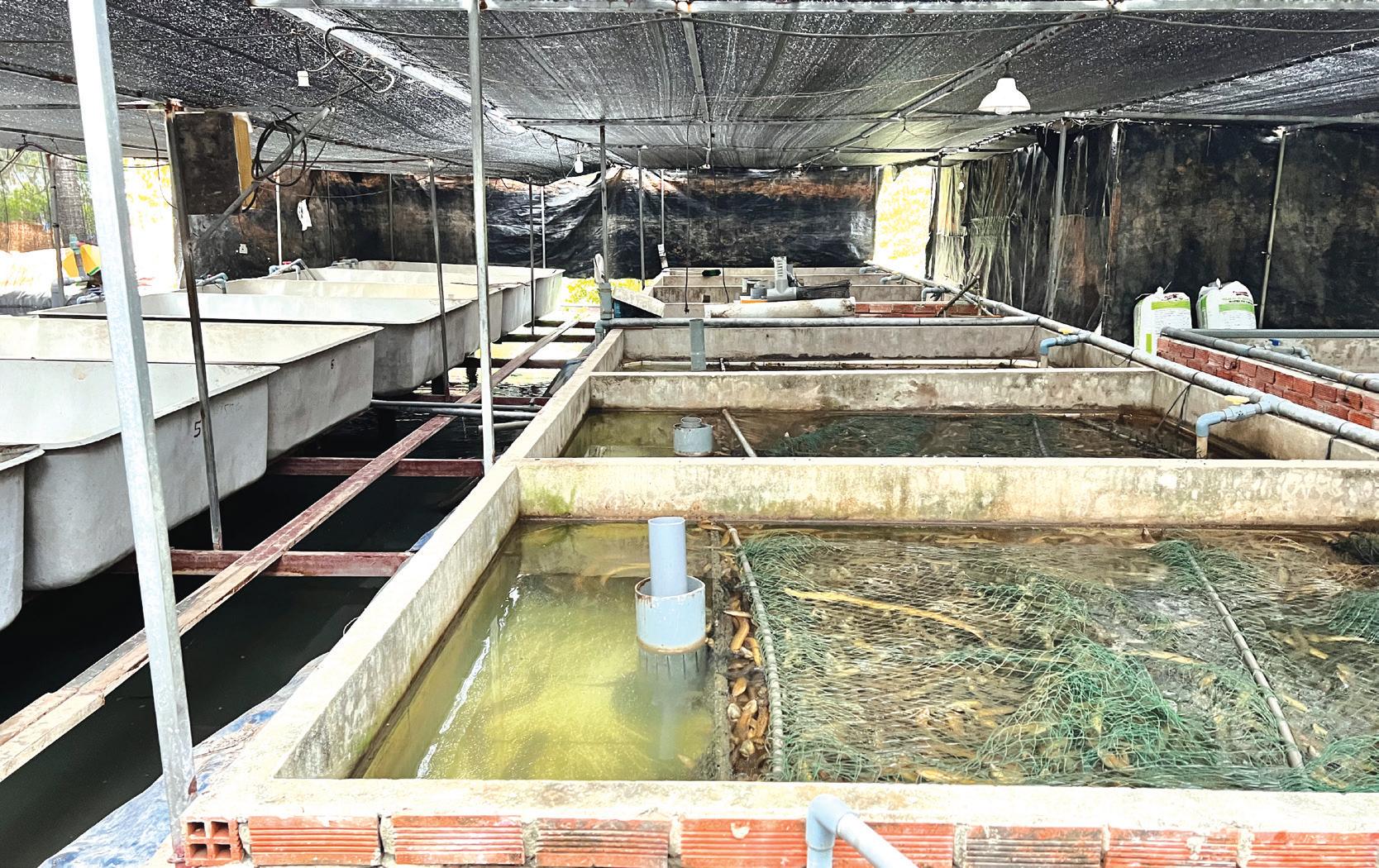
There are many appeals to commercially farm the freshwater eel Monopterus albus in Vietnam. The eel, known as the Asian swamp eel or yellow eel, is highly nutritious and has been linked to some medicinal attributes, such as increasing the production of haemoglobin, reducing bad cholesterol (LDL) and increasing good cholesterol (HDL) in the blood. Until recently, prices have been relatively attractive at VND160,000/kg. Today, these have dropped to around VND75,000/kg. Although margins are smaller, it is nevertheless still profitable. Furthermore, intensive farming of this eel has a small footprint.
Recently, farms have been motivated by the rise in demand from China for yellow eels. Two processors in Kien Giang and Vinh Long have exported degutted eel to China and Japan. According to the team at Uni-President Vietnam, the demand from China is large at a million tonnes. Presently, production in Vietnam is estimated at around 5,000 tonnes annually, mainly from groups of small-scale farmers in the Mekong Delta.
Therefore, a current goal is to perfect culture management to produce the yellow eel that meets the specifications of both local and Chinese markets. Currently, in Vietnam, the current favourite eel colouration is yellow. The demand in China is for totally yellow colouration as well as yellow flesh colour, less fatty, and antibiotic free. This is where farmers seek the support of the technical teams provided by feed companies and scientists at Can Tho University (CTU) on nutrition to produce eels with the desired attributes.
The grow-out section at the eel farm belonging to 39-year old Nguyen Thanh Tan.
Once farmed in polyculture with rice, the recent trend is monoculture in cement tanks at a high density of 500 eels/ m2. In a CTU study, culture in cement tanks of 250L using recirculated aquaculture systems (RAS), and stocking 400 eels/m2 gave the best survival rate. In another CTU study, stocking at 180 eels/m2 in the aquaponic recirculating system was recommended for production and nutrient reduction (Hien et al., 2019). Just outside of Can Tho City in the Mekong Delta, there is an association of 50 farms involved in either fingerling or grow-out production of this yellow eel. Some 10 members do both, fingerling and grow-out production. Together, this group produce 100150 tonnes in 2023.
After completing his bachelor’s thesis on the yellow eel at CTU, Nguyen Thanh Tan immediately began an eel farming business in his family home. Today at 39 years old, and 12 years in the business, Tan is producing 30 tonnes annually in an expanded one ha farm. “I was also attracted to eel farming because, at that time, the prices were around VND200,000/kg.”
Tan also has a hatchery business, producing 100,000 fingerlings/month of size 1000/kg. He sells them at VND2,500-3,000/fingerling (USD100/1,000 fingerlings). Swamp eels hatch as females and farmers, according to their experience, said that eels at over 300g/individual become males. Reproduction can occur year-round via artificial propagation. However, the main reproduction period is during the rainy season (March-September) and this is when fingerling quality is better and the quantity is
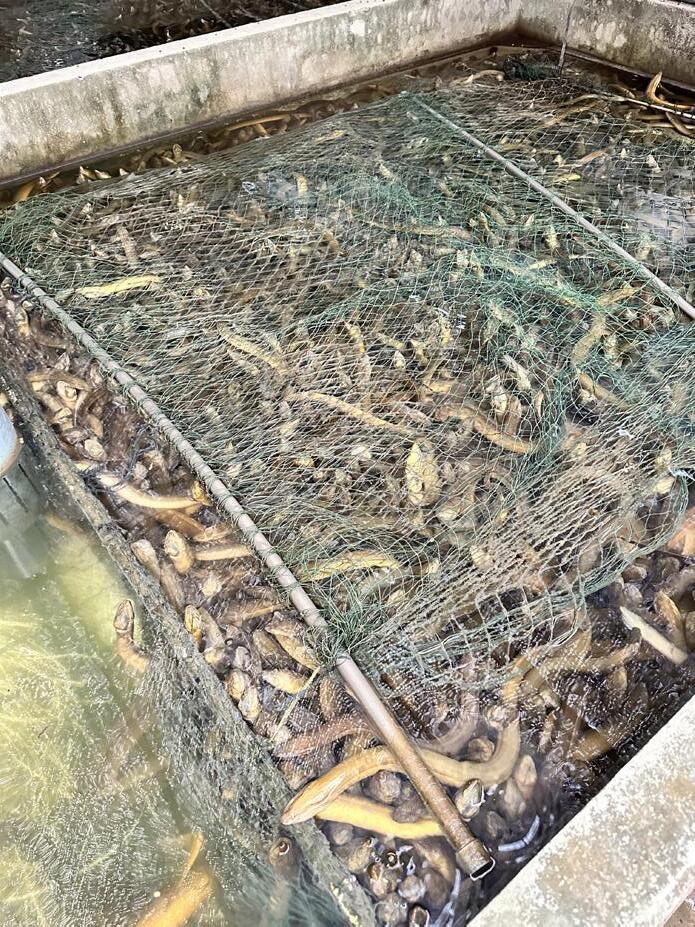
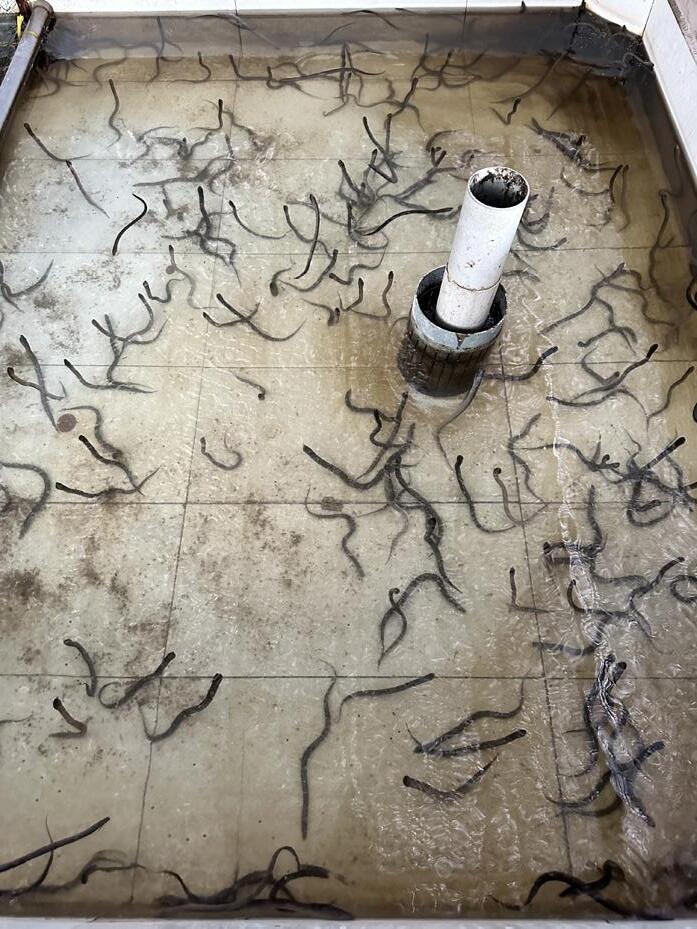

Control,
supplementation Astaxanthin
supplementation Xanthophyll
supplementation Cantaxanthin Astaxanthin
supplementation Cantaxanthin Xanthophyll
supplementation Astaxanthin Xanthophyll
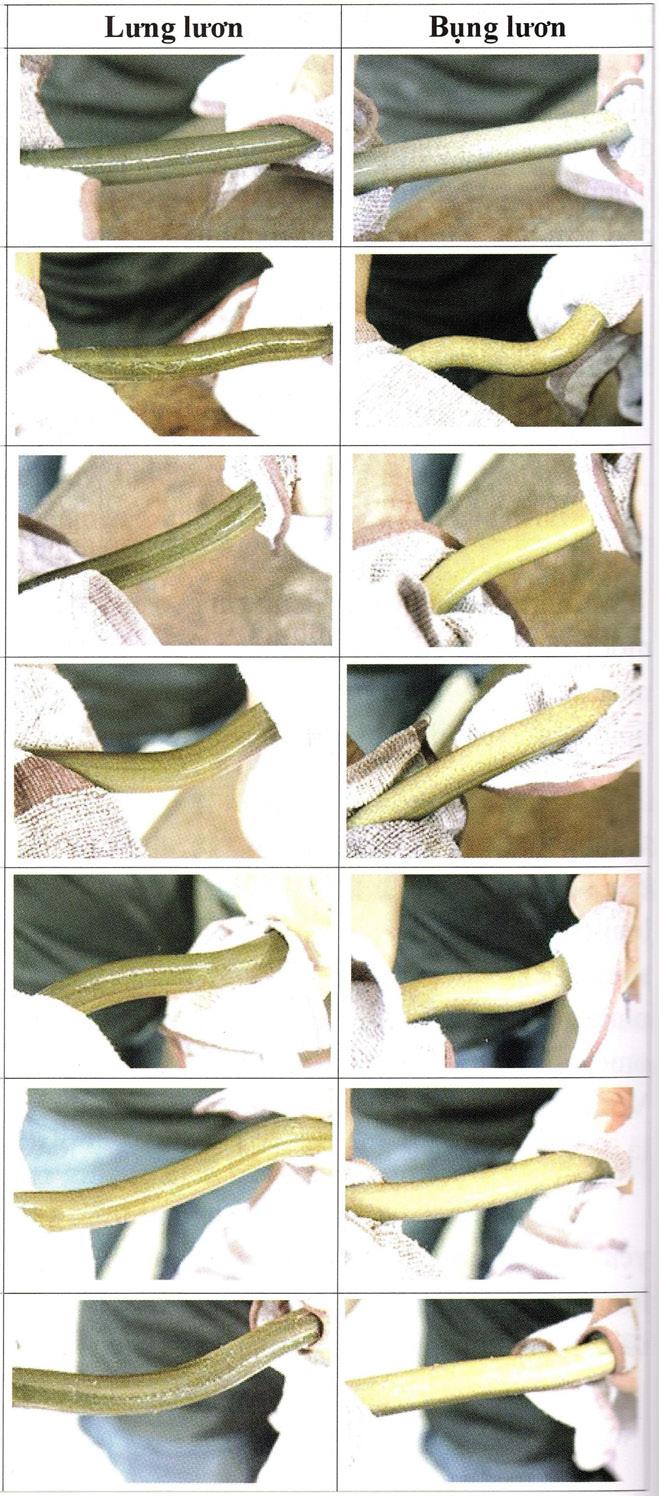












higher. Tan said that eels change sex to males only after more than 12 months. So, as broodstock, he uses the females from his grow-out tanks and males from an outside source. The cycle from eggs to 1g fingerlings takes 40 days (Khanh et al. 2008).
Farming is a relatively simple two-stage process for these air-breathers adapted to low-oxygen environments. The 2-month fingerling stage begins with stocking 500 fingerlings in a 1-2m2 cement tank with a water depth of 10-15cm. During this stage, fingerlings are fed with tubifex (red) worms for 7-8 days. Tan says that optimal growth and health is at 28 to 30°C. Fingerlings will eat less at below 24°C and stop feeding at lower than 22°C. A disease problem related to digestion is common during the 2-week weaning process. Tan feeds fingerlings a mixture of worms and starter feed for a week and subsequently, just 100% starter feed in the following week.
The grow-out stage is for 8-10 months and depends on market prices. Sometimes, the culture period is up to 20 months. The total biomass from the fingerling tank is transferred into a bigger tank (5-6 m2) with a water depth of 25-30 cm. The density is 500 eels/m2 and 2,500-3,000 eels/tank for the grow-out stage. These eels have the behavioural pattern of crowding to grow into adults and tend to crowd to one side of the tank. Artificial grass is provided as shelter, which also reduces stress. Marketable sizes range from 200-300g to 600g. Tan said that he uses artificial grass when the fingerling sizes are 1,000/kg or larger at 500/kg. At sizes over 500/kg, he does not use any artificial grass.
As eel farming gained popularity, feed millers began to produce pelleted feeds for its farming. Uni-President Vietnam (UPVN) launched a compound feed for eels in 2023. Before this and since 2018, Tan was using UPVN’s seabass feed at his eel farm. Early-stage feeds of 0.8mm have a minimum 44% crude protein and a minimum of 7% crude fat. Grow-out eel feeds have a minimum of 44-43% crude protein. In Vietnam, there are no feed standards for
the eel. In the market, feed for the swamp eel has % crude protein ranging from 40-45%, and crude fat at 7-10%. During the grow-out, feed sizes start with 1.5mm starter pellets for the first month, followed by 2mm pellets in the second month and 3mm pellets in the fourth month to harvest.
In a study, Hien et al. (2019) determined the optimal dietary protein requirements at suitable lipid levels in the diet for the swamp eel at 3-5g initial weight. The experiment was set up with 12 formulated feed treatments, including four protein levels (35%, 40%, 45% and 50%) and three lipid levels (6%, 9% and 12%). Each treatment had 4 replicates. Swamp eel fingerlings were cultured for 8 weeks. The results showed that the survival rate of the eels was not affected by either lipid or protein levels in the diet as well as their interaction (p>0.05). The daily weight gain (DWG), food conversion ratio (FCR) and protein efficiency ratio (PER) were affected by the interaction of dietary protein and lipid levels (p<0.05). The best growth and FCR were at treatments of 45% protein and 6% lipid or 40% protein and 9% lipid. The protein level for the best growth of swamp eel fingerlings was 44.8% at 6% lipid.
Yellow eel for the Chinese market
Chinese importers said that Vietnam’s yellow eels are too fatty although larger eels at more than 500g are less fatty. Therefore, to produce for the Chinese market, there is a desire to relook at feed specifications. There is also the need to produce a thoroughly yellow-coloured eel. The wild yellow eel has a yellow belly and bluish dorsal region. In tank culture, there are no environmental effects on colour. According to Hien (2022), in eel farming, besides the eel meat quality, the eel body colour is important for sensory factors and the eel price. A study showed that carotenoid supplementation (canthaxanthin, astaxanthin or xanthophyll) in eel feed improves the eel’s colour (Hien et al., unpublished). However, the yellow pigmentation comes from xanthophyll in feeds.
Tan said that his cost of production is VND70,000/kg, which, at current low prices, is still profitable. Tan noted two major challenges. There is a digestive disease at the fingerling stage at size 1000/kg. This continues until the fingerling grows to size 2000/kg. Survival rates are 7080% during the fingerling stage and 80-90% for the whole cycle. Tan does not agree on the use of powdered feed for fingerlings as growth is slow and FCR is high. However, he indicated that in weaning the eels, some farmers farmer mix tubifex worms with powder feed containing 42% crude protein.
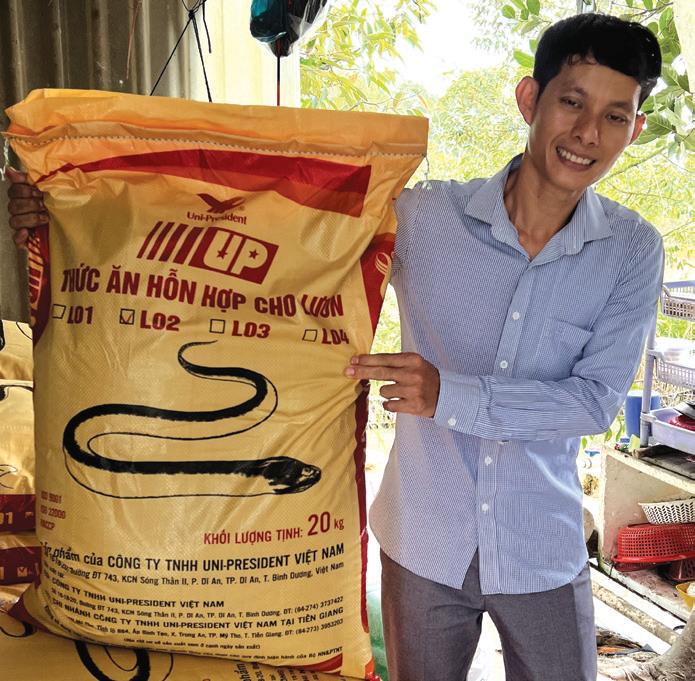
A significant challenge is the need to maintain water quality, and Tan changes water 3-4 times daily. He has unsuccessfully tried to recycle water, which is costly at VND20,000-30,000 more for electricity and probiotics. Since he is using groundwater, there is only treatment with filtration and iodine for disinfection. According to Dr Lam My Lan at CTU, farmers use more antibiotics to treat bacteria diseases in open culture systems than in recirculation aquaculture systems (RAS). In RAS models, water quality is controlled and some farms disinfect water prior to use. She added that eels farmed in RAS taste better.
Tan expressed his wishes for the future. “Although I do face difficulties throughout the farming cycle, I will continue to farm because there is a future with potential exports to China. I want to grow the industry by producing traceable and quality eels with no antibiotics. I already have VietGAP. In the future, I may try to look at changing the farming models without the use of artificial grass as shelters and work with Can Tho University for faster growth as well as on managing disease.”
References
Ly Van Khanh, Phan Thi Thanh Van, Nguyen Huong Thuy, Do Thi Thanh Huong (2008). Study on feeding habit and reproductive biology of rice eel (Monopterus albus). Can Tho University Journal of Science, (1), 100-111. https://123docz.net/document/1280733bao-cao-nghien-cuu-dac-diem-sinh-hoc-dinh-duong-vasinh-san-cua-luon-dong-monopterus-albus-potx.htm
Hua Thai Nhan, Nguyen Tan Tai, Pham Thanh Liem, Vu Ngoc Ut, Harry Ako, 2019. Effects of different stocking densities on growth performance of Asian swamp eel Monopterus albus, water quality and plant growth of watercress Nasturtium officinale in an aquaponic recirculating system, Aquaculture, Volume 503,2019, 96-104, https://doi.org/10.1016/j.aquaculture.2018.12.067.
Hien, T.T.T., Lan, L. M, Liem, P.T., Tu, T.L.C., & Hieu (2019), Dietary protein requirement at different lipid levels of Asian swamp eel fingerling. Journal of Vietnam Agricultural Science and Technology.
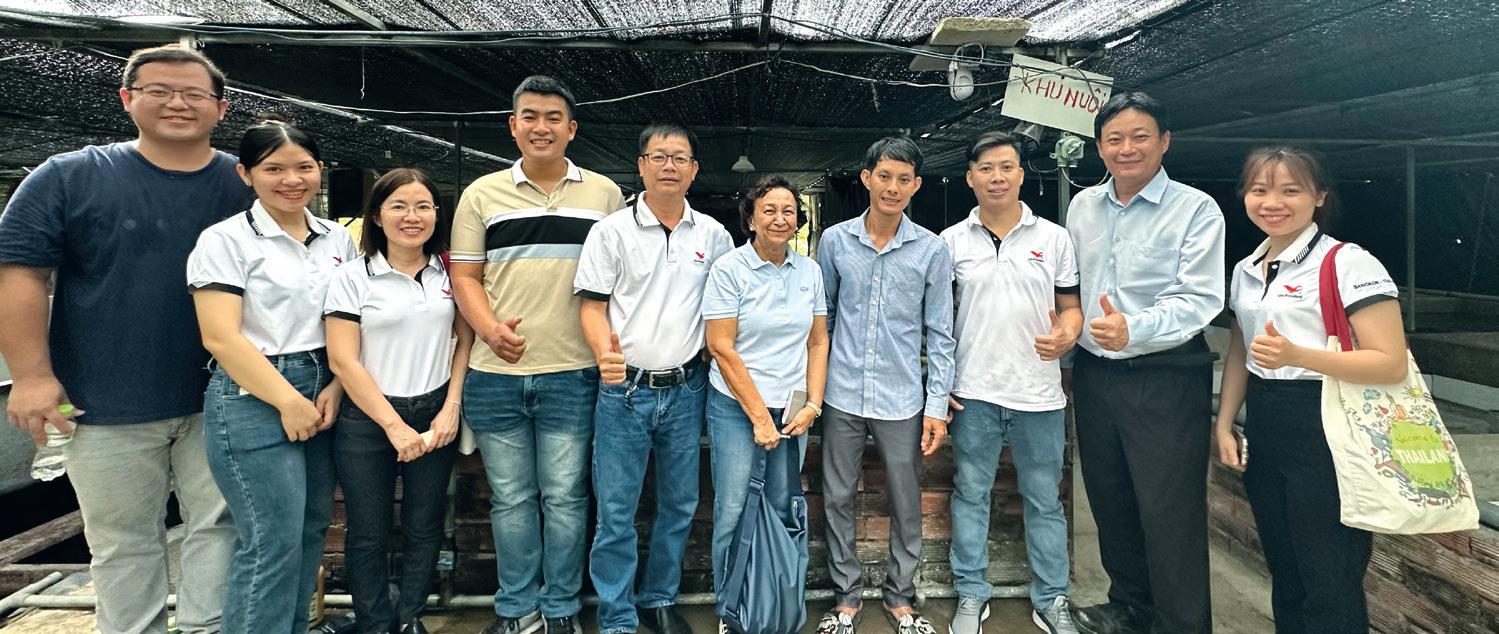
The team from Uni President Vietnam and visitors; from left, Wei Che Wen, Sales and Marketing Manager – Asia; and the team from R&D and Sales Dang Hoang Yen Quyen, Vo Thuy To Quyen, Tran Tien Dat, Le Van Tri, Tran Phuoc and Nguyen Thi Nhat, with Sim Ing Jye, Sea Horse Corporation Sdn Bhd, Malaysia (second right) and Farmer Nguyen Thanh Tan (fourth from right).
AUGUST 14-15, 2024 • BANGKOK, THAILAND
Networking & Engagement Opportunities!
Don’t miss Asia’s leading aquaculture event! Save the Date!

While there are large and successful integrated operations making waves globally, most stakeholders in Asia are still seeking focus and directions for growth. Production in Asia is still associated with lower value fish such as the tilapia and pangasius, and there is no significant marine fish species. Asia has lagged its temperate species peers in the past decade. Why is that and what is holding it back?
TARS 2024 offers expert analysis, business models, technology, innovations and state-of-the-art biotechnology, and a deep dive into challenges along the entire supply chain – from genetics to production to marketing.
40 SPEAKERS & INDUSTRY PANELISTS
• State of the Industry and Challenges
• An Early Start with Genetics, Hatchery and Weaning
• Disease Mitigation: Management and Innovation
• Back to Basics and Nutrient Focus Feeds
• Feeds Fit for Environmental Security and Human Health
• Future Proofing Asia’s Finfish Aquaculture


Industry challenges = startup opportunities = venture capital investments HARD TALK WITH BUSINESS LEADERS Marketing, Branding and Sustainability: A Global Exchange Industry Panels, Q&A and more!
ABOUT TARS
Now in its 13th year, The Aquaculture Roundtable Series® (TARS) is a stakeholder-driven effort to facilitate the sharing and exchange of information and experiences for a common goal, to equip the industry with the next phase of growth. INDUSTRY DIALOGUE
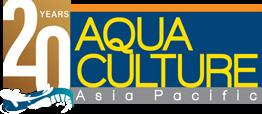
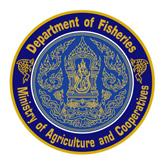

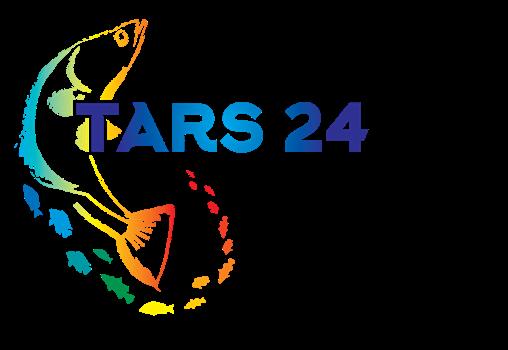

Although Asia is the world largest producer of finfish, in terms of volumes, the industry is fragmented and suffers from low farmgate prices, inefficient farming practices and high cost of production. How can fish producers develop their business? The past TARS on finfish aquaculture in 2013 and 2017 looked at developing growth strategies and industrialisation. Moving into the next decade, the industry cannot remain status quo. It needs direction for its future growth, whether for the domestic or international trade. TARS 2024 will help the industry navigate challenges, secure investment and steer it into focus.
Over two days, the meeting aims to promote better synergy along the supply chain – CEOs, geneticists, farm managers, integrators, feed producers, technologists, investors, marketers as well as governments, NGOs and academia.
Interactive Breakout Roundtable Session and Panel Discussions
• The marine fish sector is production-driven with multiple species of marine fish farmed, resulting in a lack of economies of scale. This slows investment and R&D in genetics, feed development and vaccines.
• Asia’s tilapia and pangasius producers are threatened with rising costs and cyclic lows in farmgate prices. Has supply has exceeded demand or is Asia poor in branding, marketing, and sustainability?
• Asian producers need direction to meet demands for environmental sustainability, certification, traceability and fish welfare.
State of the Industry and Challenges on day 1 will look at fish farming through different vantage points; Francisco Murillo on the demand and supply situation of tilapia in the US market, the largest market for tilapia; Dr Yufan Zhang with perspectives on challenges in China, cost of production versus low farmgate prices, and Mai Chung will give a macro view of how Vietnam has focussed on the pangasius and its successful business models as it strives towards a sustainable industry.
Speaker Highlights
TARS 2024 features a range of industry speakers and panelists who will deep dive into challenges and share their experiences in various areas along the supply chain. Information as at press is given below.
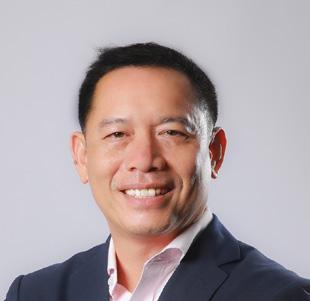
Amorn Luengnaruemitchai, Managing Director at Manit Genetics Co Ltd, on tilapia genetics and developing an export industry in Thailand
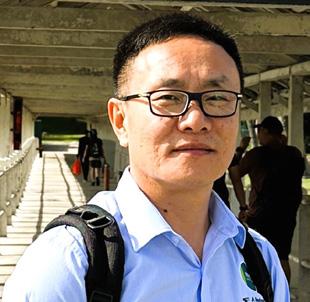
Young Chul Kim R&D Trial Manager (MAC - Singapore), INVE Aquaculture will discuss challenges in larval rearing and weaning of tropical marine fish

Hervé Lucien-Brun Aquaculture Consultant Jefo Nutrition, Inc., on the use of enzymes for higher PER, lower cost of production & meet certification norms
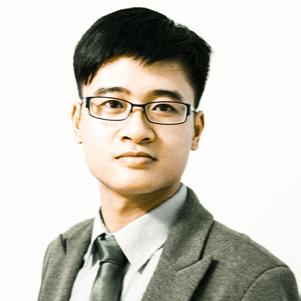
Mai Chung APAC Regional Manager for Aquaculture Feed Additives
ADM Animal Nutrition will present a macro view and SWOT on the pangasius industry in Vietnam and around the region
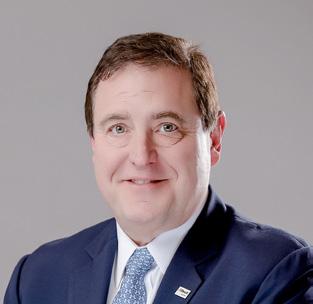
Jonathan Forrest Wilson
President
Alltech Asia-Pacific will give insights on Industry challenges with regards to capital investments
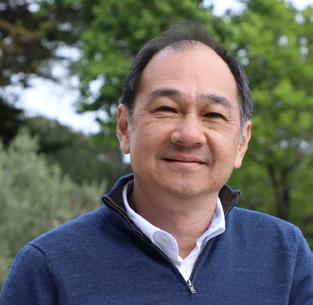
Ronnie Tan Regional Aquaculture Consultant
U.S. Grains Council is moderator for the HARD TALK and INDUSTRY DIALOGUE
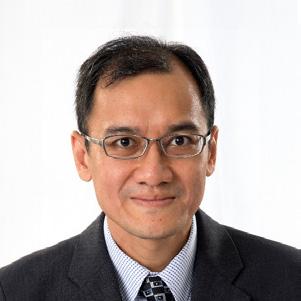
KP Chan Regional Technical Team Lead for Vitamins & Carotenoids BASF Animal Nutrition, Asia Pacific, on roles of astaxanthin in finfish aquaculture from a molecular perspective
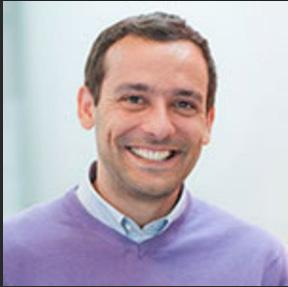
Rui Alexandre Gonçalves Deputy Director, Aquaculture Department, MAC Singapore Food Agency will discuss how Singapore is promoting marine fish for its food security efforts
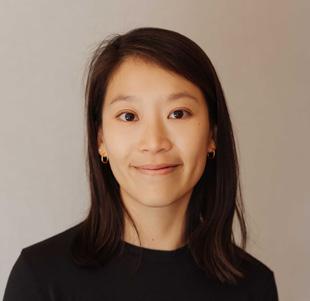
Linda Chen Associate Hatch Blue, on emerging protein-rich ingredients for aquaculture to expand the aquafeed ingredient basket
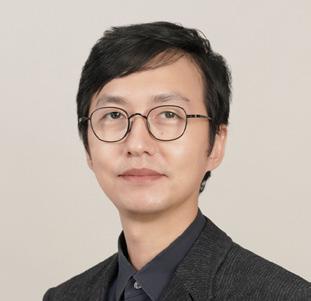
Yufan Zhang China Aqua BD Manager & SE Asia Technical Manager Alltech will give perspectives on China’s finfish industry –maintaining an industry amidst global and environmental challenges

Brett Glencross, Technical Director, IFFO will discuss the long-term sustainability of the whole industry, following the salmon model -traceability and sustainability of ingredients and how this plays into the carbonfootprint story

Susan Gibson-Kueh Associate Professor (Aquatic Animal Health) Tropical Futures Institute James Cook University Singapore will present “Diseases in tropical finfish aquaculture: busting myths, pushing borders.”
www.tarsaquaculture.com/speakers/
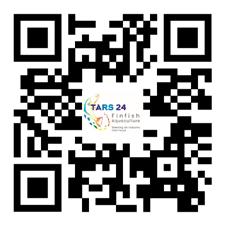

Health and Nutrition Asia 2024, held in co-location with VICTAM Asia and GRAPAS Asia marked the second edition of the show taking place in Bangkok, Thailand. Organisers said the event witnessed unprecedented success, setting new benchmarks with 8,722 professional visitors from 73 countries, with 252 exhibitors representing the animal health and nutrition industry, as well as the feed processing industry, from around the world. This year’s event showcased an array of innovations and facilitated key industry connections, underscoring its role as Asia’s most comprehensive exhibition for these sectors. The show experienced a remarkable surge in attendance, surpassing the previous edition by 42.5% with a notable increase both during the pre-registration period and onsite visitor numbers from the last edition, indicating the growing interest and importance of the event in the sector.
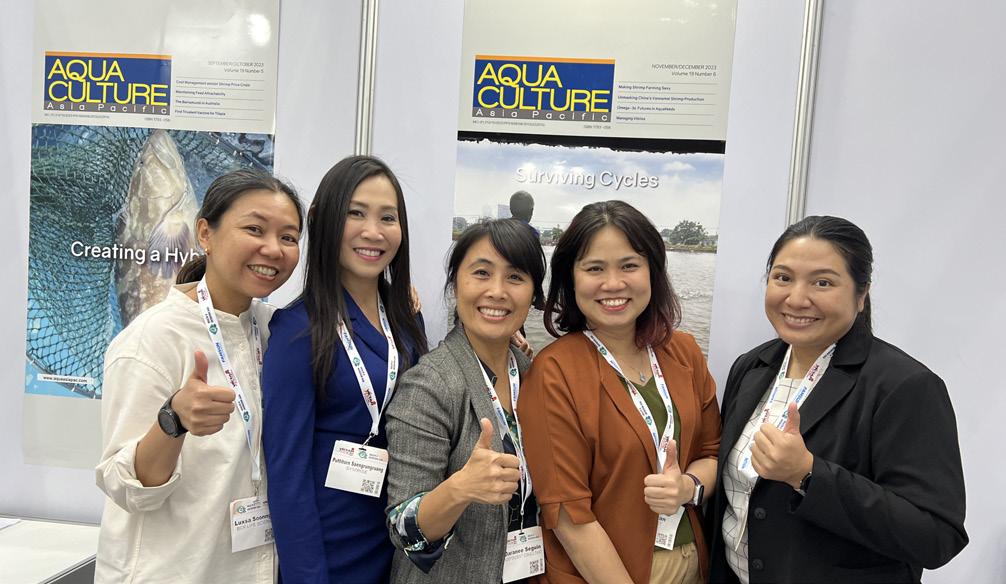
The 2024 edition welcomed a professional group of over 200 buyers, manufacturing representatives, and farm owners from Thailand and international markets such as India and Korea, demonstrating the event’s significance on a global scale. Additionally, the presence of more than 200 C-level executives and embassy dignitaries further highlighted the event’s positioning as an important gathering for industry leaders. Visitors involved in aquafeed comprised 14% of the total.
Health and Nutrition Asia 2024 also attracted significant media attention, with over 50 local and international media outlets exploring the latest technological advancements and innovations showcased by top brands. EW Nutrition and Andritz seized the opportunity to unveil their latest products and innovations, further enriching the event with cutting-edge offerings, among other top industry players present. In a historic move, UOB Bank joined a VIV Worldwide event for the first time, pointing to a new era of collaboration and opportunities within the livestock industry.
During the exhibition, there was a high-quality and extensive conference and technical seminar program. A total of 141 speakers from 14 countries delivered compelling presentations on a wide range of topics, ranging from the future of livestock feed to innovations in shrimp farming, feed safety, and milling technology.
The next edition of Health and Nutrition Asia, co-located with VICTAM Asia is scheduled from March 10-12, 2026, at BITEC in Bangkok, Thailand. www.viv.net/www. victamasia.com
The team from Wenger, from right, Curtis Strahm, Ramesh G, Paul Chen and Cliff Zhou.
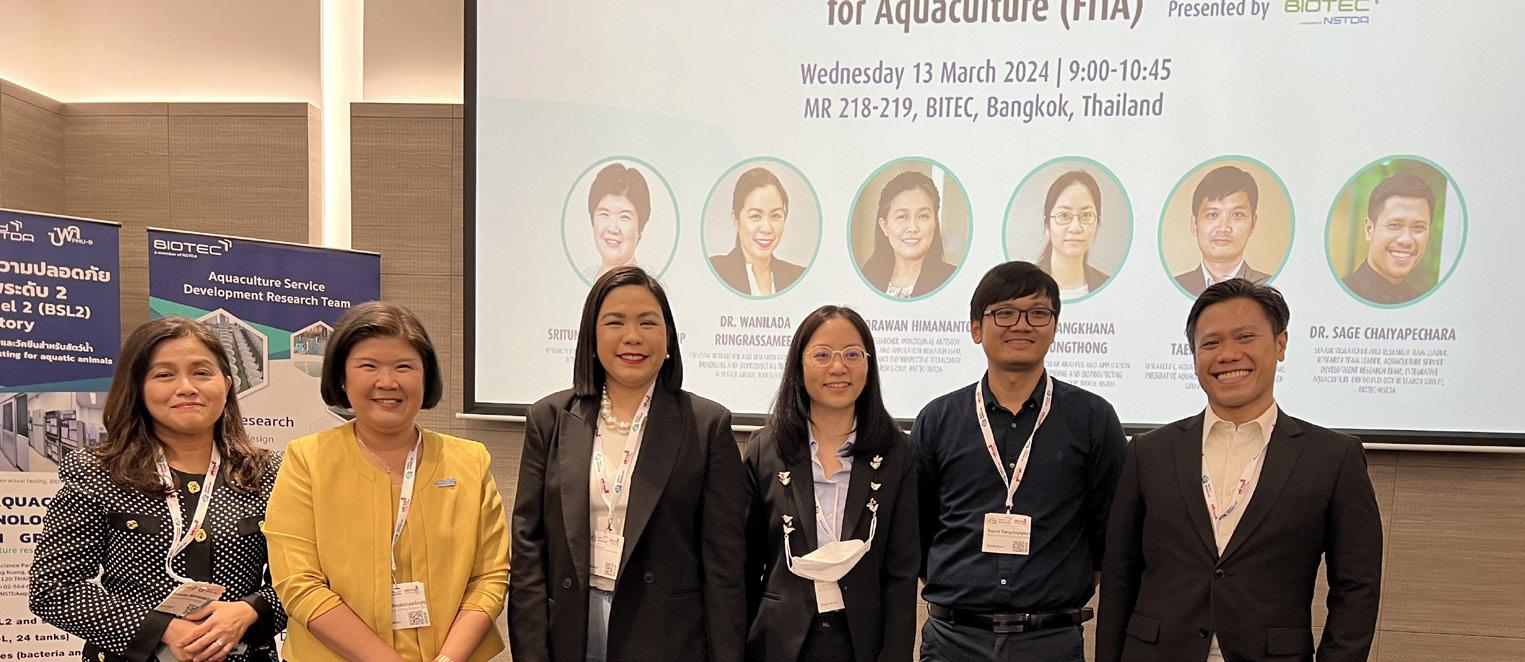
Aquaculture activities
Functional feed testing
Thailand’s National Center for Genetic Engineering and Biotechnology (BIOTEC), a member of the National Science and Technology Development Agency (NSTDA), has services on functional feed innovation and testing for aquaculture (FITA) to support entrepreneurs in aquaculture and also to accelerate delivery mechanisms. On March 13, to an audience of mainly additive and feed producers, the team led by Dr Kallaya Sritunyalucksana-Dangtip, Research Fellow at the Aquatic Animal Health Research Team outlined some facilities available such as those at Mahidol University: Penaeus monodon testing in South Thailand, advanced BSL2 laboratory to test probiotics, hatchery with a challenge unit in Chonburi and Shrimp Genetics Improvement Centre in Chachoengsao.
Dr Sage Chaiyapechara, Senior Researcher and Research Team Leader, said that the Aquaculture Service Development Research Team (AQST) was formed in 2019. The mission is to conduct research relating to various aspects of aquaculture, and support the industry with contract research, PCR disease diagnostic service etc. It does contract research starting from experimental design, feed preparation, feeding trials and pathogen challenges.
Additionally, it provides research support such as: regulatory compliance, prototype for pilot scale testing and scale up product development, marketing support and product registration.
In 2025, more facilities will be added to the AQST facility for product and vaccine testing, as well as a BSL2 laboratory with 27 tanks for pathogen challenge experiments, control environment (temperature and dissolved oxygen) and monitoring systems.
Microbiome insights
Dr Wanilada Rungrassamee, Principal Researcher and Research Group Director, Biosensing and Bioprospecting Technology Research Group is working on transforming shrimp and feed for sustainability via looking at the microbiome in the environment and shrimp gut. In 2024, Biotec is collaborating with KYTOS on sustainable and climate resilient aquaculture by innovative microbiome management. This involves microbiome health tools and farm management tools for zero water exchange.
Disease diagnostics
In diagnostic technology for smart tilapia farming, Dr Orawan Himananto, Senior Researcher, Monoclonal Antibody Production and Application Research Team is working on ICG strip test for Streptococcus agalactiae
The BIOTEC team from left, Orawan Himananto, Kallaya SritunyalucksanaDangtip, Wanilada Rungrassamee, Warangkhana Songsungthong, Suparat Taengchaiyaphum and Sage Chaiyapechara.
detection. “This is for Strep stereotype 1a and 3. This is an accurate diagnostic test for S. agalactiae ,” said Orawan. The ICG strip test is similar to ATK (COVID virus) and farmers can do the test themselves in the field, i.e. test before selling/ purchasing fry or juveniles.
In her work on genome analysis-assisted pathogenspecific diagnostics, Dr Warangkhana Songsungthong, Senior Researcher, Biomolecular Analysis and Application Research Team, is using the available genome data but said that long genome can be complicated and tedious to work with. In her work on shrimp immunity testing and disease challenge, Dr Suparat Taengchaiyaphum, Researcher, Aquatic Animal Health Research Team, Integrative Aquaculture Biotechnology Research Group works on selection of immune parameters. She showed how feed additives enhanced haemocytes phagocytic activity.
Tilapia talk
On March 23, there was a panel on opportunities for genetic improvement of aquatic animals in Thailand. Speakers were Skorn Koonawootrittriron, Associate Professor, Kasetsart University, Amorn Luengnaruemitchai, Manit Genetics and Uthairat Na-Nakorn, Vice President, Kasetsart University Alumni. The discussion covered the history and current status of genetic improvement of the tilapia in Thailand.
Amorn who runs his family company in Petchaburi, said since 2007, he worked with Akvaforsk on a breeding program. Today, he supplies 95% to local farmers and exports to Laos, Malaysia, Vietnam and the Philippines. He has a nucleus breeding centre and a production base. The selection is for multiple traits from disease resistance to growth, according to market demand. “As a business entrepreneur, the investment is for long term.”
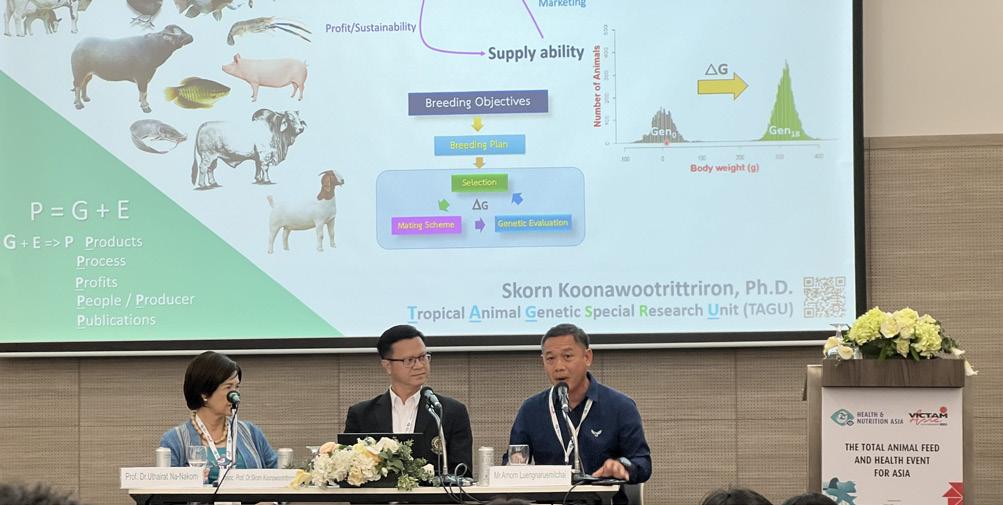
A first for the Thai Aquaculture Business Association (TABA) at Health and Nutrition Asia was two presentations on shrimp farming. On March 12, Soraphat Panakorn, Vice President gave his views on the challenges in the shrimp industry, within the region and compared with what is happening in Ecuador. On the following day, he discussed in detail farming practices.
He started with a global overview of demand and supply, reflecting that in 2023, supply exceeded demand (5.2 million tonnes against 4.6 million tonnes) and recently the average farm gate price dropped 10-30% ( USD0.6-3/kg).
In terms of production trends in 2024, Sorapat gave the following synopsis for each country:
China: Production is expected to decrease from small green house farm models which have been severely impacted by climate change. Production will be constrained by translucent post larvae disease (TPD), Vibrio and fungi. It is anticipated that farmers will leave the business because of thin margins, high production costs and competition with cheaper Ecuadorian shrimp imports.
Ecuador: Smaller farms are struggling with rising costs of production and may stop production while medium sized farms are being sold. Production could be past its peak and maybe reduced by 400,000 tonnes. Asian-like disease may happen because of climatic effects.
Vietnam: With ponds aging, rising cost of production, high feed costs, losses because of disease, lower margins and TPD expected to be serious, production is expected to decrease over two years.
Indonesia: The situation is in a state of continuous stagnation. Production techniques may need to be modified because of several production problems, mainly diseases. The newly opened areas are beginning to face problems.
India: Soraphat believes India is in the best situation among producers in Asia and may have 10% more production in 2024. Production costs are low due to low stocking density. The strategy to use robust genetics is helping industry.
In India, Malaysia, China and Thailand, the production of black tiger has been increasing with the strategy to switch to black tiger shrimp because of problems with vannamei shrimp. The issue is market demand and there is likelihood of an oversupply.


In the 1H 2024, Soraphat expects production to drop and said that with current prices, less than 30% of farms are profitable. For 2024, global production is estimated at 4.65 million tonnes.
In terms of demand, he expects that in the US, this will remain at 750,000 tonnes. Demand in the EU and Japan will be less by 10% to 650,000 tonnes and 180,000 tonnes, respectively. China’s demand will be less by 5% but with stocks available at 300,000 tonnes and China to produce 800,000 tonnes domestically, the import volume is estimated at 600-700,000 tonnes. Total global demand is estimated at 4.4 million tonnes.
The message for Thailand is to maintain or lower production, increase domestic consumption by around 50% and focus on producing premium shrimp in terms of colour, taste and texture. Soraphat suggested more value-added shrimp for local markets. Farms in Thailand should retain the low-cost practice, sustainable, and safety production techniques. Thailand can become a key supplier for high-quality shrimp in global markets.
The conclusion is that current prices are a new norm and production needs to be lower and aligned with global economic conditions. Key is production cost.
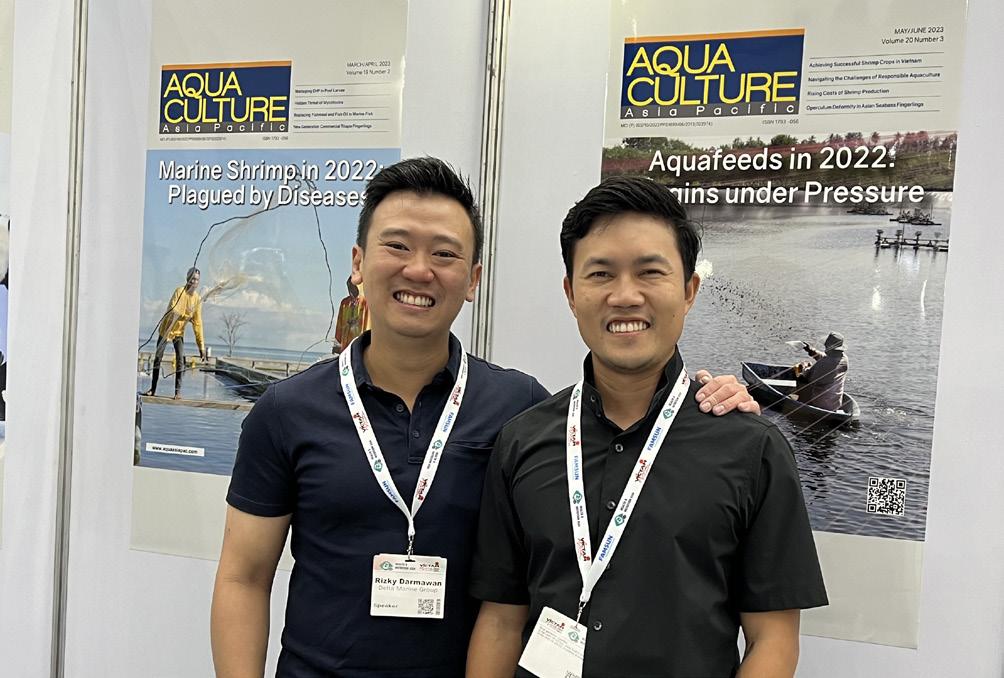 Nonthawit Sae-Hia, Nukul Farm and Somthida Pakdeepak, Ao Kho Farm with Ronnie Tan, USGC, Malaysia and Kim Tran, Grobest Vietnam.
Soraphat Panakorn, Vice President of the Thai Aquaculture Business Association (TABA) had two seminars on shrimp farming at the Health and Nutrition Asia 2024.
Nonthawit Sae-Hia, Nukul Farm and Somthida Pakdeepak, Ao Kho Farm with Ronnie Tan, USGC, Malaysia and Kim Tran, Grobest Vietnam.
Soraphat Panakorn, Vice President of the Thai Aquaculture Business Association (TABA) had two seminars on shrimp farming at the Health and Nutrition Asia 2024.
The large presence of Vietnam’s shrimp farming industry was an opportunity for Cargill Vietnam to feature its pioneering range of extruded feeds for vannamei shrimp on March 20 at Vietshrimp International 2024 held in Ca Mau in the Mekong Delta from March 20-22. In Vietnam, Cargill produces shrimp feeds exclusively from the company’s aquafeed mill in Dong Thap province.
In shrimp aquaculture in Vietnam as well as in other parts of Southeast Asia, China and India, feed millers and farmers are more familiar with pelletisation and pelleted feeds, respectively. However, at the Cargill Vietnam booth, Lu Yuan, Regional Managing Director – APAC, Cargill Aquaculture Nutrition (CQN) discussed how she sees the advantages of using extruded feeds and the need to change feed management in Vietnam. “The current situation with low shrimp prices is challenging for shrimp farmers. Cargill is constantly looking for optimal nutritional solutions to enhance profitability for shrimp farmers and we are promoting our slow sinking feed produced via our extrusion technology. We see several advantages of using extruded feeds such as higher nutrient performance, lower feed conversion rate, stable and better water quality throughout the cycle and less nutrients leaching which is good for the shrimp and the environment.
“We are pioneering a holistic approach for shrimp farming through Nutrition, Health and Farming support by digital development for Vietnam as we want to see the industry changing to using extruded shrimp feeds. Next is the market in Thailand. Both these markets appreciate technology and science-based solutions.”
Lu Yuan added, “Admittedly, feed production cost using the extrusion process is higher. But we can be competitive in terms of improvement in shrimp performance (+10% ADG), and better feed conversion ratio (FCR) by 3-5%. The benefit for the farmer is faster harvest by a week. We help produce healthy shrimp with firm body and high muscle ratio for export. Extrusion gives us the options to use a variety of feed ingredients which translates into better choices for farmers as we focus on precision nutrition especially on % protein and energy levels as well as feed quality standards.”
Extruded shrimp feeds are becoming the norm in the Latin American shrimp industry. Globally, Cargill has developed the AQUAXCEL™ range of extruded feeds introduced to farms in 2018. These are very popular in Ecuador, due to high digestibility, low leaching, and high efficiency in technified farms. Extrusion increases starch gelatinisation and reduces heat sensitive anti-nutritional factors. For Vietnam, the Aquaxcel range is a comprehensive nutritional solution for semi-intensive, intensive and super intensive shrimp farming models.
Cargill has partnered with some key customer farms to implement extruded shrimp feed trials, which leverage
Cargill’s latest innovations and apply the best possible solutions to grow healthy shrimp and increase profits. Technical teams have introduced extruded feeds to distributors and farms via seminars.
According to Lu Yuan, the extruded feed is part of the “Master Farmer Program.” Largely promoted at Vietshrimp 2024, is a technical program developed by Cargill. It has transformed the traditional farming of its farmers such as Ta Duc Nghia in Bac Lieu or Tran Van Tien in Ca Mau. This facilitates the right environment for a faster production cycle, more shrimp per unit area, and increased profitability. Under its holistic approach for shrimp farming that includes Nutrition (the right nutrition and extruded feeds), Health and Farming, the aim of this approach is to harvest the highest biomass.
During the conference, Dr Nguyen Lay, Technology Application Manager at Cargill Vietnam, described optimal nutritional solutions with the combination of Cargill nutrition system and extrusion technology. The proposals for feeds depend on the farming model, pond density and expectation of shrimp farmers built from a deep understanding of nutrient contents of ingredients, shrimp requirements and commercial expertise
Aquaxcel product portfolio
The range of extruded feeds include Nurcare for the nursery phase, with 50% crude protein (CP) and 7% crude fat (CF) starter feeds: meal for PL9-PL12, 0.3mm for PL13-PL19; 0.6mm for PL20-PL26 and 0.8mm for PL27PL29. The strategy here is to provide essential nutrition for uniform growth, boost immunity and survival rate and reduce stress over the 21-day nursery period. The target is to achieve an ADG of 0.03g/day and survival rate of 95% at a density of 1,000-3,000PL/m3 or an ADG of 0.05g/day with stocking at 500PL/m3 over 25 days.
Next is the grow-out stages where the option is to use economy, standard, premium or functional feeds. The grow-out feed options depend on the farming model, density and final target. In general, the FCR ranges from 1.24 to 1.30 at survival rates of more than 80%.
Lay showed an increase in growth at ADG of 0.35g/day when combining Nurcare and Smart Shield and FCR of 1.24 for size 31/kg over 90 days of culture, versus an ADG of 0.29g/day at FCR of 1.3 using a using a standard feed. The stocking density was 200 shrimp/m2. With Aquaxcel functional feed, the farmers could shorten their time to the break-even point by 10 days of culture and enhance more than 30% of the profits after 90 days of culture. In a study conducted at the Ca Mau Division, Institute of Aquaculture 2, it was reported that farmers could save up to 20% of feed costs per crop using Aquaxcel product compared to using regular feed. Another benefit of the extruded feed is an increase in intestinal wall thickness compared to conventional pellet feeding.
Lu Yuan said, “Complementing all these, investing in the highest quality feed in the early stages, from the larvae stage, is vital for faster growth and better survival rates. Liqualife covers the hatchery stages while the rest are covered by Aquaxcel portfolio.”
As of today, Cargill is the only shrimp feed company in Vietnam investing and focussing on extrusion for shrimp feeds. www.cargill.com.vn
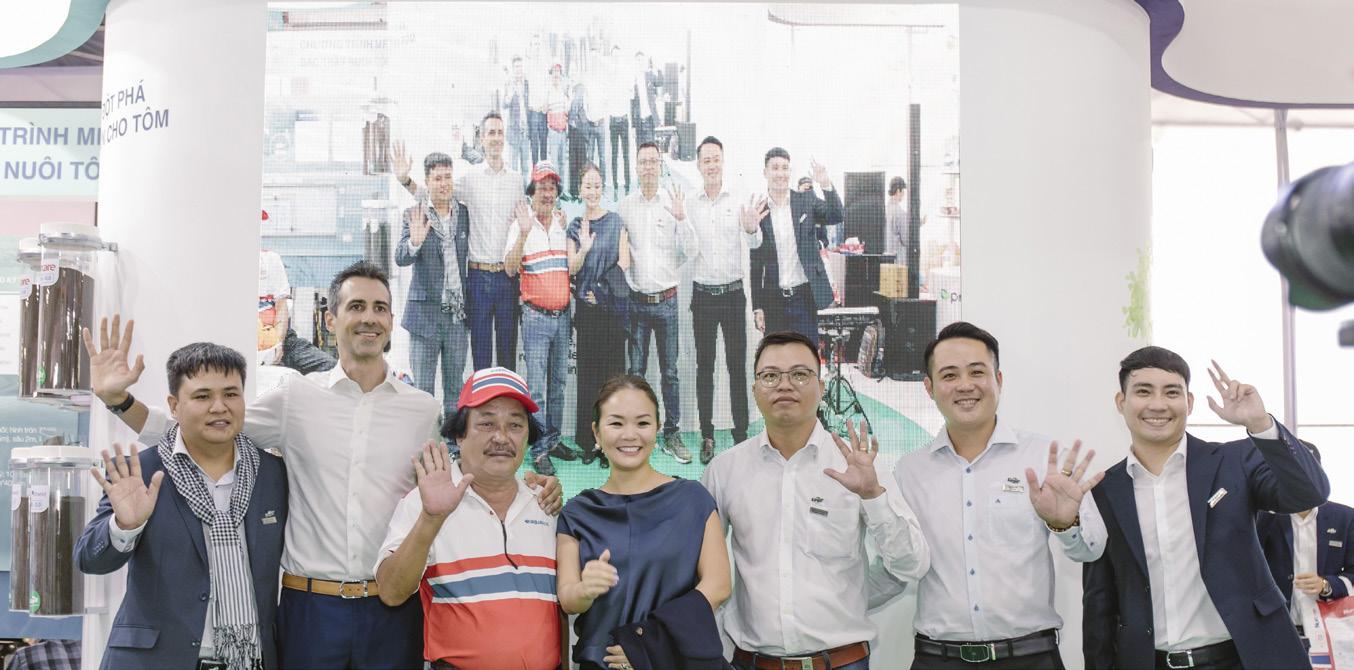
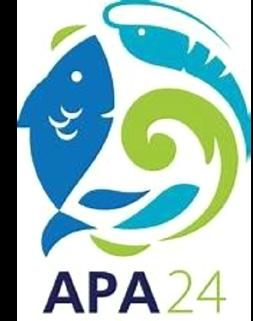
he APA2024 international event will be held at the Grand City Hall Convention and Exhibition Centre Surabaya, Indonesia from July 2-5, 2024. An exciting program will be offered at Asian Pacific Aquaculture 2024. Organisers have announced speakers for the plenary session:
On the first day of event on Wednesday July 3, Professor Dr Rokhmin Dahuri, the President of Indonesia Aquaculture Society and the former Minister of Marine Affairs and Fisheries Indonesia (2001-2004) will present. Next will be Dr J.K. Jena, Deputy Director General (Fisheries Science) at the Indian Council of Agricultural Research (ICAR), India since January 2016. Jena will present “Meeting the Aspirations of Blue Transformation: R&D as Key Driver ”.
To date, more than 200 booths slots or 90% of the booth have been sold and 200s of abstracts have already been submitted. Registration for the conference remains open with early bird categories still available.
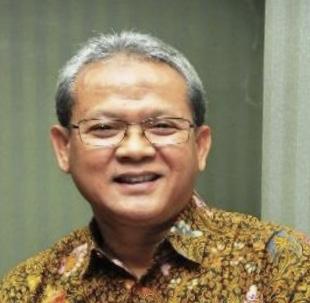
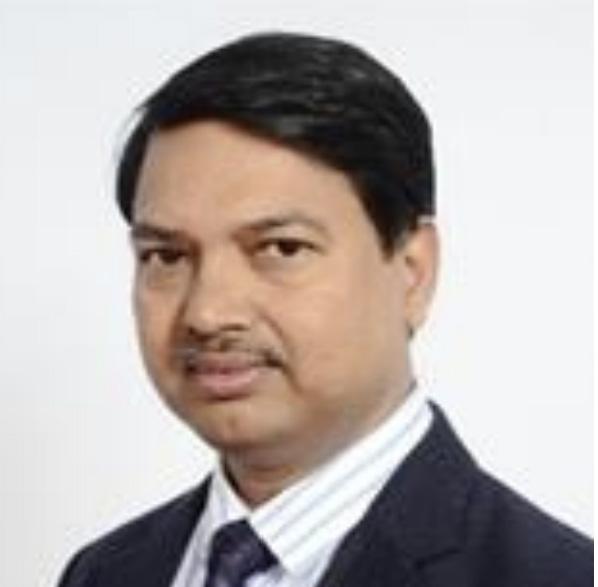
APC-WAS announced that interested attendees residing in Asian Pacific countries qualify for a special discounted registration rate for the full conference at APA24. To receive this special rate, they must reside in an Asian Pacific country, for students they must be a full-time college or university student and provide a copy of a student ID upon request.
To register at this rate, go to www.was.org and choose “Asian Pacific Aquaculture 2024” on the webpage and fill the registration form. Alternatively, contact www.was.org or apcsec@was.org
For conference and registration contact John Cooksey (worldaqua@was.org) For trade show and sponsorship contact Mario Stael (mario@marevent.com)
WAS also announced that Blue Genetics is the Silver Sponsor for APA24. Blue Genetics is an international company specialising in genetic selection for the white leg shrimp ( Litopenaeus vannamei ), providing high quality specific pathogen free (SPF) broodstock to international markets. Blue Genetics is a subsidiary of Groupe Grimaud, one of the world leaders in multispecies animal genetic selection, vaccines, and innovative proteins. In 2022 Blue Genetics merged with Sea Products Development, a well-established shrimp breeding company based in Texas, USA. This merger led to a consolidated company that through obvious synergies is better placed to meet the challenges of the shrimp industry. The name of the US company is now being changed into Blue Genetics USA.
Professor Dr Rokhmin Dahuri Dr J.K. Jena Lu Yuan, (middle) and Maxime Hilbert, Country Director - Cargill Aqua Vietnam, Animal Nutrition & Health (second left), with the Cargill team and some customers at Vietshrimp 2024.
Taiwan-based Innocreate Bioscience has a scientific approach to shrimp farming. This includes prevention of diseases, and the detection of viruses is key to good field management. At Vietshrimp, held in March, in Ca Mau, the company displayed its white spot syndrome virus -WSSV RP rapid test kit. This provides rapid detection with test results available within 15-30 minutes.
The test kit provides shrimp farmers with a highly efficient and effective tool to assess the risk of virus infection without additional instruments and professional training. The sensitivity is high which means that detection requires a low copy number of viruses. It was certified by the WOAH (OIE) in May 2023 as fit for the qualitative detection of WSSV antigen. It provides field-based confirmatory diagnosis of clinical cases and estimates the prevalence of infection to facilitate risk analysis in shrimp farm production systems to aid in management practices.
WSSV is a highly infectious agent that causes mass mortality in farmed penaeid shrimp worldwide. There are currently no vaccines or treatments for WSSV, and therefore accurate
diagnostic strategies are critical for the management of shrimp farms. This WSSV RP rapid test kit is a risk management tool based on immunoassay for shrimp aquaculture. This kit can be transported and stored at room temperature, and the cost is lower than PCR-based tests. It can be used to estimate the prevalence of WSSV infection and as an auxiliary tool for epidemiological evaluation (Hsu et al, 2022).
Hsu explained the beginnings of Innocreate Bioscience. “In the early 2000s, we began a collaboration with Dr Dr Grace Chu-Fang Lo, now at National Cheng Kung University, Taiwan by providing contract research services through Seeing Bioscience, an ISO 17025 testing laboratory. In 2005, we identified detection targets for WSSV RP from the high-expression proteins of the virus discovered by Lo.
“In 2014, Innocreate Bioscience was established to commercialise the R&D outcomes from Seeing Bioscience. Since then, we continue to independently conduct material and assay development for commercialisation. Today, Innocreate Bioscience, transforms academic research into products, collaborates closely with National Cheng Kung University and National Taiwan Ocean University, Taiwan.”
The company also offers nucleic acid diagnostic kits, - QD series QPCR kits. These are high-sensitivity and high-specificity nucleic acid quantitative detection kits for laboratory use. They are used for major pathogens, WSSV/AHPND (acute hepatopancreatic necrosis/Enterocytozoon hepatopenaei (EHP)/infectious hypodermal and hematopoietic necrosis (IHHNV). They give accurate quantification and high throughput testing. These diagnostic kits with quick and accurate test results, provide farmers with early detection of pathogens and prevent losses. They are highly sensitive with a limit of detection of up to 10 copies. Test results are available within 90 minutes. www.innocreatebio.com
Reference
Jeff Chia-Kai Hsu, Te-Ken Hsu, Jiji Kannan, Han-Ching Wang, Anchalee Tassanakajon, Li-Li Chen, Diagnostic performance of a Rapid Test Kit for white spot syndrome virus (WSSV), Aquaculture, Volume 558, 2022, 738379, https://doi.org/10.1016/j.aquaculture.2022.738379.

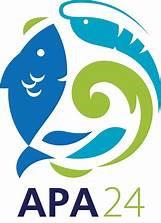

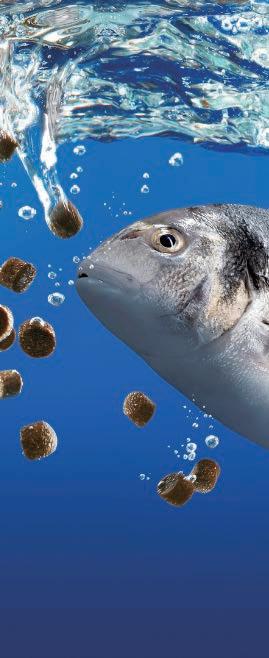

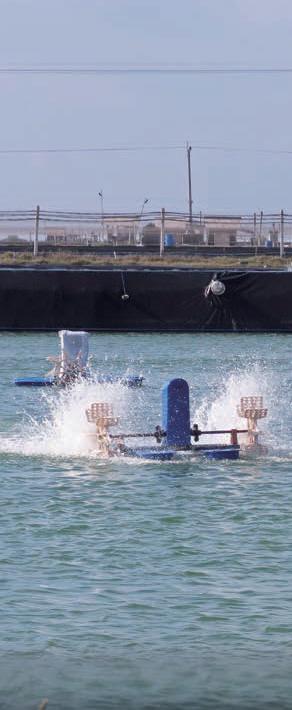

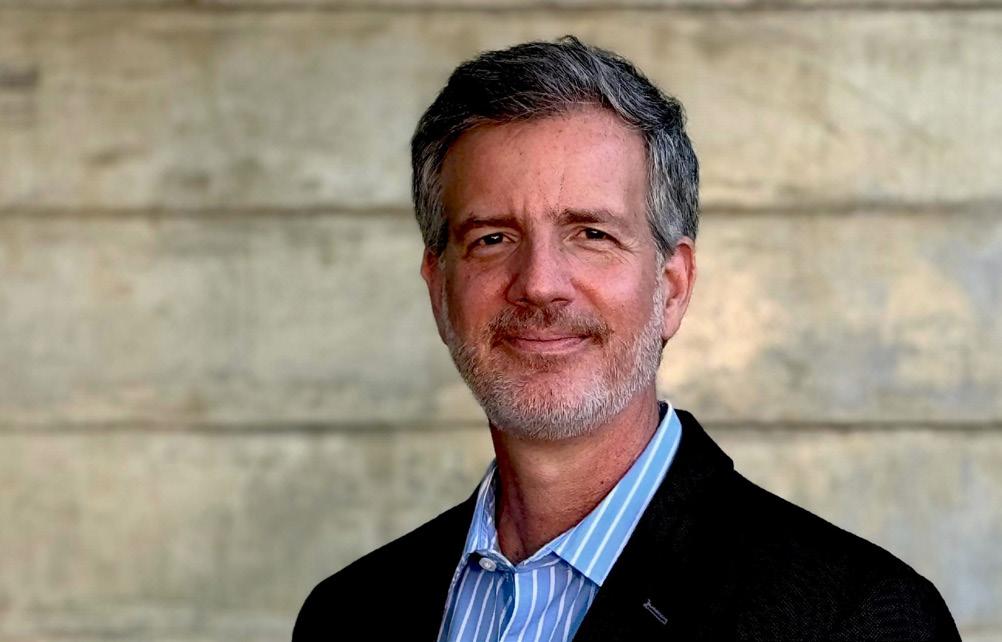
GenoMar Genetics Group has announced that Gustavo Bozano has been appointed as the new CEO of GenoMar Genetics Group from May 1, 2024. Gustavo is a Brazilian citizen and has more than 30 years of experience from the Brazilian aquaculture industry where he has held various technical, managerial and leadership positions.
For 19 years, he has been the Managing Partner at AquaLagus Consultoria e Representação Agropecuária. The company has particularly been engaged in consultancies regarding operational and economic
analysis of biological performance in tilapia production. In addition, Gustavo has also been working as Technical and Operations Director at Mcassab, a Brazilian tilapia producer and as Commercial and Marketing Manager for animal feed at InVivo Group, a Food and Beverage Manufacturing company.
He holds a Master and Doctor of Science in Animal Science from the Universidade de São Paulo, Brazil. He also has studied business strategy at the University of La Verne, California, USA.
“I am very excited about joining GenoMar to further develop its position as the leading tilapia genetics supplier worldwide. I have experienced the value of genetics and efficient distribution of genetic products to be a key contributor to a healthy and profitable tilapia industry,” said Gustavo.
“We are pleased that Gustavo has accepted the position as CEO of GenoMar,” said Chairman of the board Odd Magne Rødseth. “His reputation in the tilapia industry and extensive experience covering the entire tilapia value chain, will play a decisive role in the process of continuous improvement of GenoMar products and services to our customers as well as developing the team’s skills and competences.” www.genomar.com

Alejandro Tola Alvarez, who has served as CEO in GenoMar Genetics Group for the last 7 years, has been appointed as Executive Director for Non-Salmonids in Blue Future Holding . This is a seafood investment company focusing on companies that can contribute to more sustainability, fish welfare and growth in the aquaculture industry. It is wholly owned by EW Group gmbh, a global leader in animal, fish and plant genetics and breeding.
Alejandro’s history in GenoMar spans over a period of 18 years where he worked on developing GenoMar’s
technology and operations in breeding and distribution, first as COO in Asia and later as CTO and CEO, positioning GenoMar as a premium brand both in Asia and LATAM and a global leader in tilapia genetics distribution.
“I want to thank the board for giving me the opportunity to lead GenoMar for 7 years. I feel really proud of our contribution to a more sustainable and profitable global aquaculture through genetics and seed production. Now, I am looking forward to new opportunities within the group,” said Alejandro.
On behalf of the board and all the employees, I would like to thank Alejandro for his strong commitment and contribution. He has been the key person leading the company in a period of great innovation and expansion of our tilapia operations in Asia and LATAM,” said Rødseth.
In his new role, Alejandro will use his comprehensive industrial experience and network in global aquaculture to support Blue Future Holding’s efforts at identifying, evaluating, and integrating new investment opportunities. He will also support current portfolio companies in their scale-up and growth journeys, including GenoMar where he will be part of the Board of Directors and continue to perform as Director of Breeding and R&D.
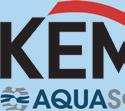
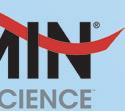



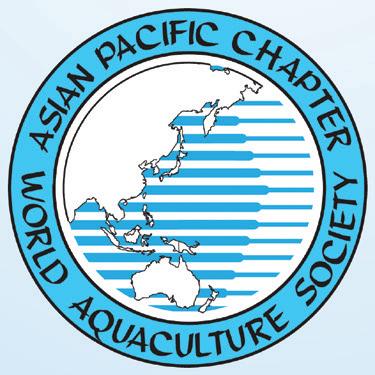
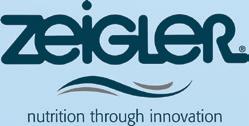
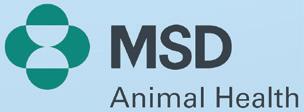



T he aquaculture and fisheries industry is undergoing a paradigm shift, prioritising sustainability and embracing innovative technologies to meet the burgeoning demand for seafood. The International Aquaculture and Fisheries Expo Taiwan (IAFET), scheduled for September 11-13, 2024, in Taipei, Taiwan, stands as a pivotal platform for exploring these exciting developments.
Guided by the five pillars of “SMART - Sustainability, Market, Advance, Resilience, and Technology,” IAFET invites you to be part of this event and witness the forwardthinking future of aquaculture and fisheries. Here’s what you can expect:
• Explore cutting-edge trends and innovation: Digitalisation plays a crucial role in aquaculture and fisheries. Leverage the power of the Internet of Things (IoT) and big data analytics to improve production efficiency, cost-effectiveness, and resource management. Meet with key players in the sector to explore the newest technologies shaping the industry.
• Engage with industry leaders: Delve into tailored discussions addressing current challenges in aquaculture and fisheries. Participate in expert-led forums to explore solutions, exchange ideas, and foster new collaborations.
• An exclusive hosted buyer’s program: Enjoy up to 2-nights hotel accommodation, effortless business scheduling and procurement negotiation assistance, and other exclusive perks before and during the 3-day event.

The International Aquaculture & Fisheries Expo Taiwan is a prime opportunity for businesses to tap into the expanding market for sustainable solutions in the fisheries industry. Focused on cutting-edge technologies and responsible practices, IAFET offers valuable networking opportunities, serving as a gateway to the industry’s future.
For more information on the overseas buyer program, https://www.taiwanagriweek.com/en/article/OverseasBuyer-Invitation/
May 27-31
XXI International Symposium on Fish Nutrition and Feeding(ISFNF) Puerto Vallarta, Mexico isfnf2024.com
June 5-6
Shrimp Aquaculture Conference Bali, Indonesia sac.pmindo.com
June 27-29
Shrimp Summit Chennai, India responsibleseafood.org
JULY 2-5
Asian Pacific Aquaculture 2024 (APA24) Surabaya, Indonesia was.org
July 8-12
9th Annual Practical Short Course on Extruded Pet Foods and Treats (hybrid format) Texas A&M University, USA https://cvent.me/3KGKRQ
August 14-15
TARS 2024: Finfish Aquaculture Bangkok, Thailand tarsaquaculture.com
August 21-23
VIETFISH 2024 Ho Chi Minh City vietfish.com.vn/en
August 26-30
AQUA24
Copenhagen, Denmark was.org
September 3-5
Global Shrimp Forum 2024 Utrecht, The Netherlands shrimp-forum.com


September 9-12
larvi 2024
Ostend, Belgium aquaculture.UGent.be/
September 11-13
10th Aquaculture and Fisheries Expo Taiwan (IAFET) 2024 Taipei taiwanagriweek.com/en/
September 17-19
SPACE Rennes, France space.fr
September 24-27
Latin American & & Caribbean Aquaculture 2024 Medellin, Colombia was.org
November 20-23
AFRAQ24
Hammamet, Tunisia was.org

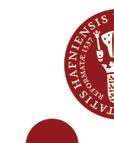

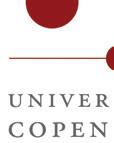

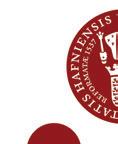

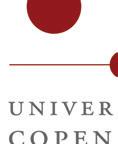
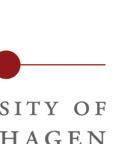


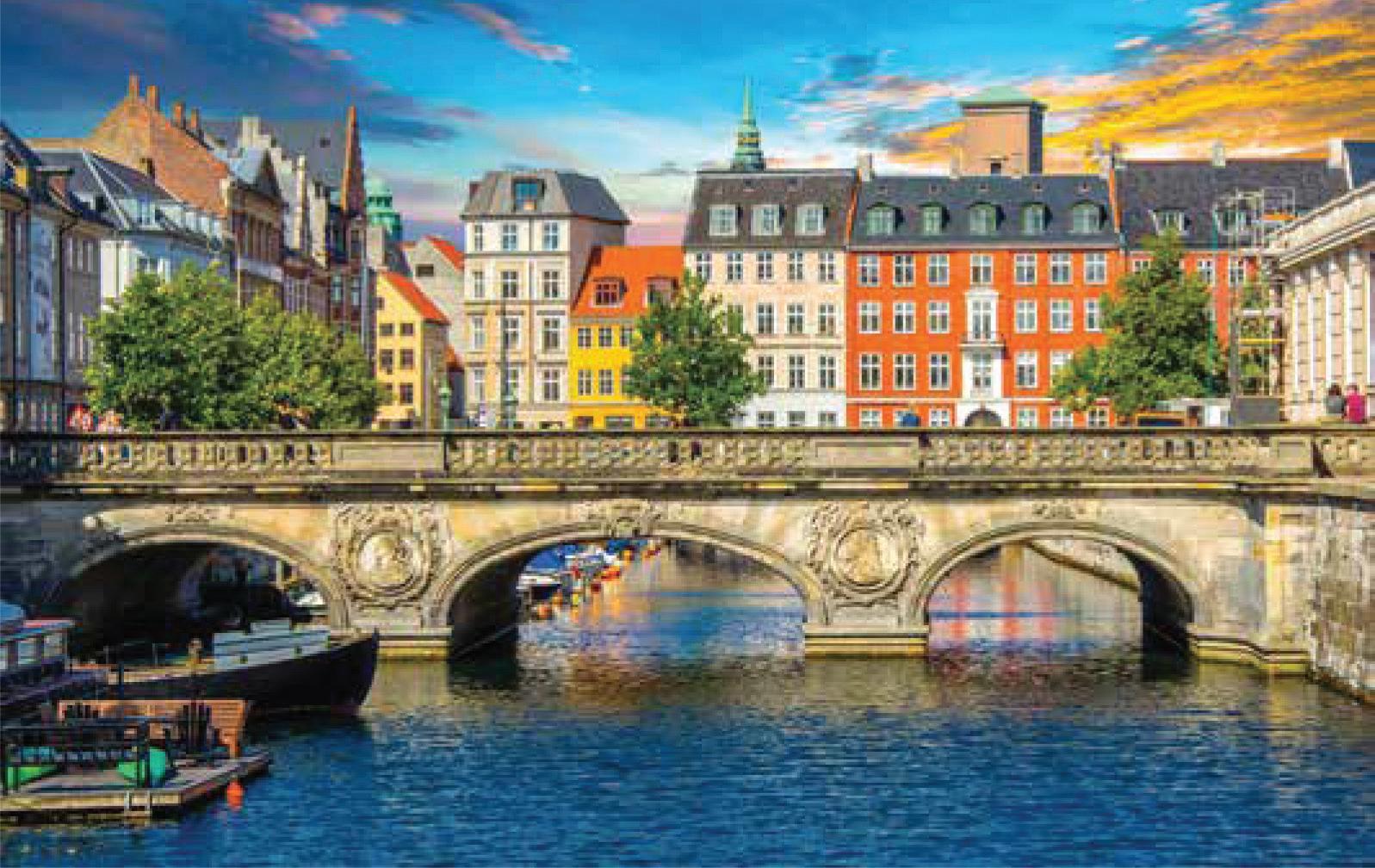



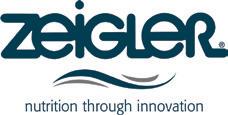
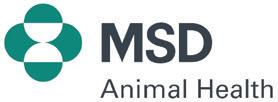
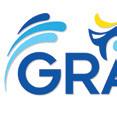


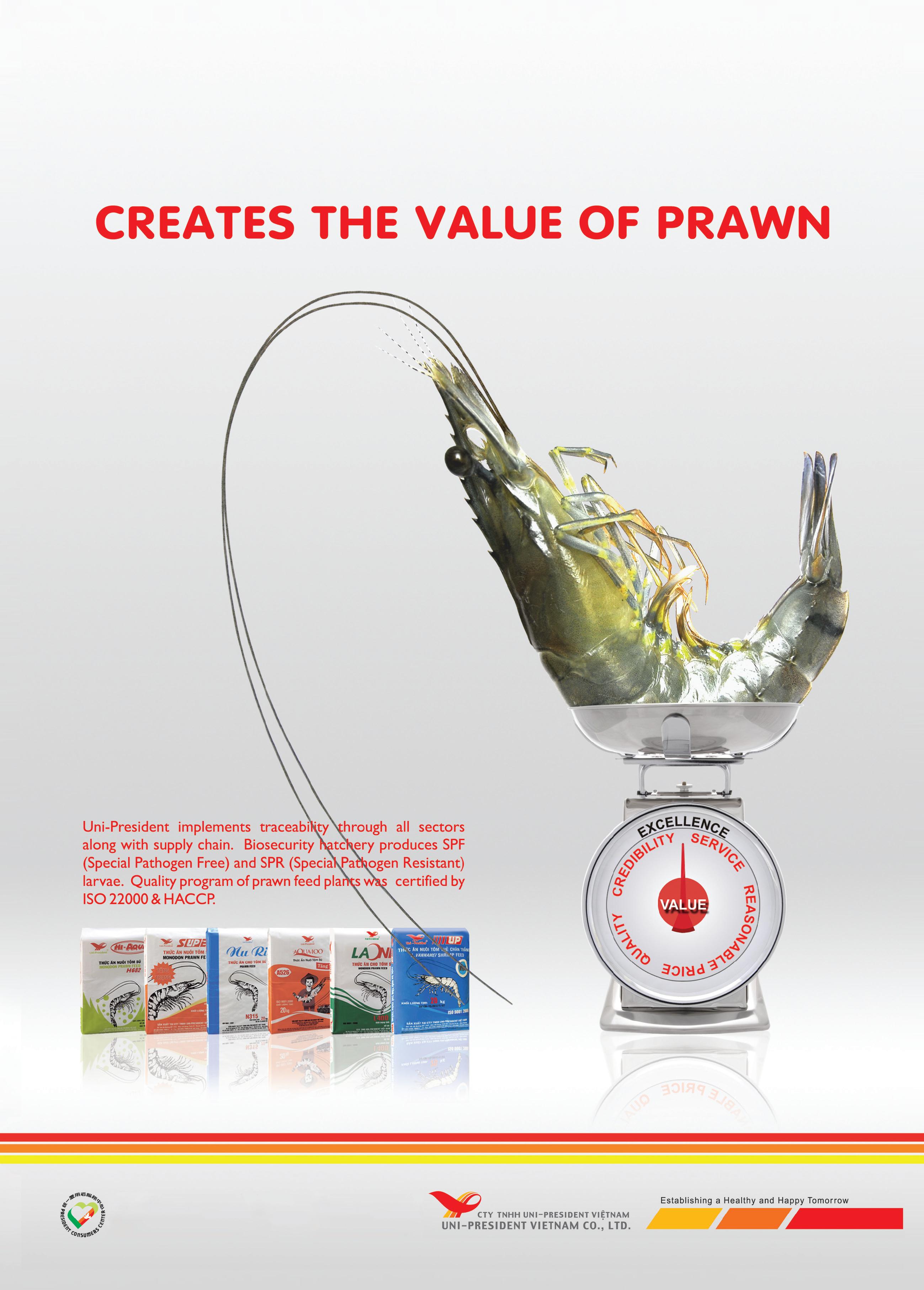
• No.16-18-20, DT743 Road, Song Than II Industrial Zone, Di An Ward, Di An City, Binh Duong Province, Vietnam
• Tel: +84-274-3790811 (Ext: 1711)
• Fax: +84-274-3790819
• Email: aquafeed@upvn.com.vn
